The Opera House, also commonly known as Town Hall, served the citizens of Hartland for over 125 years as a landmark venue in town for numerous events and purposes. The magnificent building, built twice, will long be remembered as a part of Hartland’s history.
*
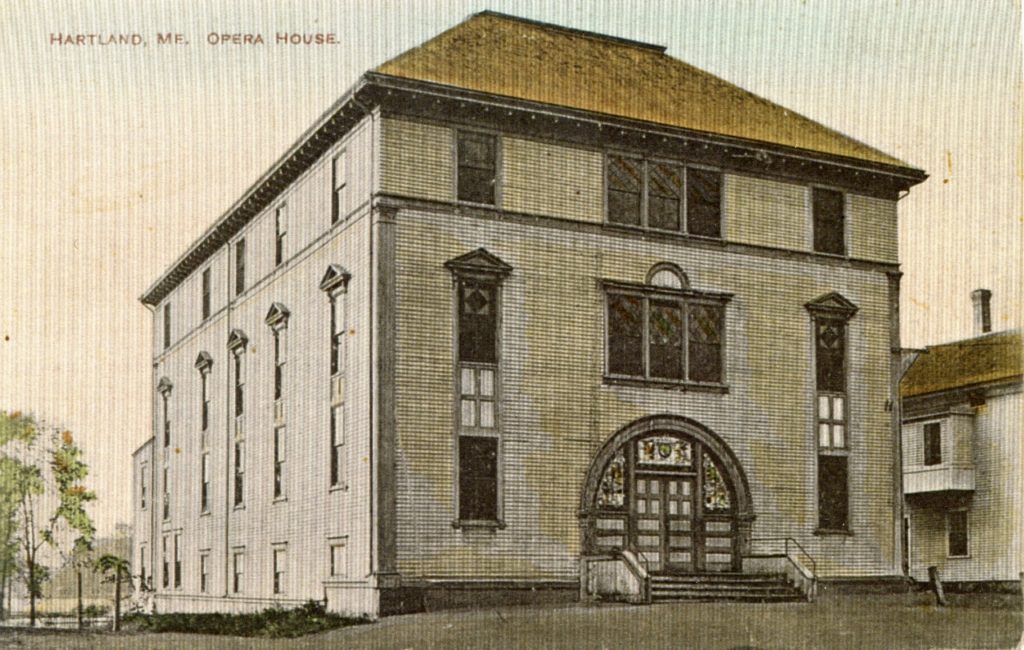
Hartland Opera House
*
Located on Academy Street, it served throughout its existence as the home of Hartland’s town government, Mason, Rebekah, and I. O. O. F. Lodges. It has been a venue for dozens of Town Meetings, Federal, State & Local Voting, Hartland Academy graduations, Fire Department Balls, movies, weddings, dances, traveling performances, grammar school & high school plays, assemblies and various other public gatherings.
*
~ The Long (Long) Debate to Build a Town Hall ~
By Bruce A. Fowler ~ Hartland Historical Society 2016
The citizens of Hartland fiercely debated the location of a dedicated Town Hall for decades following the town’s incorporation in 1820. Time after time the issue was brought to vote at annual Town Meetings but was always defeated; most certainly at least in part of the prevailing sentiment of the citizens living in the outlying areas of the Village.
The populations of West Hartland and North Hartland in the early years of settlement were equal or even greater to those within the Village and not all citizens considered it to be the “center” of Hartland. Because of this population equality, Town Meetings were held for several decades alternatively in West Hartland, North Hartland and in the Village.
The idea of a Town Hall located in the Village had strong opposition from the citizens of the outlying areas. Partly, but quite importantly, because of the difficulty of travel these early pioneers faced with nothing but basically well traveled paths and the available transportation by either horse or on foot. Several miles in those days meant several hours of potentially hard travel both ways. As noted at one Town Meeting by a particularly disgruntled West Hartland resident, “We have to cross the Alps (Huff Hill) to get to town!”
One of several factors was the original deed line boundaries of the Village area itself. The 30,000 acre deed obtained by John Warren in 1799 followed the layout of a 1792 survey when natural boundaries, such as rivers, were commonly ignored as practical township lines. Because of this, much of the Village was originally part of St. Albans including all the area on the St. Albans side of the Sebasticook River until 1842.
The majority of the early settlers from 1802-1830 arrived here from Southern Maine, Massachusetts and New Hampshire lured by the opportunity to own their own land for a fairly cheap price. Many of these settlers were hardworking craftsmen and farmers; self sufficient and self reliable for their personal needs of the day. It was well before the beginning of the industrial revolution that brought people to the urban centers of these new settlements in Maine.
By the 1840s, there were several successful businesses located in the Village however they employed only a dozen or usually less employees each. Up until the early 1860s, there was not a singular industry in the Village large enough to consider it a pinnacle of commerce for the entire region. At the same time there were small stores, schools, sawmills, brickyards, gristmills, etc., in North Hartland and West Hartland giving equal opportunity to those residents without traveling the long distance to the Village for work, education or basic goods.
One big factor the Village had in its favor was its location on a major water source capable of providing unlimited power to industry in the days before steam or electricity. This natural power resource certainly influenced Archibald Linn to build his Linn Woolen Mill in the Village in 1862.
The new mill undoubtedly swayed the popular opinion pendulum to where the business and political center of Hartland would be located. Linn provided an opportunity for well over 100 full time jobs bringing many folks from the outlying regions into the Village on a regular basis with many of them building new homes and moving there. The new mill also influenced substantial business growth in the Village especially on Commercial Street & Main Street where a dozen new stores offering various services opened within the following decade.
By the early 1880s, several men in the Village wielded great financial power and political influence including Archibald Linn, James Fuller Jr, Greenville Shaw, Amasa Moor and several others who were determined to locate the town’s political & business affairs in the Village. In 1891, a group of them formed the Hartland Town Hall Association and within a year a new Town Hall was built in the Village.
*
This is the only known photo of the original Town Hall ~ Opera House taken between March of 1892 and June of 1897.
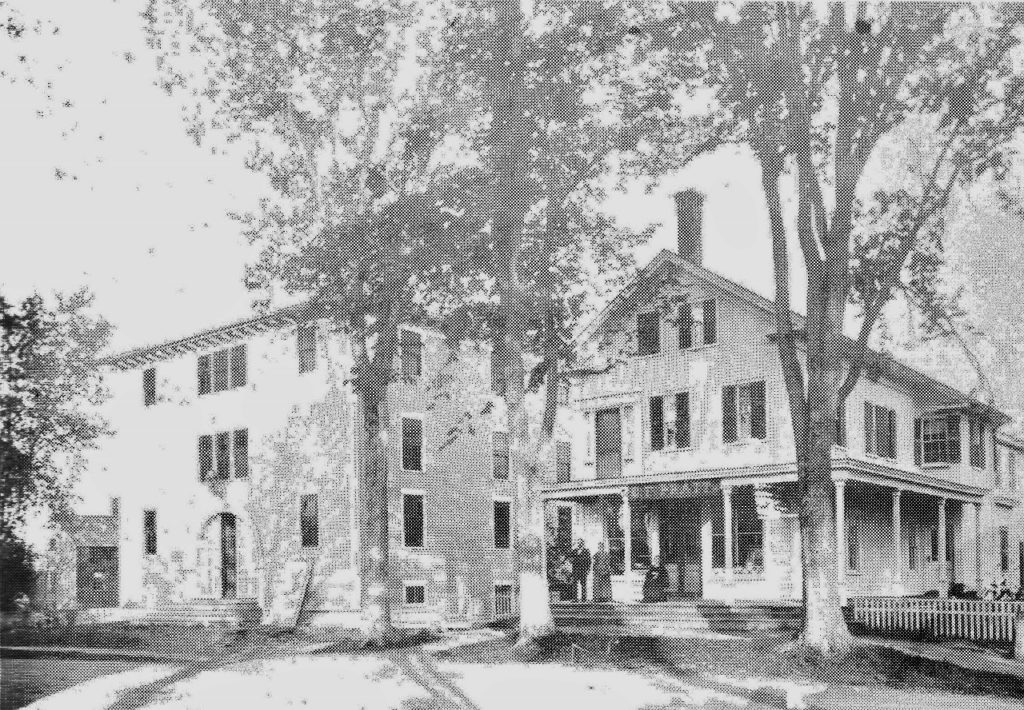
Original Hartland Opera House & Charles F. Pratt Store – c1895
*
~ Act to Incorporate the Hartland Town Hall Association ~
Approved March 4, 1891
Be it enacted by the Senate and House of Representatives in Legislature assembled, as follows:
Section 1: James Fuller Jr, Prince W. Thompson, Greenville J. Shaw, Albert W. Miller, Henry C. Fuller, Amasa J. Moor, Dr. Edwin A. Bean, Charles F. Pratt, Milton L. Merrill; their associates, successors and assigns, are hereby created a body politic by the name of the Hartland Town Hall Association, with all the powers, rights and privileges, and subject to all the duties and obligations granted and prescribed by the general laws of this state relating to corporations.
Section 2: Said corporation is hereby authorized to construct a construct and maintain a public building, or buildings in the town of Hartland, adapted to, and to be used as a Town Hall, Masonic Hall, Odd Fellows’ Hall, and other like purposes, with all privileges incidental thereto.
Section 3: The capital stock of said corporation shall be of Capital stock, such amount as said corporation may from time to time determine to be necessary, but not exceeding the sum of twenty-five thousand dollars. And said corporation may purchase, hold, sell and convey all real estate and personal property necessary for the purposes contemplated in this charter.
Section 4: The town of Hartland is hereby authorized to Town may subscribe to the capital stock of said corporation to the extent of two thousand dollars, and to make such arrangements as the corporation and the town may mutually agree upon, in relation to the use and occupancy of such part of the building for town purposes as may be convenient to the town.
Section 5: Any two of the corporators named in this act first meeting, may call the first meeting of the corporation by mailing a written notice signed by both, postage paid, to each of the other corporators, seven days at least before the day of the meeting, naming the time, place and purposes of such meeting, and at such meeting a president, secretary, treasurer and directors may be chosen, by-laws adopted, present amount of capital stock fixed, and any corporate business transacted.
Section 6: This act shall take effect when approved.
*
~ Pittsfield Advertiser – March 3, 1892 ~
“It has been a recognized need for a long while, and for several years the subject of a hall which would be more commodious has been talked up occasionally. Three years ago at the annual town meeting, an article was put in the warrant to see how much money the town would raise to assist in building a town hall. Mr. Archibald Linn, who was then alive, took a noble stand in favor of the project and said he would render material aid himself, but the article was not passed.
The next spring at the town meeting a like article met with a better fate and the town voted to loan its credit for $2000 to assist in building a suitable building for a public hall with rooms above for Odd Fellows and Masons, and chose a committee of three to confer with like committees from the two societies in regard to the location.
And now a new difficulty arose. There was a division in the committee in regard to choice of the several lots offered for sale, and though they met until into the summer they could get no nearer together and much to the chagrin of some and to the great delight of those who opposed the building of a hall in that way, the scheme was abandoned for the time being.
As the time for the annual meeting drew near last spring the subject was again revived, and this time it was brought before the town in a different manner. Mr. Greenville J. Shaw presented a petition to the legislature for a charter for the organization of a stock company under the name of the Hartland Town Hall Association.
A charter was granted and the town again voted to loan its credit and a company was organized, with the following gentlemen as incorporators: James Fuller Jr, Prince W. Thompson, Greenville J. Shaw, Albert W. Miller, Henry C. Fuller, Amasa J. Moore, Dr. Edwin A. Bean, Charles F. Pratt and Milton L. Merrill.
All felt now as though a hall was assured and were elated accordingly, but trouble was ahead. The old difficulty of location arose again and for time it seemed as though it would be the means of once more upsetting the undertaking, but a lot was purchased finally and the work of soliciting subscriptions began and this proved to be the hardest part of the work after all.
About two-thirds of the required amount was subscribed and then the work languished. The summer was passing and nothing had been done nor could be done until the full amount of $6000 was subscribed. At this juncture when hope was low and the faith of all but a few was small, a committee consisting of Thomas A. Linn, David E. Thompson and Dr. Edwin A. Bean was chosen by the board of trustees to solicit funds to make the balance of the stock. In less than three days the full amount required was raised and now the association was ready for business.
A. G. Bowie of Waterville was engaged to draw plans and specifications, the stone work was let to Greenville J. Shaw and Michael Dyer, and the erecting of the building was let to James Page of Caribou. In September work began in good earnest. The stone for the foundation wall was procured at Devil’s Head in Harmony, and a superior job was done with it and one of the finest basement cellars to be found was constructed.
Mr. Page, the builder, deserves special mention for the workmanlike manner in which he has carried out every detail of the specifications and although he has been confined to his room several weeks during the latter part of his job, the work has been successfully carried on by his son who has rendered able assistance from the beginning.
The building consists of a public hall and galleries, selectmen’s office and banquet room below and a spacious hall with suitable anterooms for the Odd Fellows in the upper story. The public hall is heated by a Wood & Bishop furnace. The opera chairs and settees were purchased from Cotton & Company of Fairfield, and the scenery, which is first-class, was furnished by a firm in Chicago, painted expressly for this hall.
The building is now nearly completed and is ready to be dedicated and will be one of the finest and most commodious structures of the kind to be found in any country town in the State and is truly an object of pride for the village of Hartland. It is a striking illustration of what a few individuals can do when they work together with a will. Hartland will be at its best during the opening and will give a warm welcome to all comers for its citizens are justly proud of their new hall.”
*

Hartland Town Hall & Opera House Grand Opening Poster – 1892
(Donated by Raymond & Beverly Martin)
*
A little over 5 years later, the newly built Opera House would meet a fiery fate on Wednesday, June 9, 1897. Accounts of the huge fire spread quickly through local newspapers the next day however 2 very different stories were reported by The Pittsfield Advertiser & Bangor Daily News.
*
~ The Pittsfield Advertiser – Thursday Edition – June 10, 1897 ~
(Courtesy of Don Hallenbeck ~ Pittsfield Historical Society)
Hartland’s Fine Opera House and Other Buildings Burned. Pittsfield Renders Seasonable Aid.
An accident to the Fire Apparatus made it difficult to fight the flames and they rapidly gained headway until the arrival of more hose. A bright light in the heavens about nine o’clock last night in the direction of Hartland indicated there was a fire somewhere in that vicinity. Soon after nine o’clock a telegraph message came from Hartland stating the new Opera House was burning and asking assistance from Pittsfield Fire Department.
Chief Engineer Parks quickly got the hand tub and hose carriages 1 & 2 with part of the hook and ladder onto a flat car. A slight delay was caused by the Sebasticook & Moosehead Locomotive not having steam up. An alarm was rung and a crowd turned out and boarded the Special Train. The run was made in 12- l/2 minutes.
The fire broke out about 8:30 o’clock in the building occupied by Lyman Cook starting in the stable which was partially filled with straw. These buildings were close to the Opera House, which almost immediately caught from the rapidly burning stable. The citizens made a gallant effort to stop the spreading of the flames, but the hose burst and the fine hall building, the pride of Hartland, was devoured. A bucket brigade was formed and succeeded in holding the flames in check in C. F. Pratt’s store building till the arrival of Pittsfield Fire Department. Two streams were put on the Linn Woolen Mill hydrants and the fire was soon under control. The loss will be a heavy one.
The Opera House was a three story frame building erected about five years ago and cost $8,000 and was insured for S2,600. The loss on buildings occupied by Lyman Cook will be about $1,000. No Insurance. The large two story building owned by Charles F. Pratt, who carries a large stock of general merchandise, was badly damaged. His loss will be about $2,500. We learned that Mr. Pratt had no insurance on his building. The household goods of Lyman Cook were saved, as well as the settees in the Hall. The Odd Fellows, Rebekahs and Masonic Lodges lost nearly everything except their books and charters. The Odd Fellows paraphernalia was nearly new and cost $800.
The cause of the fire is supposed to have been by a six year old grandson of Lyman Cook who with a small companion was playing with matches in the stable. Fortunately there was but little wind as the buildings in the burned district are situated close together and the flames would spread rapidly. The church and several adjacent dwellings were ablaze at one time. Hartland should be thankful that it is no worse.
*
This article also reported the fire however it was an extreme exaggeration of some of the facts of the event.
~ Bangor Daily News – Thursday Edition – June 10, 1897 ~
PITTSFIELD, MAINE, June 9. Town of Hartland Destroyed By Fire. Only a Few Houses Were Saved From the Flames. HALF THE BUILDINGS ARE BUT RUINS. Flames started in the Town Hall and spread rapidly – No fire apparatus – Two Hose Companies Sent from Pittsfield – Mills Escape Destruction – Heavy Wind Increased Force of the Blaze
There came over the wire about eight o’clock tonight a call for help from the little Town of Hartland, situated about eight miles up the branch line of the Sebasticook & Moosehead Railroad, and stating that the town was threatened with destruction by fire. Two hose companies were dispatched from here by train. In the meantime the northern heavens had become illuminated by the conflagration, and in the course of an hour or two the glare increased. It was learned that the fire started in the Town Hall and was well under way before it was discovered.
The town has no fire apparatus except what is attached to the woolen mills, which are situated some distance from the center. The fire spread rapidly and in the course of an hour nearly all the buildings on the main street, many of which were quite new and of handsome appearance, were in flames.
The citizens worked hard, but the heavy northerly wind helped on the flames until over half the town was in ruins. The two hose companies that were sent up from here arrived about 10 o’clock and helped in a great measure to save some of the buildings, but as the town is composed almost entirely of wooden structures, only a few could be saved. The town is thickly populated and depends largely upon the woolen business of the two or three big mills. Fortunately these are situated some distance from the center and were not threatened. At a late hour tonight the fire was still burning.
*
Rebuilding the Opera House
The fire completely destroyed the building however a number of Hartland businessmen and citizens joined together with the Town Hall Association to put forth immediate plans to rebuild. Within 8 months, a new Opera House had been built for around $6,000 at the same location on Academy Street. The new structure was almost identical to the original building with subtle differences to its facade, windows and several upgrades to the interior. It officially reopened to the public on Thursday, February 17, 1898.
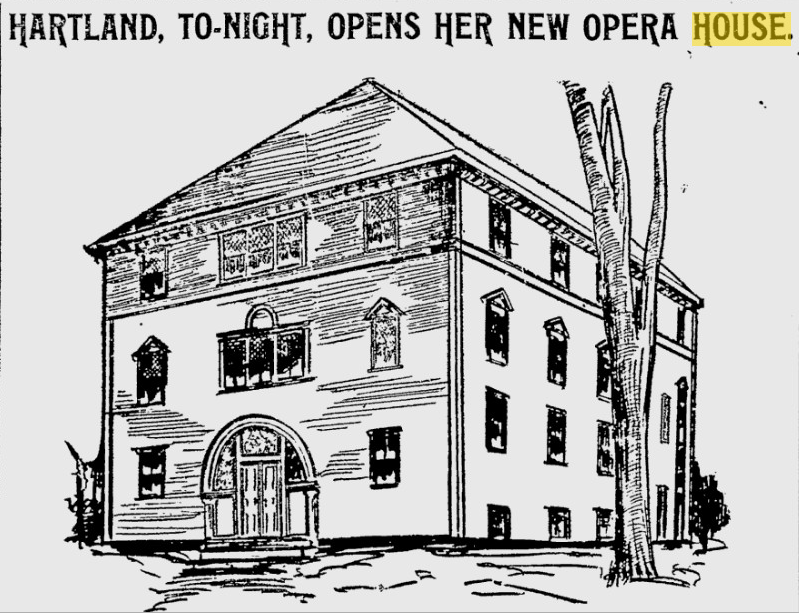

Lewiston Sun Journal – February 17, 1898
*
The rebuilt Opera House was almost identical to the original with slight differences to its facade & windows. The Opera House became a versatile venue for entertainment and public gatherings for the citizens of Hartland.
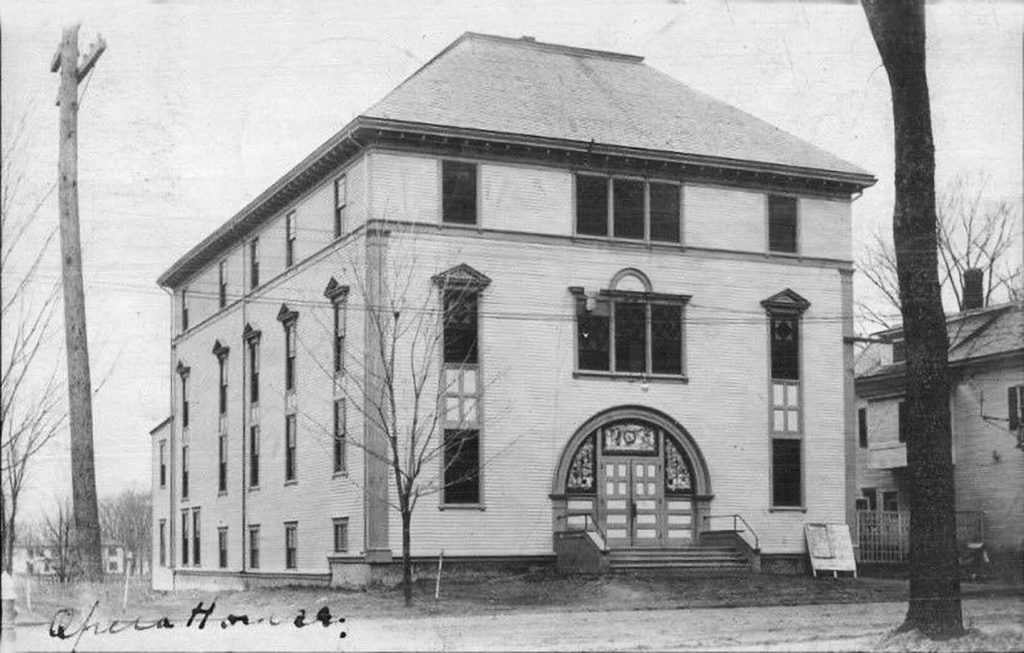
Rebuilt Hartland Opera House
*
By the end of 1902, a local movement was underway which focused on creating a formally organized public library in Hartland with its own book collection. Initially organized through the Hartland Sunshine Circle Chapter of the King’s Daughters Society under the leadership of Mrs. Anna Osborne, a dedicated Hartland Library Committee soon formed which included a number of local citizens led by Mrs. Osborne, Mrs. Jeanette Schwartz, Albert W. Miller and George M. Lancey.
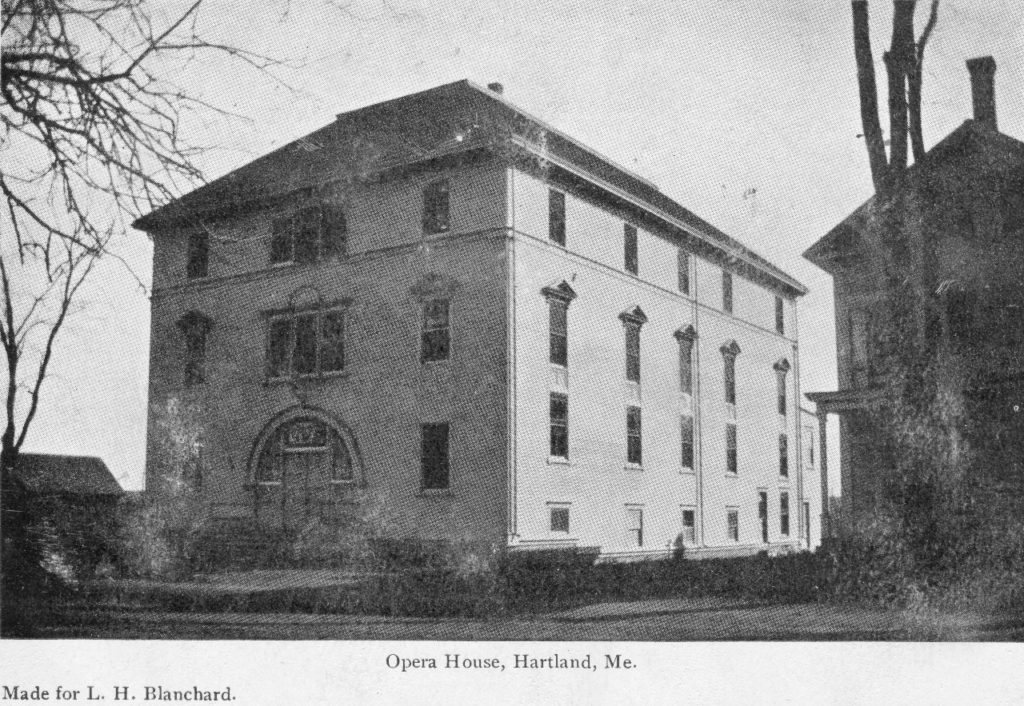
Opera House on Academy Street – c1900
*
The newly formed Hartland Library Committee continued seeking private and public funding, book donations, furnishings and a viable location in town for a library. Shortly after monies were appropriated at the 1903 Town Meeting, Mrs. Anna Osborne, Mrs. Jeanette Schwartz, Albert W. Miller and George M. Lancey were appointed Trustees of the newly named Library Fund. A small room behind the stage at the Opera House was secured for the new library location and on December 30, 1903, the Library Trustees officially incorporated as the Hartland Library Association. The library received numerous private book donations and, along with its own book purchases, reported it had over 500 books on hand within its first year. The Hartland Public Library would remain at the Opera House until 1935 when it moved to its first dedicated building on Commercial Street.
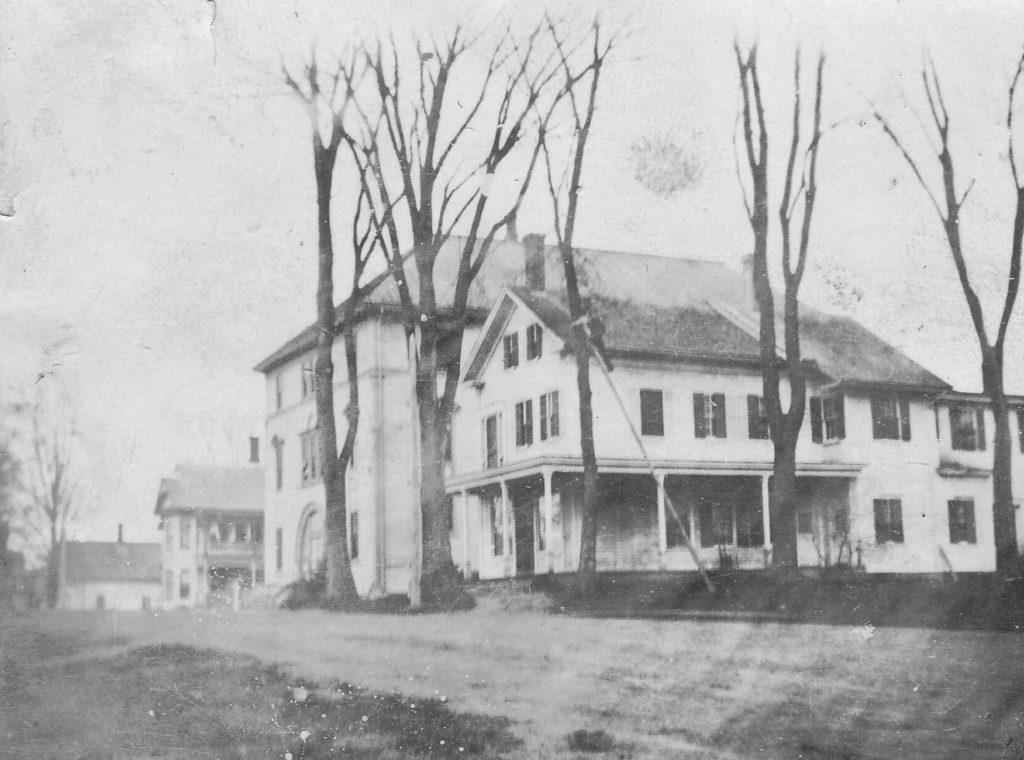
Opera House on Academy Street
*
Silent movies were a very popular form of entertainment and the Opera House provided numerous showings for locals to enjoy. Hartland native Lenora (Brooks) Morgan attended these movies as a young woman collecting several featured playbills. (Courtesy of Gerald Morgan)
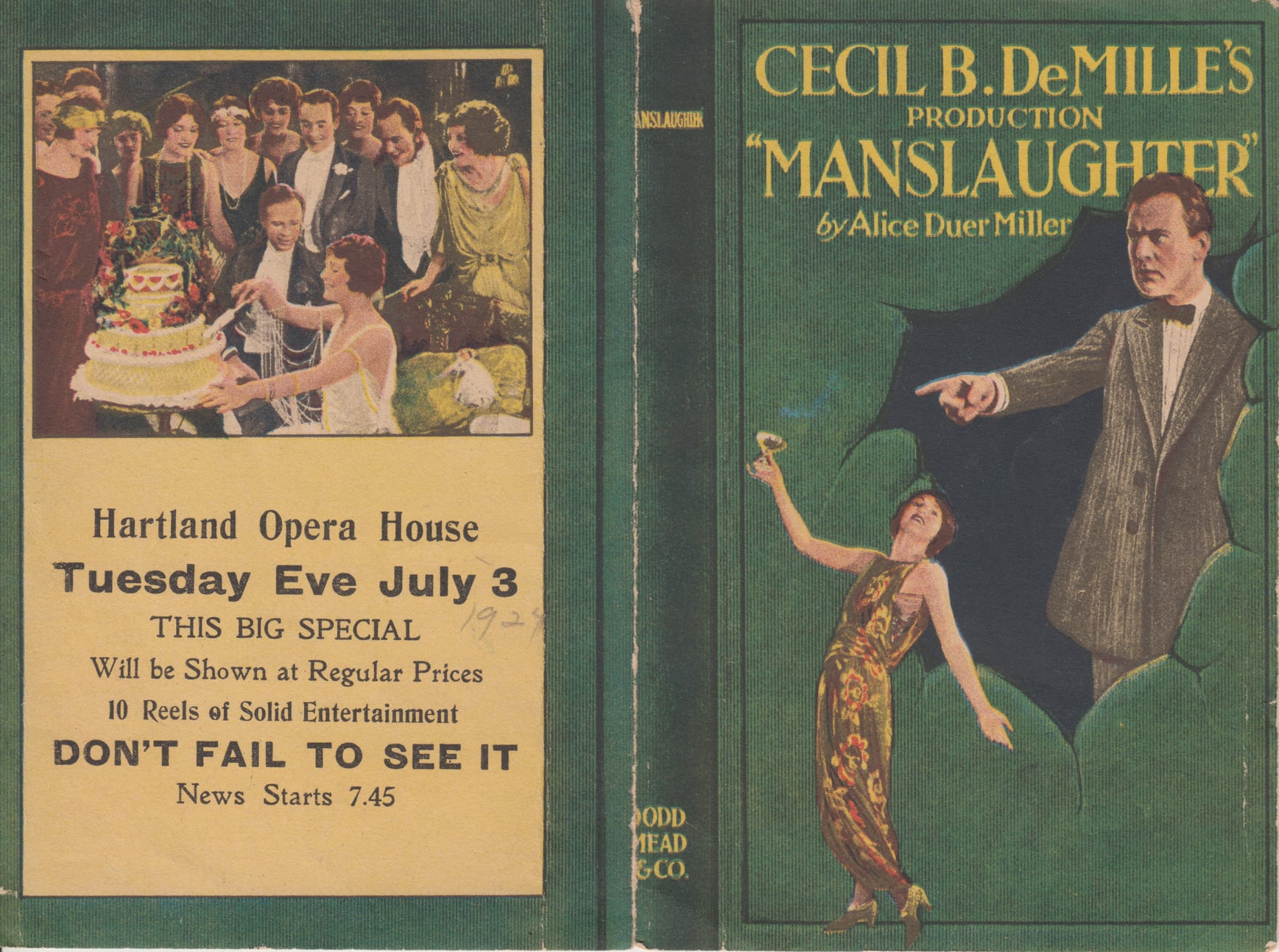
July 3, 1924
*
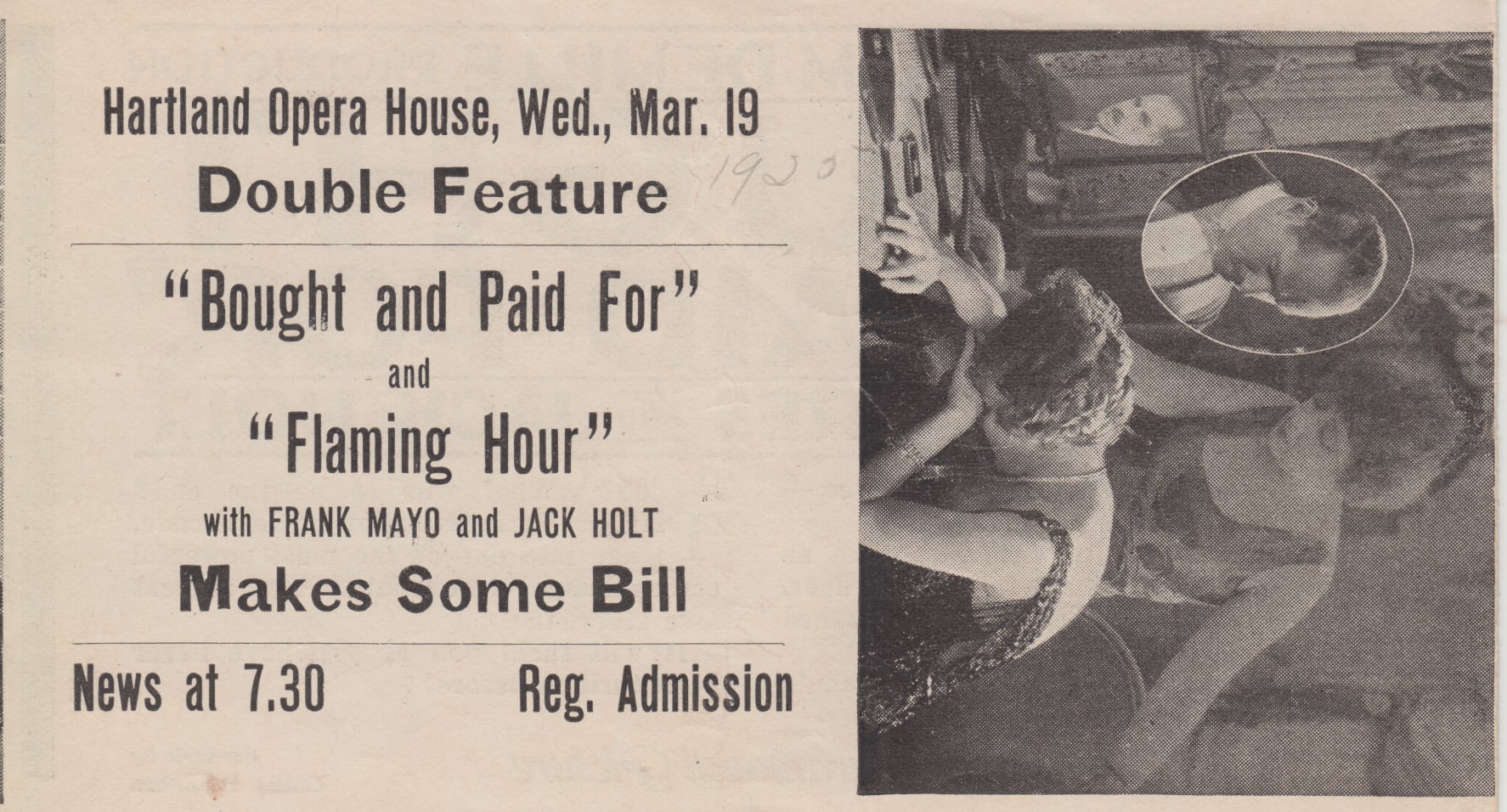
March 19, 1925
*
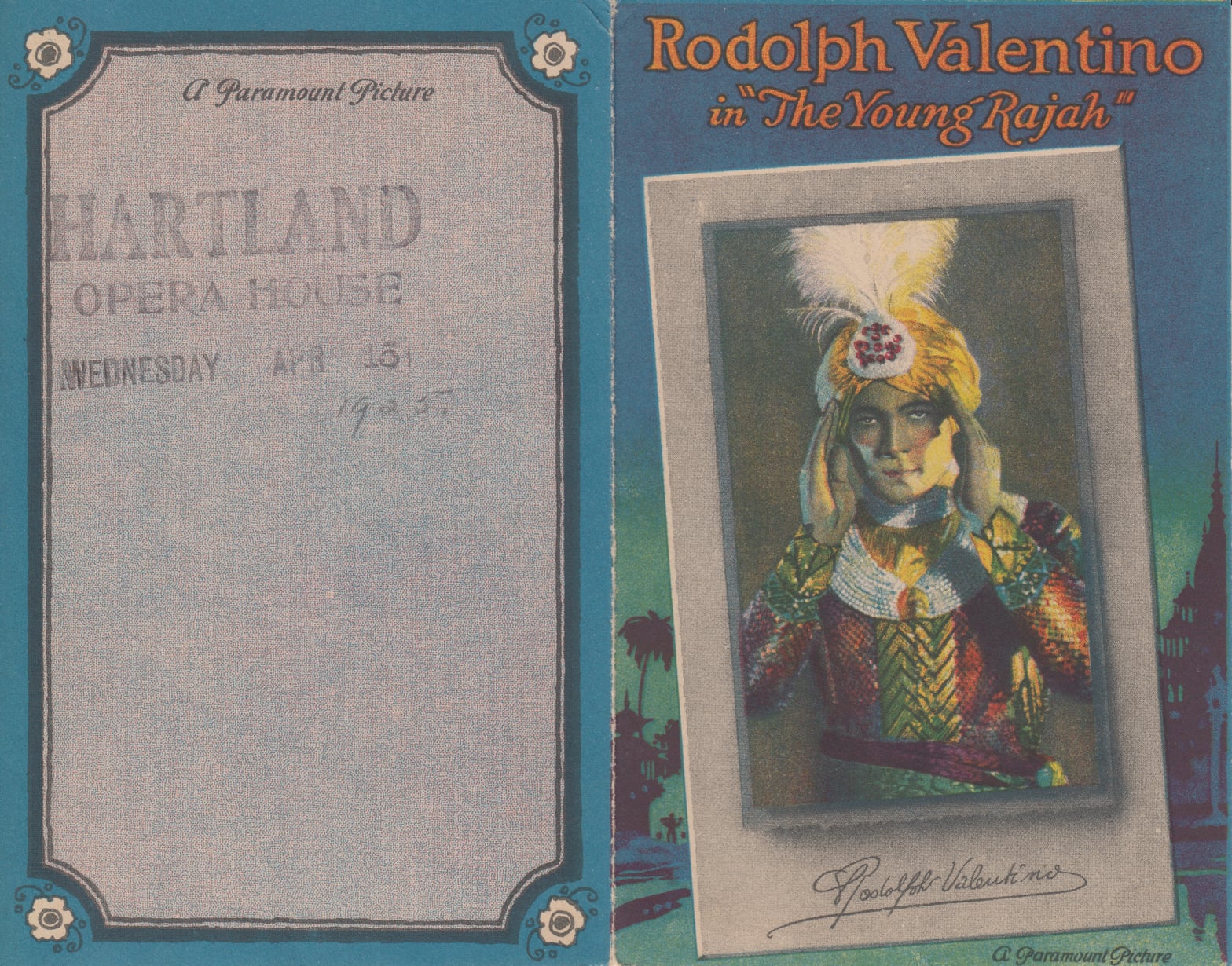
April 15, 1925
*
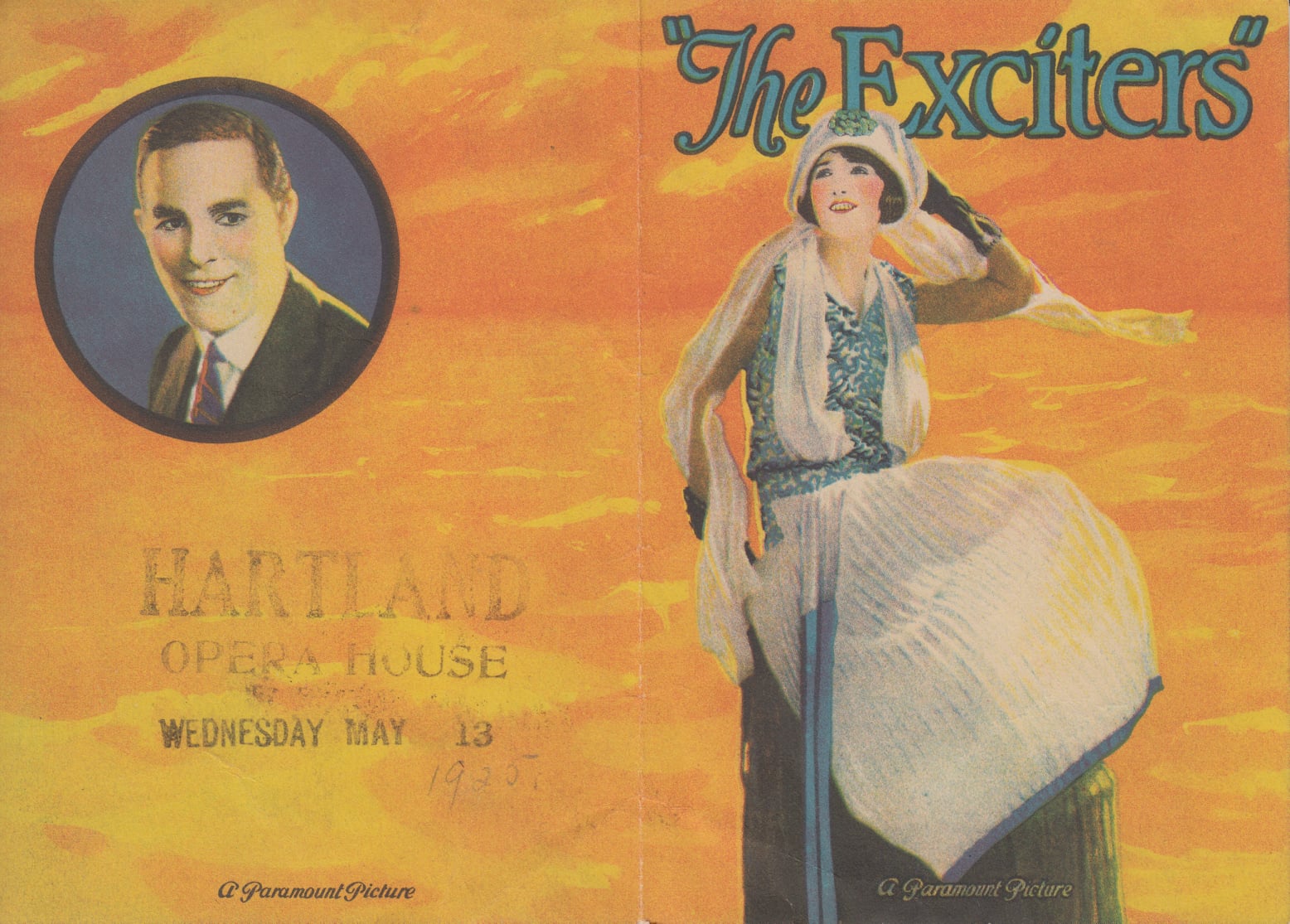
May 13, 1925
*
Hartland native and longtime Librarian Mary (Coston) Smith recalled in a newspaper article interview playing the piano as a young woman at the Opera House as the background soundtrack for silent films before the advent of “Talkies”.
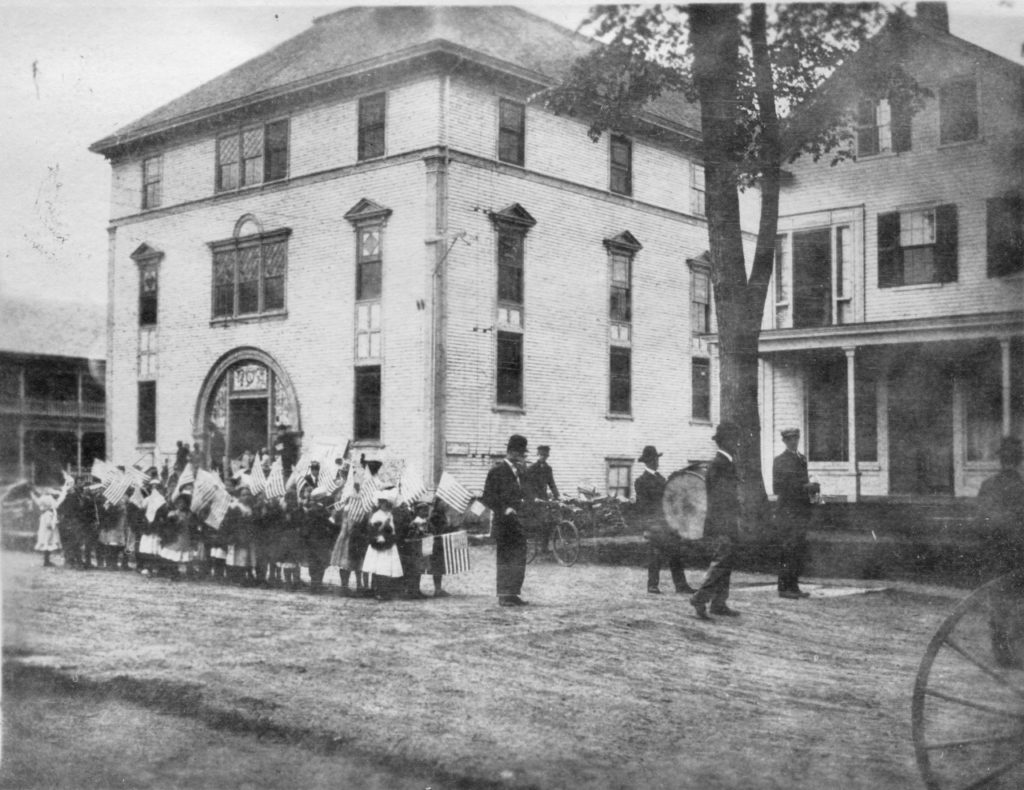
A parade passes by The Opera House on Academy Street
*
The Opera House also hosted several forms of live entertainment with numerous traveling acts and local groups performing there over the years such as this 1921 performance by The Kroweldeen Club featuring many local residents.
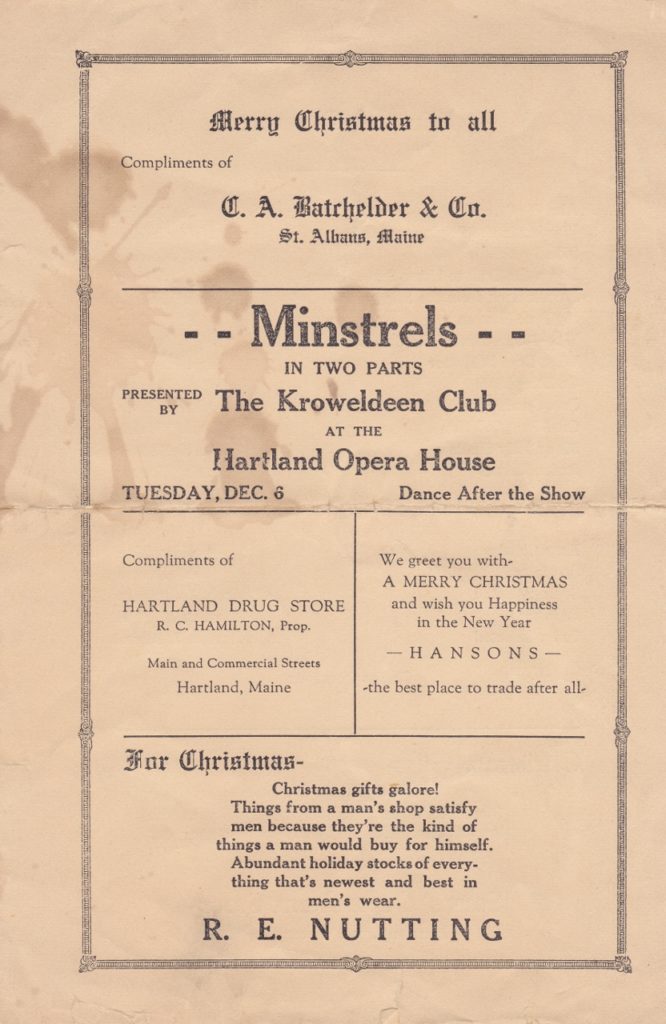
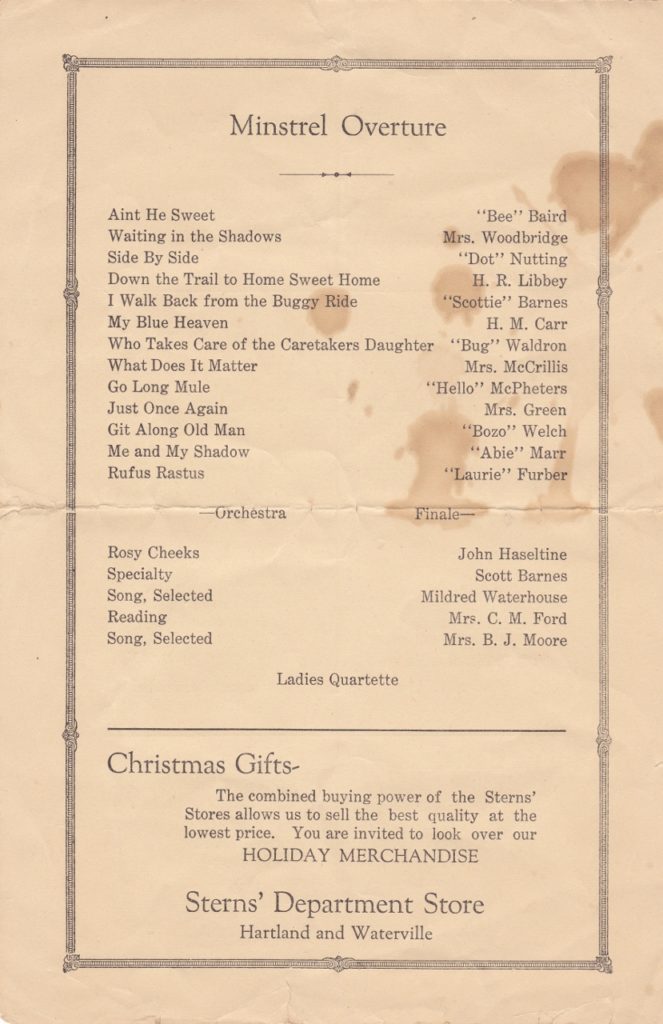
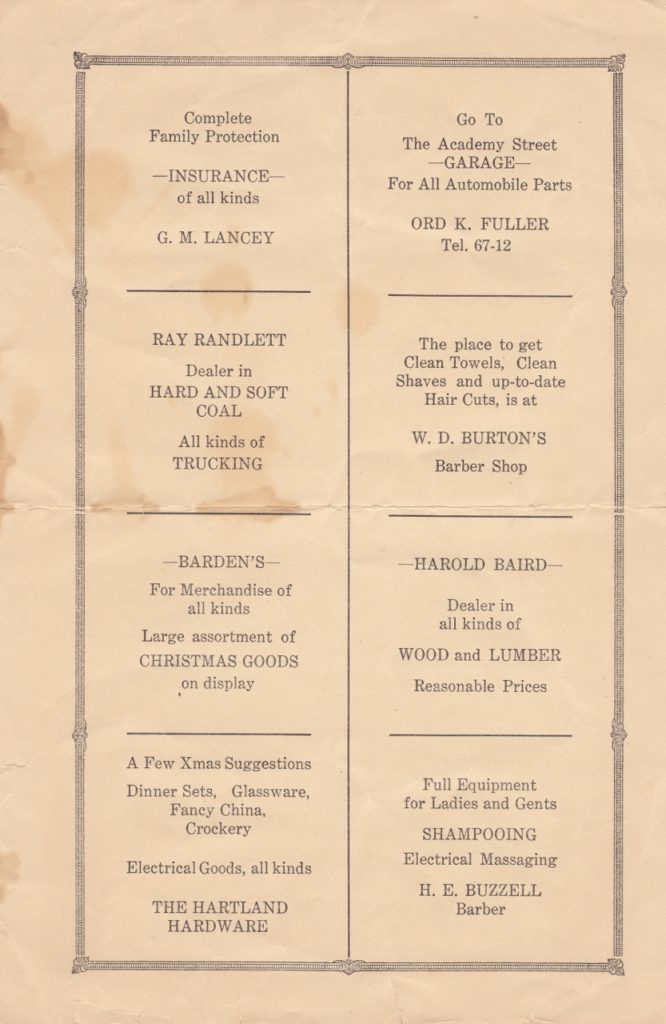
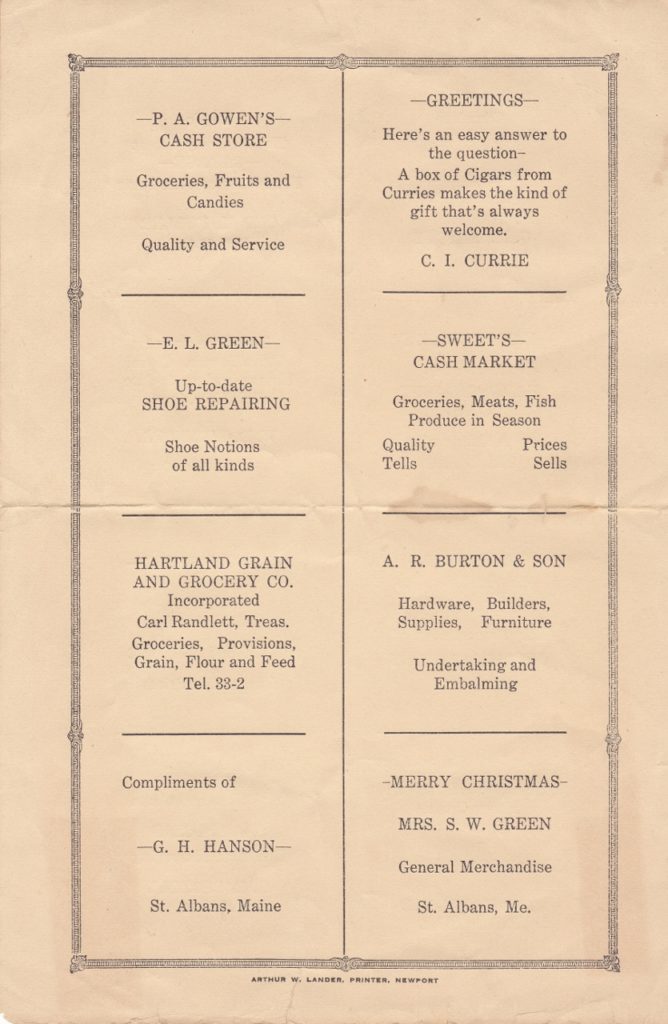
Kroweldeen Club Program for “Minstrels” – December 6, 1921
*
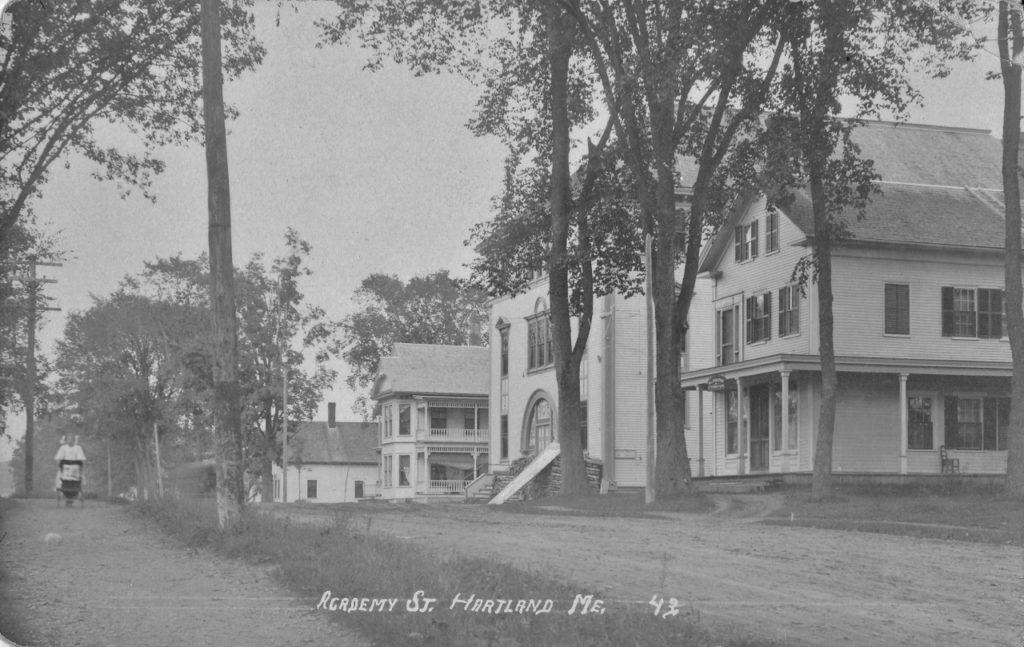
The Opera House on Academy Street
*
Beginning in the early 1940s, the Opera House would serve as home of the Avon Theater bringing Hollywood back to Hartland.
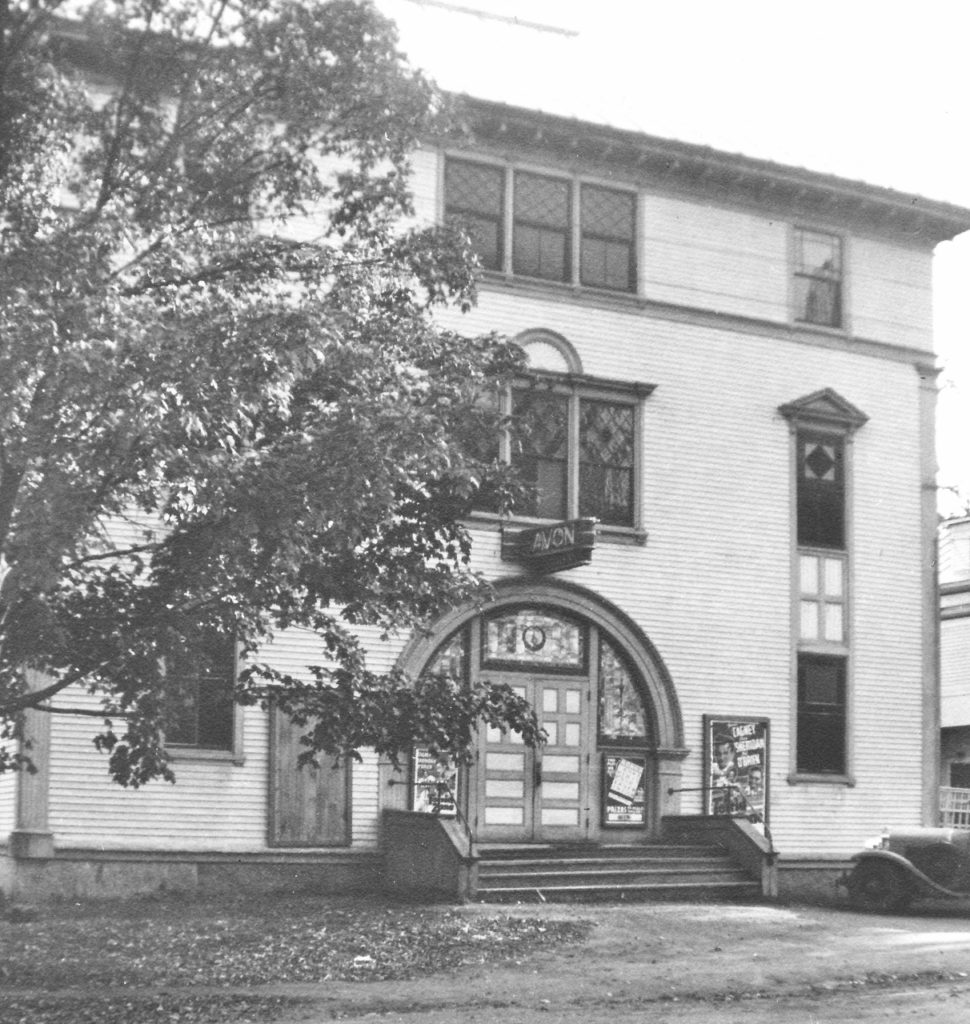
The Opera House operating as Avon Theater – September 28, 1941
*
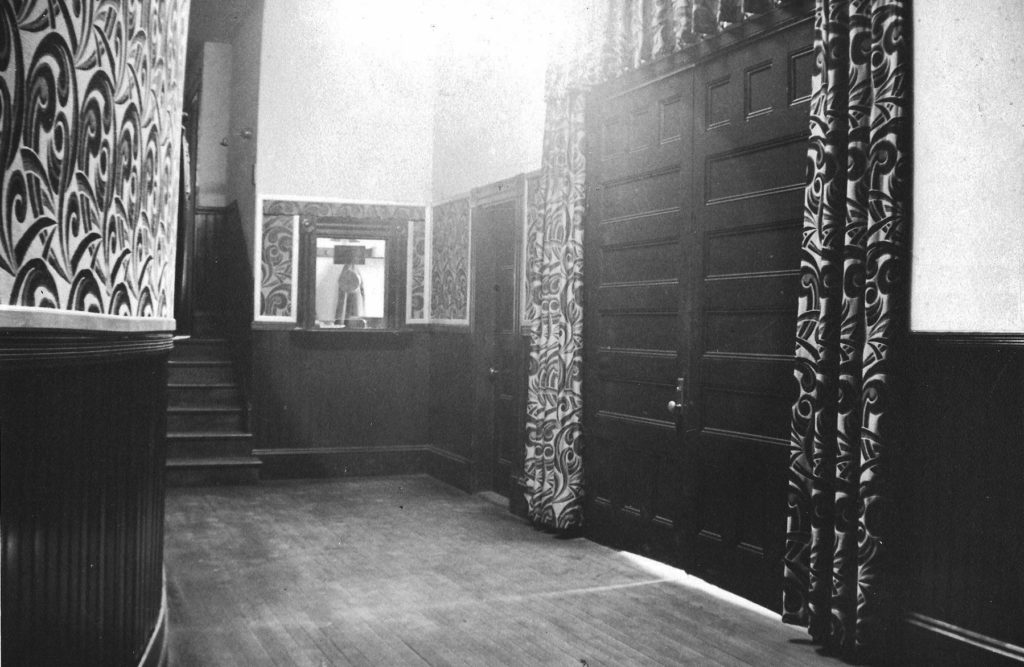
Avon Theater Lobby & Ticket Booth – June 1940
*
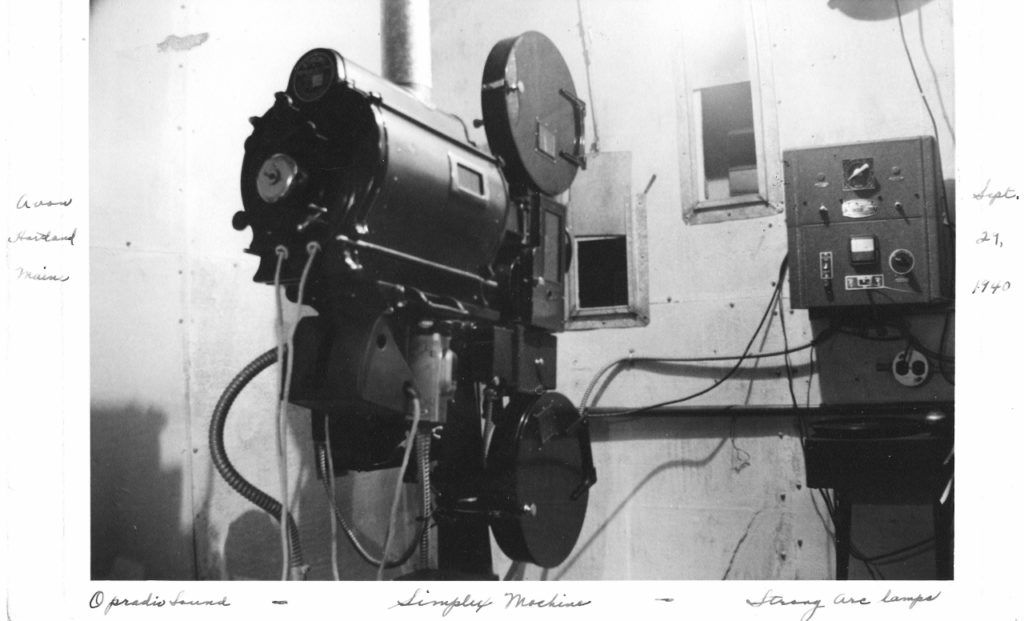
Projector Booth at Avon Theater with its Simplex Carbon Arc Movie Projector – 1940
*
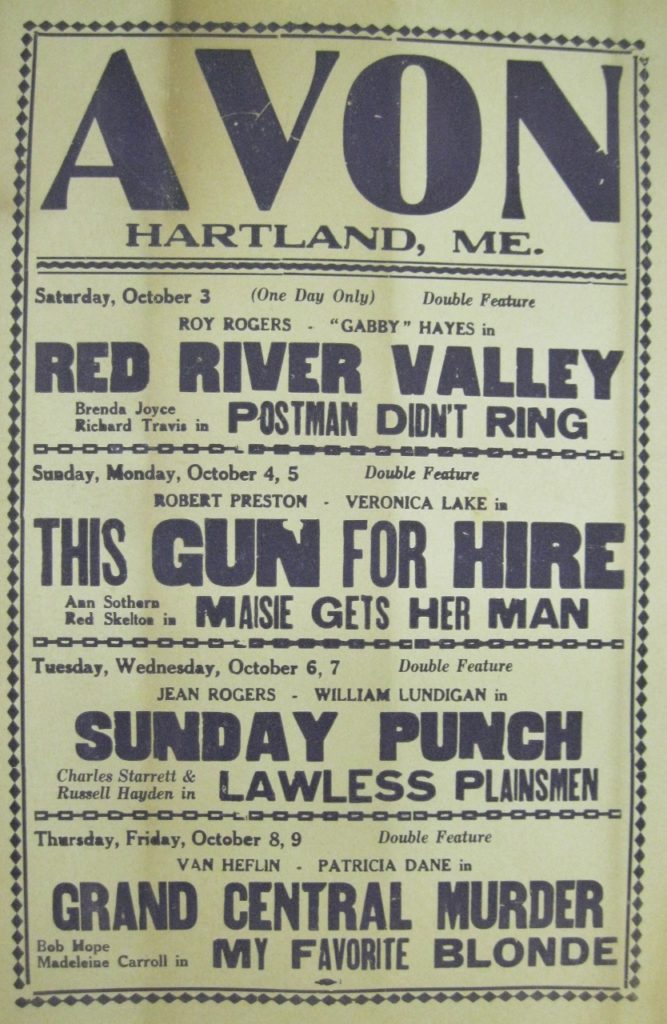
Avon Theater Playbill 1942
*
“Red River Valley” (Released December 12, 1941) “To bring water to their valley, ranchers have raised money to build a dam. When that money is stolen, Allison suggests the ranchers sell their stock to a friend of his thereby getting the money needed to complete the dam. Roy has a clue that Allison was involved in the robbery and is out to get control of the valley. So Roy and the boys try to delay the sale of the stock while they look for proof against Allison.”
“The Gun For Hire” (Released June 19, 1942) “Hit man Philip Raven, who’s kind to children and cats, kills a blackmailer and is paid off by traitor Willard Gates in “hot” money. Meanwhile, pert entertainer Ellen Graham, girlfriend of police Lieut. Crane (who’s after Raven) is enlisted by a Senate committee to help investigate Gates. Raven, seeking Gates for revenge, meets Ellen on the train; their relationship gradually evolves from that of killer and potential victim to an uneasy alliance against a common enemy.”
“Sunday Punch” (Released May 8, 1942) “The routine of a group of fledgling boxers all living in Ma Galestrum’s boarding house is interrupted when Ma allows her roving niece, beautiful Judy Galestrum, to move in. Especially interested is ex-college boy Ken Burke who is trying to quickly make it to the top, and young brawny Swedish janitor Olaf Jensen who believes Judy will fall for him if he becomes a champion boxer. The rivalry between the two friends leads them to an inevitable meeting in the ring.”
“Grand Central Murder” (Released May 1942) “A convict being escorted in for retrial escapes at Grand Central and threatens his old girlfriend on the phone. She flees for her new beau’s private railcar at the same station. When she is then found murdered the cops round up a motley group of suspects including the escapee, several guys feeling sore at the way the gold-digging broad had treated them, some jealous dames, and a private eye already on the case. Inspector Gunther soon has a problem – enough evidence to fry all of them.”
*
The Independent Order of Odd Fellows No. 101 had joined with the Masons and the Hartland Town Hall Association in 1891 to build the new hall where they had a dedicated room on the top floor. They first organized in Hartland in 1883 with 25 Charter Members with their I. O. O. F. meetings originally held at a dedicated top floor room at Hartland Academy.
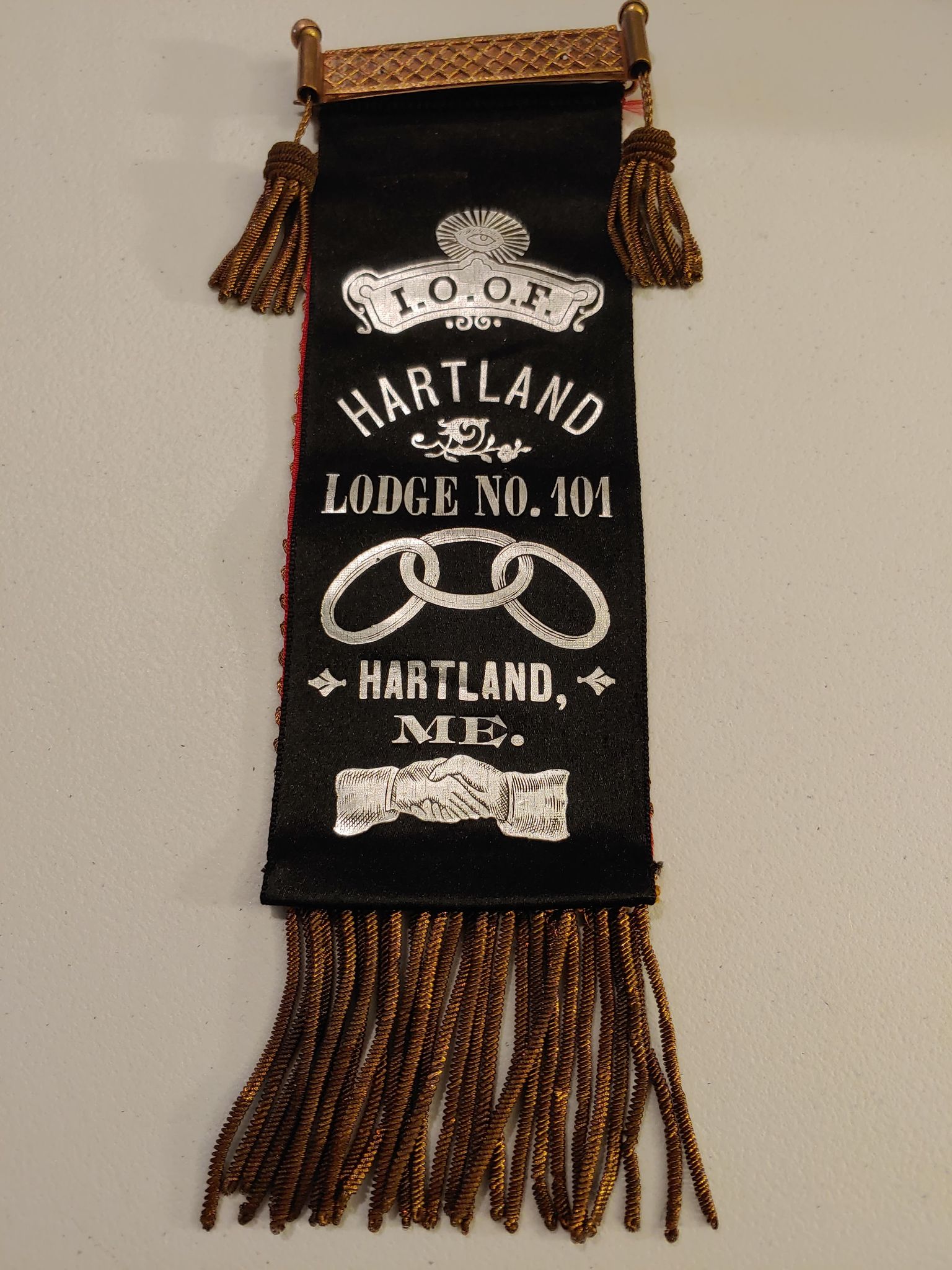

Hartland Independent Order of Odd Fellows No. 101 (Photo courtesy of Sam Fuller)
*
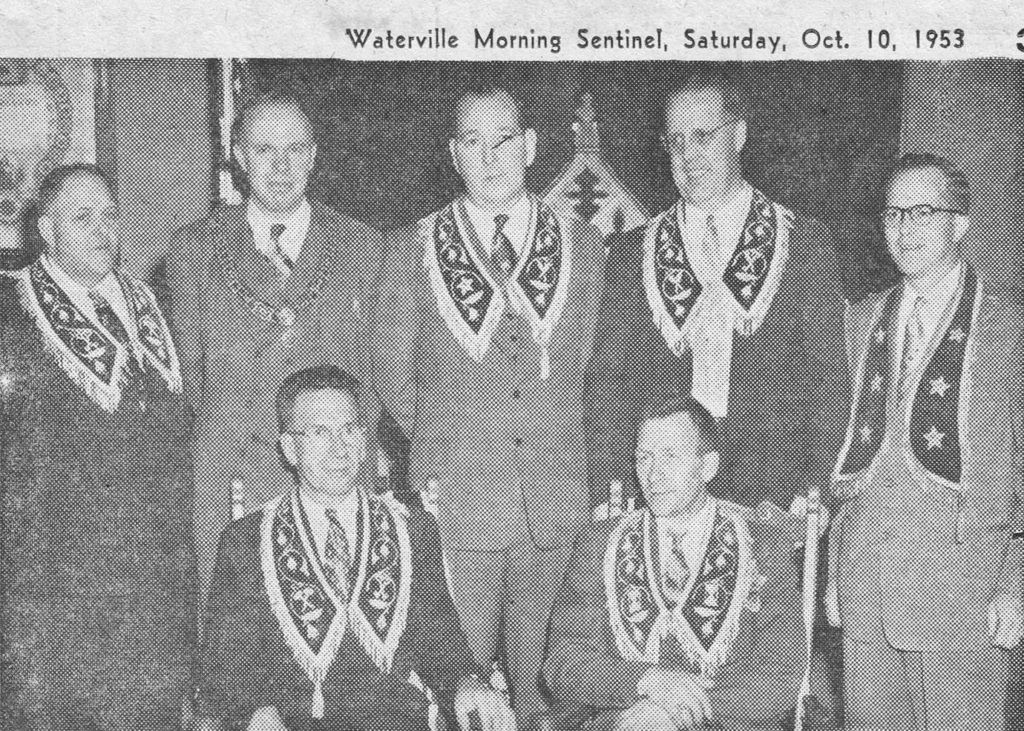
Morning Sentinel Article – 1953
*
Twilight Rebekah Lodge No. 60, a Sister Organization of the I. O. O. F., also held their meetings at the Opera House. The Hartland Chapter was first chartered in 1895 with 24 Charter Members with Mrs. Lucy Buck serving as the first Noble Grand. During their first year, membership grew to 64 members. For many years they sponsored the Hartland Academy Alumni Association Banquet with the first meals costing 50 cents. The banquet also helped support a Nursing Scholarship Fund given out to local girls wishing to enter the nursing field.
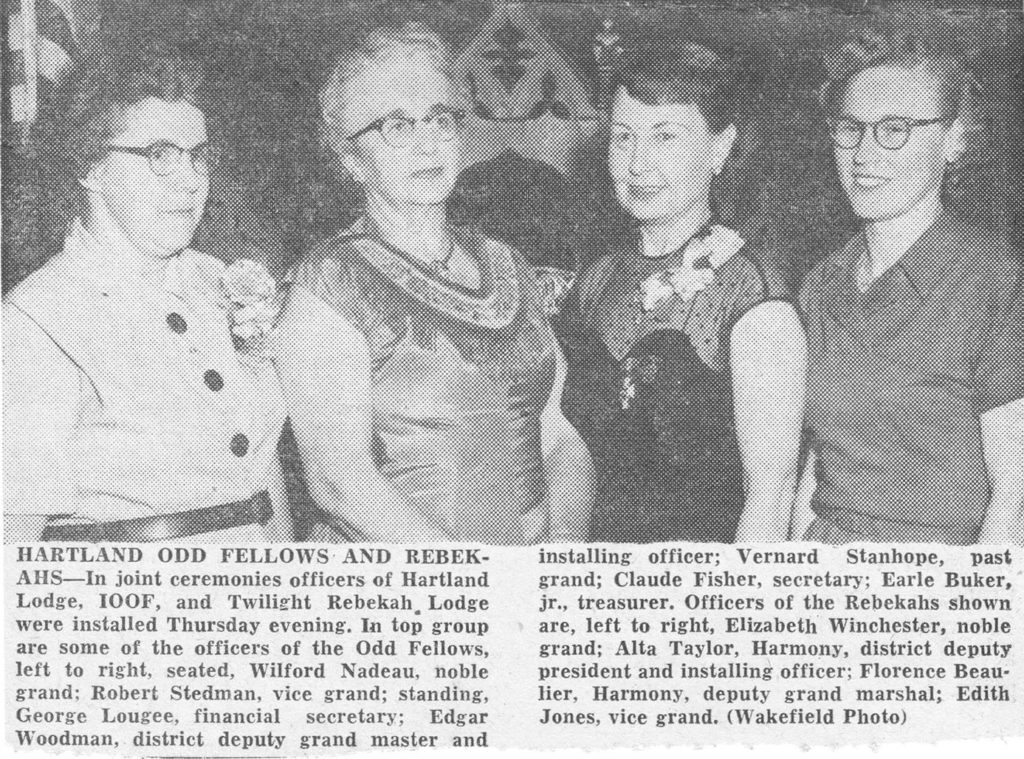
Morning Sentinel Article – 1953
*
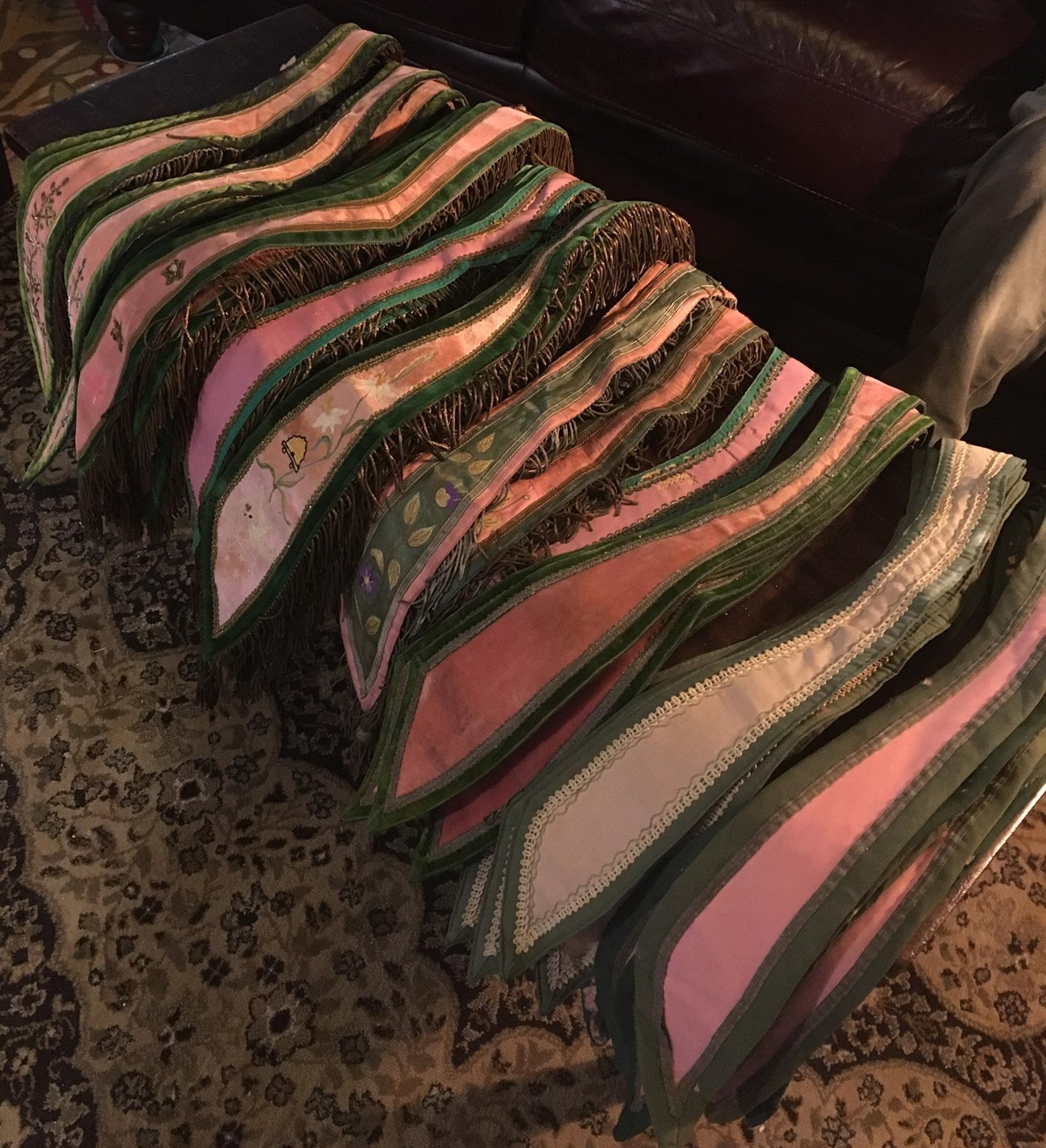
Ceremonial Sashes of Hartland Rebekah Lodge No. 60 (Donated by Town of Hartland)
*
Past Noble Grands of the Hartland Rebekah Lodge No. 60 gathered to celebrate Jennie (Martin) King’s 87th birthday in 1960.
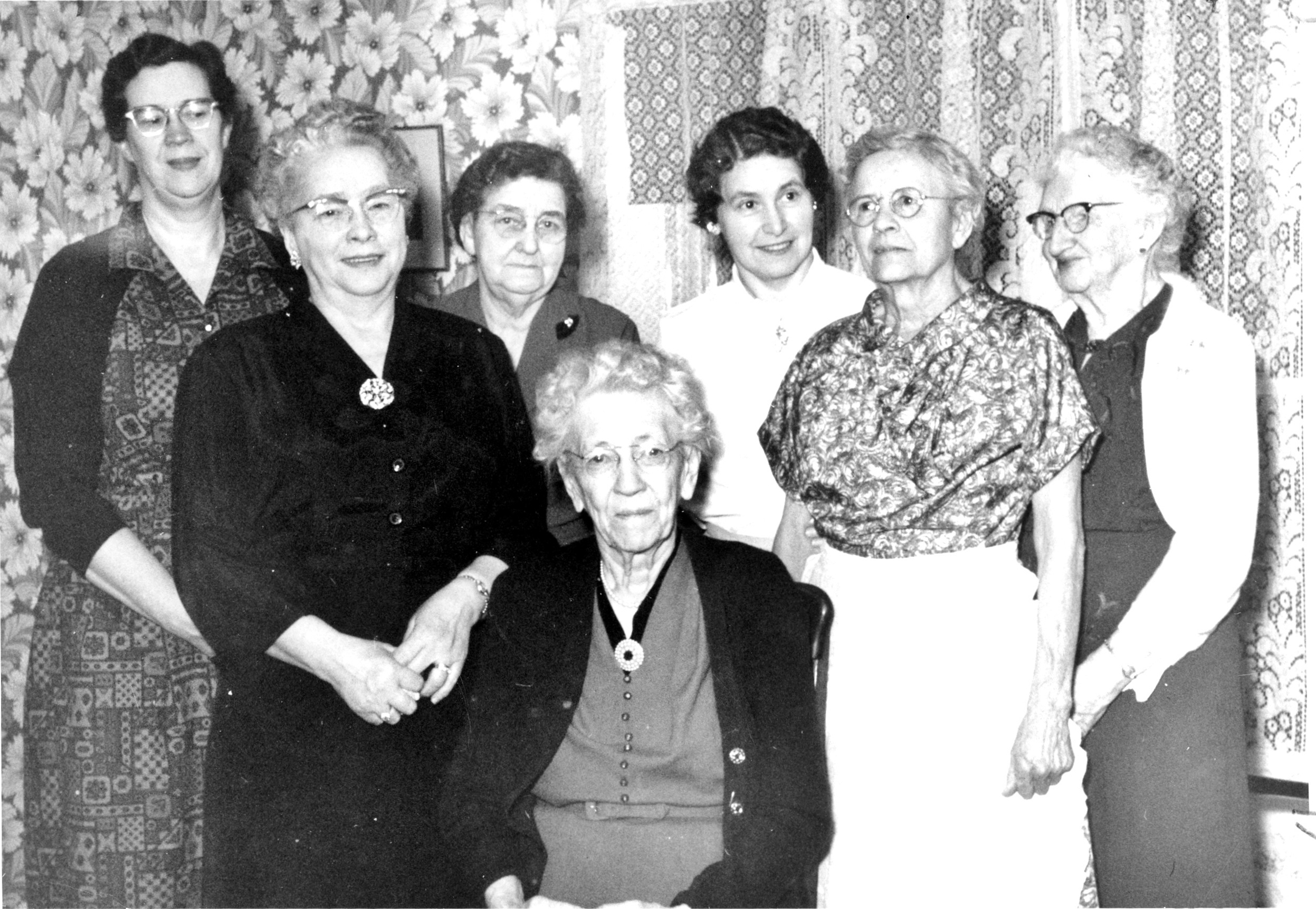
Front Row (L-R): Leta (Merrick) Libby | Jennie (Martin) King | Vanessa (Williams) Picken
Back Row: Beulah (Frost) Huff | Alice (Moore) Randlett | Elizabeth (Hart) Fisher | Mary (Coston) Smith
*
Through the combined fund raising efforts of several of Hartland’s Civic Groups, a beautiful new velvet curtain was purchased and installed on the main stage replacing an old painted mural drop which had hung there for years.
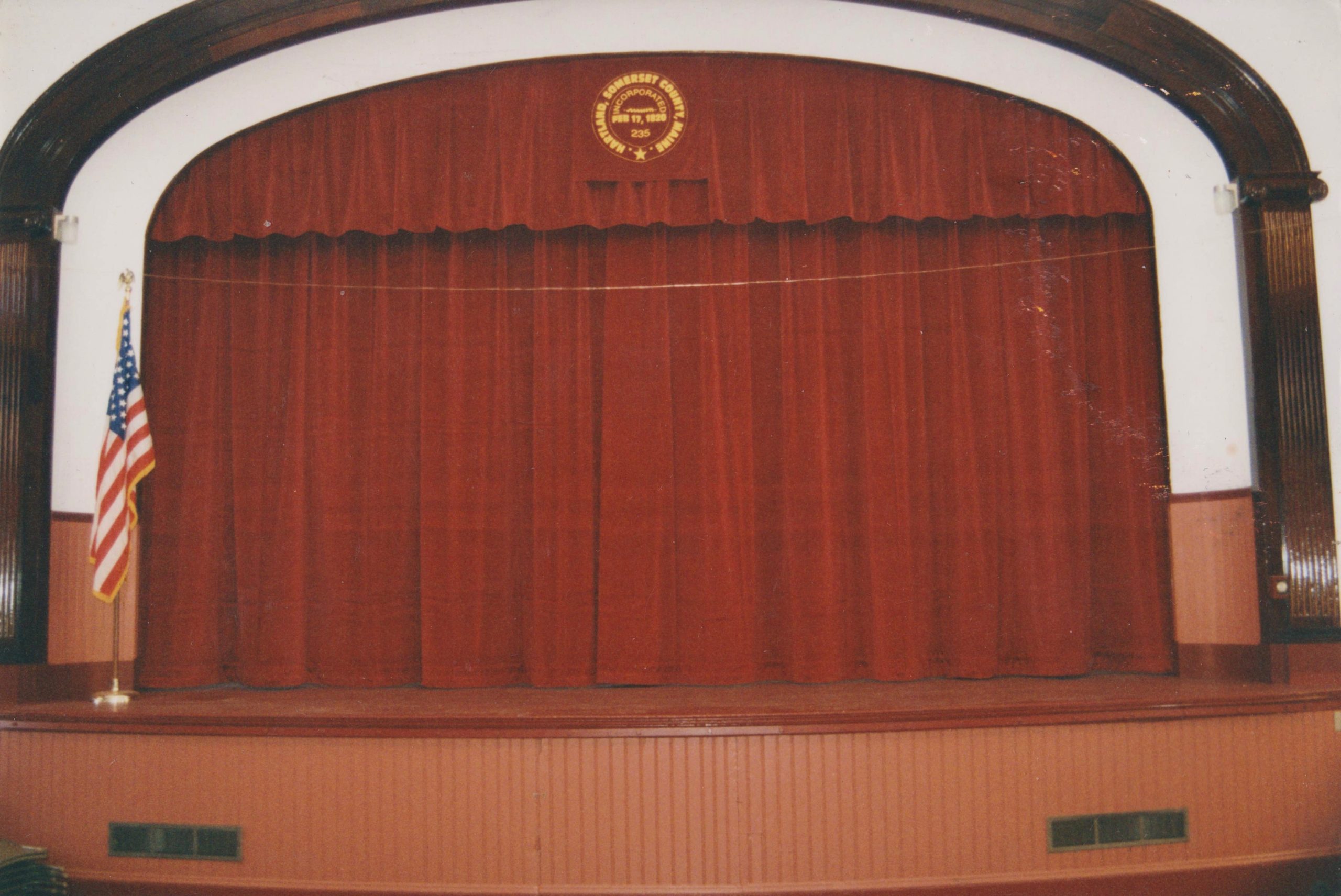
New Stage Curtain at Hartland Opera House
*
A slight, unintentional error was made noting Hartland’s incorporation day incorrectly which is documented as February 7, 1820.
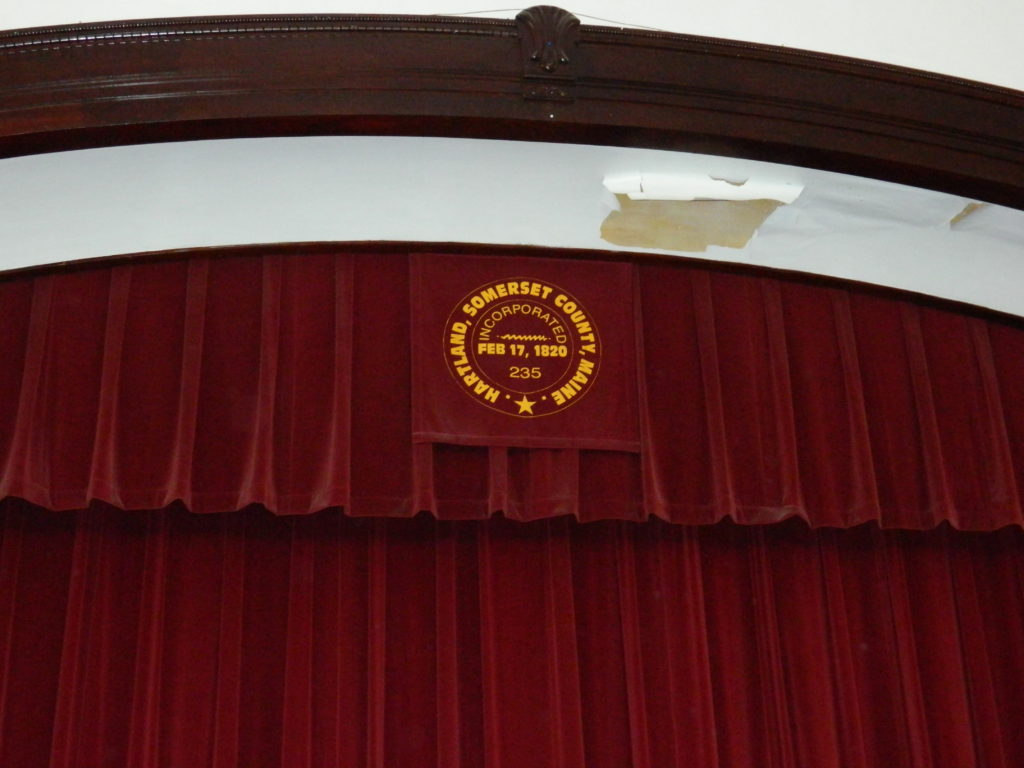
Oops!
*
Over the years, the building was home to the Hartland Town Office although they did relocate to other places a couple of times.
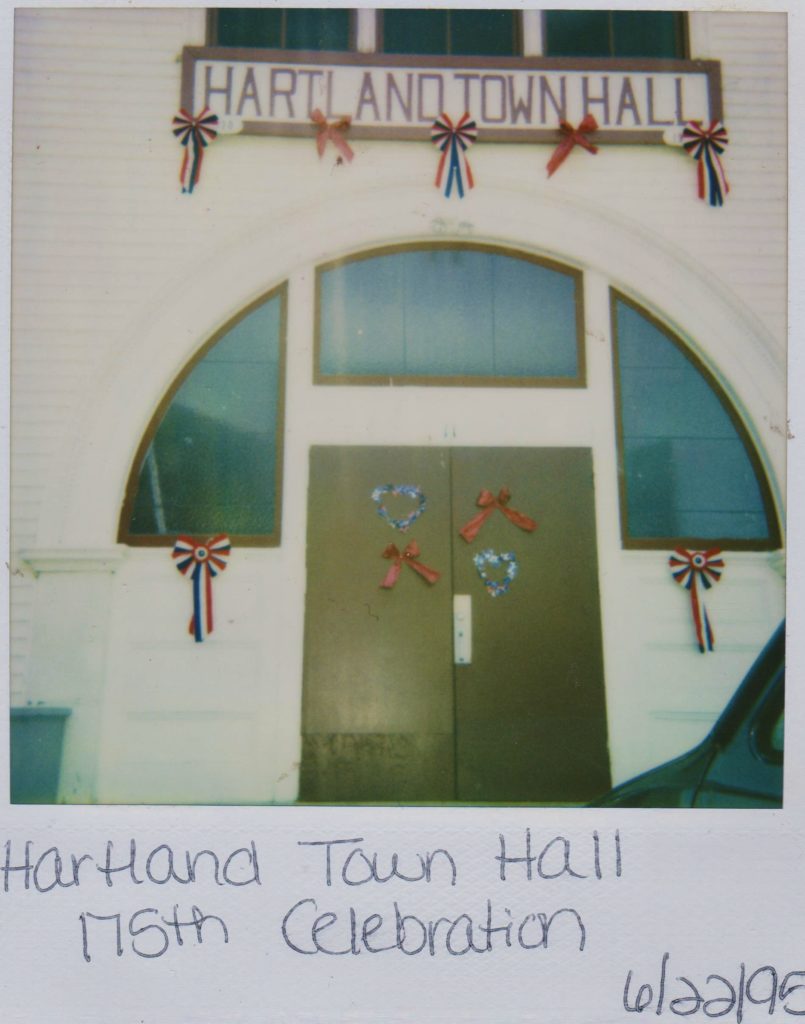
Front Doors of Hartland Town Hall – 1995
*
In 2002, Hartland Junior High School permanently closed as an educational facility when students began attending the new Somerset Valley Middle School. The Town Office relocated their operations from the Opera House into the former Hartland Academy building soon after when the heating system at the Town Hall failed. They were later joined by the Hartland Historical Society who set up a dedicated room there in 2003.
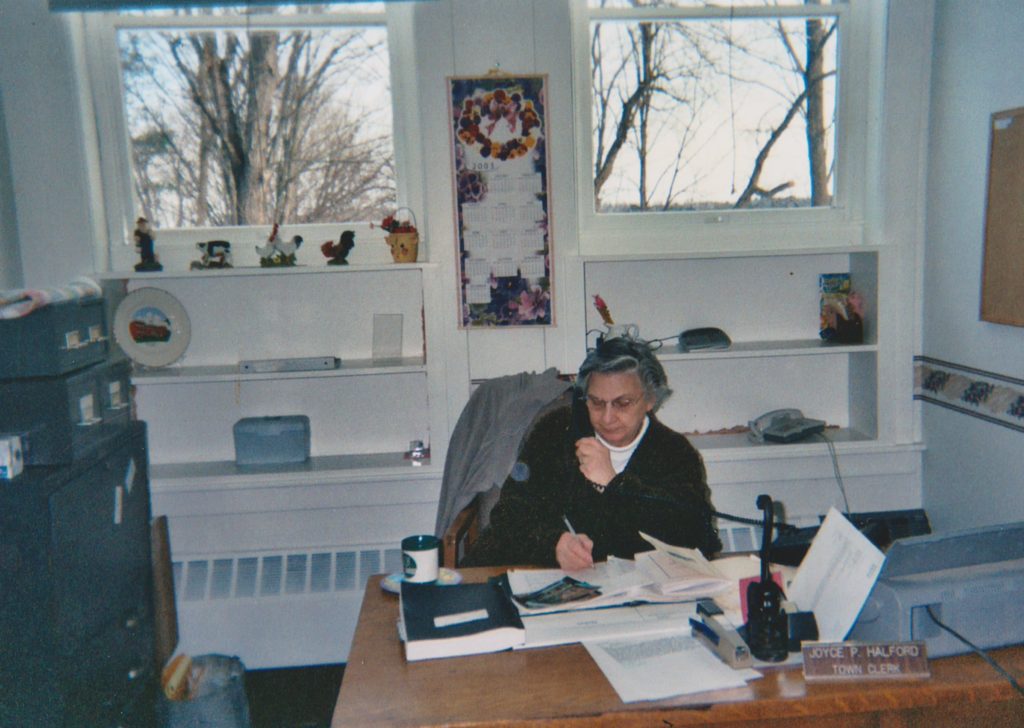
Hartland Town Clerk Joyce (Pelkie) Halford at the Town Office’s Hartland Academy Location
*
On November 17, 2008, the Town Office moved back to the Opera House and the former Hartland Academy building was put up for sale. Long term hopes of restoring and preserving the majestic Opera House remained but unfortunately several structural and infrastructural issues which had plagued the building for years continued to contribute to its declining state and additional costs of operation. The building’s roof eventually fell into an extremely hazardous leaking condition and major code compliance and/or system upgrades were desperately required for the heating, plumbing and electrical systems as well as fire code and accessibility code compliance.
As the town continued to face growing annual operating costs and general maintenance of the building as well as local economic struggles, hopes of renovating and preserving the landmark venue with public funding were quickly fading. In 2017, arrangements were made to sell the building along with its small lot of land to a private owner.
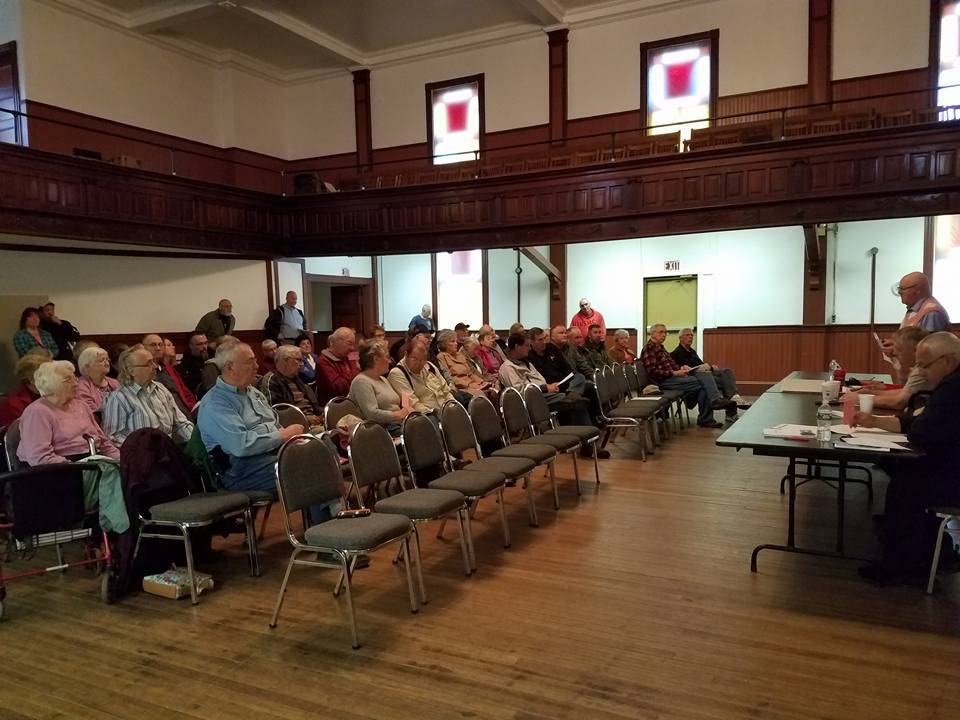
Last Hartland Town Meeting held at Town Hall – 2017
*
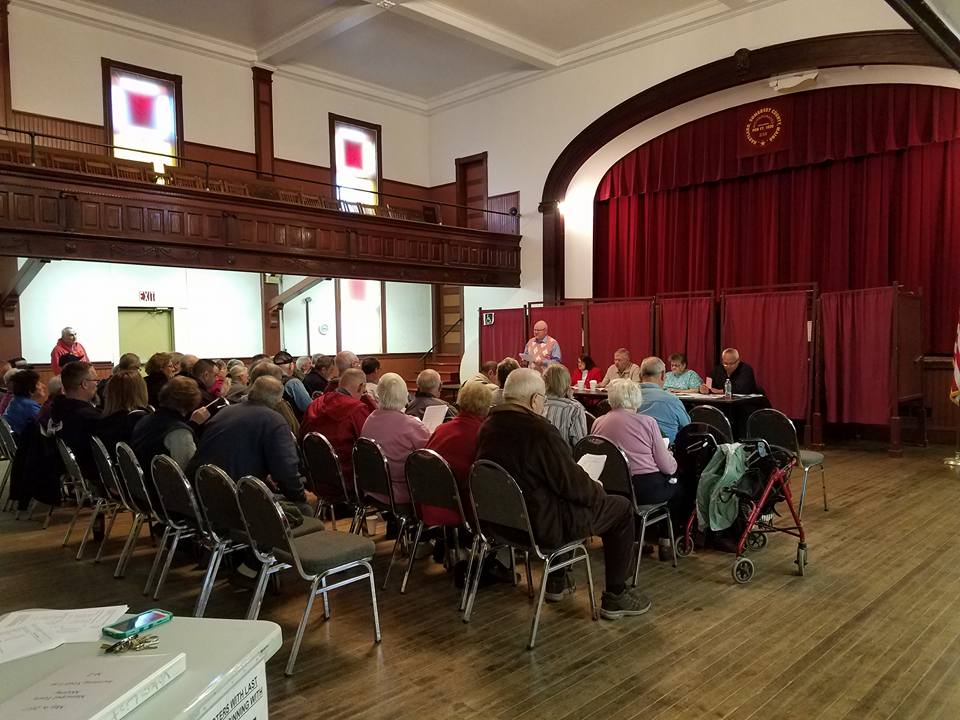
Last Hartland Town Meeting held at Town Hall – 2017
*
In 2016, lifelong resident Myrtle (Lovely) Marble presented a sustainable, long term option for a Town Office location when she purchased the former Bangor Savings Bank building and lot on Elm Street and offered it to the town as a gift under the premise of it becoming the future home of the Town Office. In 2017, the citizens of Hartland accepted the gracious offer and relocated the Town Office to the former bank building.
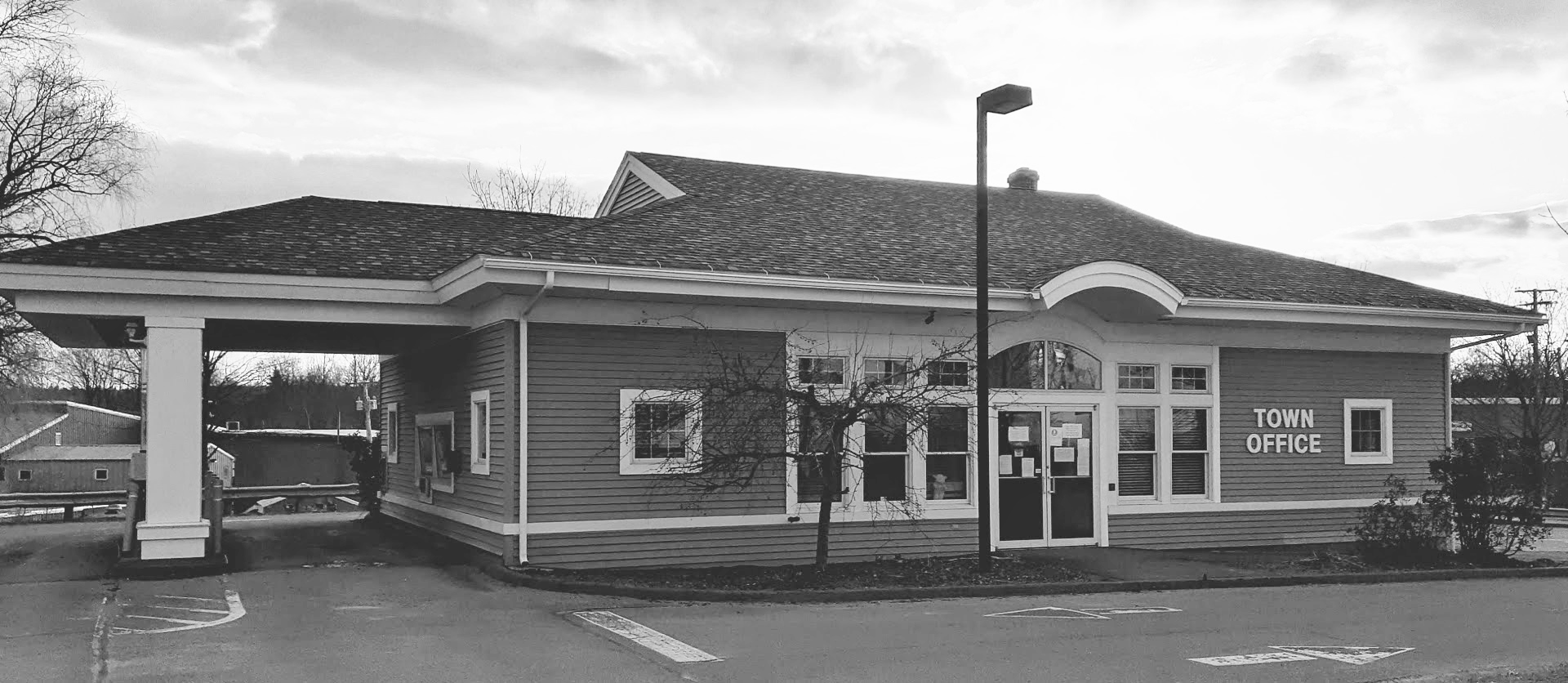
New home of Hartland Town Office on Elm Street
(Photo courtesy of Will Bunker Photography)
*
Following the Town Office’s move to Elm Street, the Opera House was officially abandoned for public use. Hartland Historical Society Member Mark Kantor was given guided access to the building soon after to take one last series of photos to document its storied past in pictures.
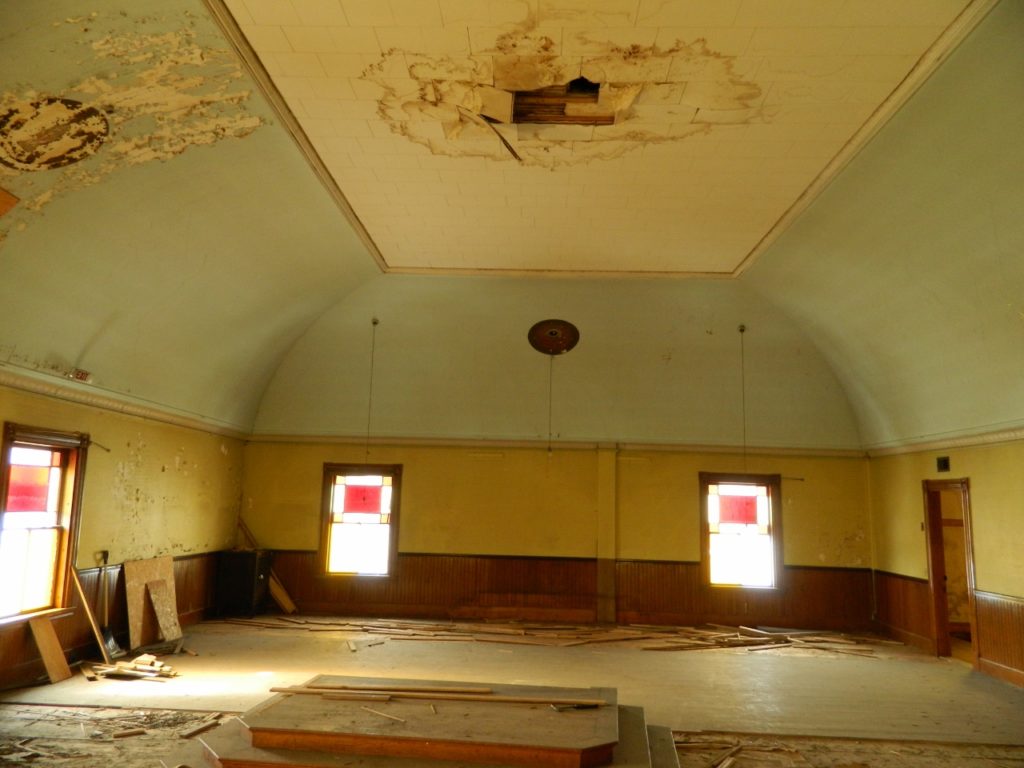
International Organization of Odd Fellows No. 106 former 3rd Floor Meeting Room
*
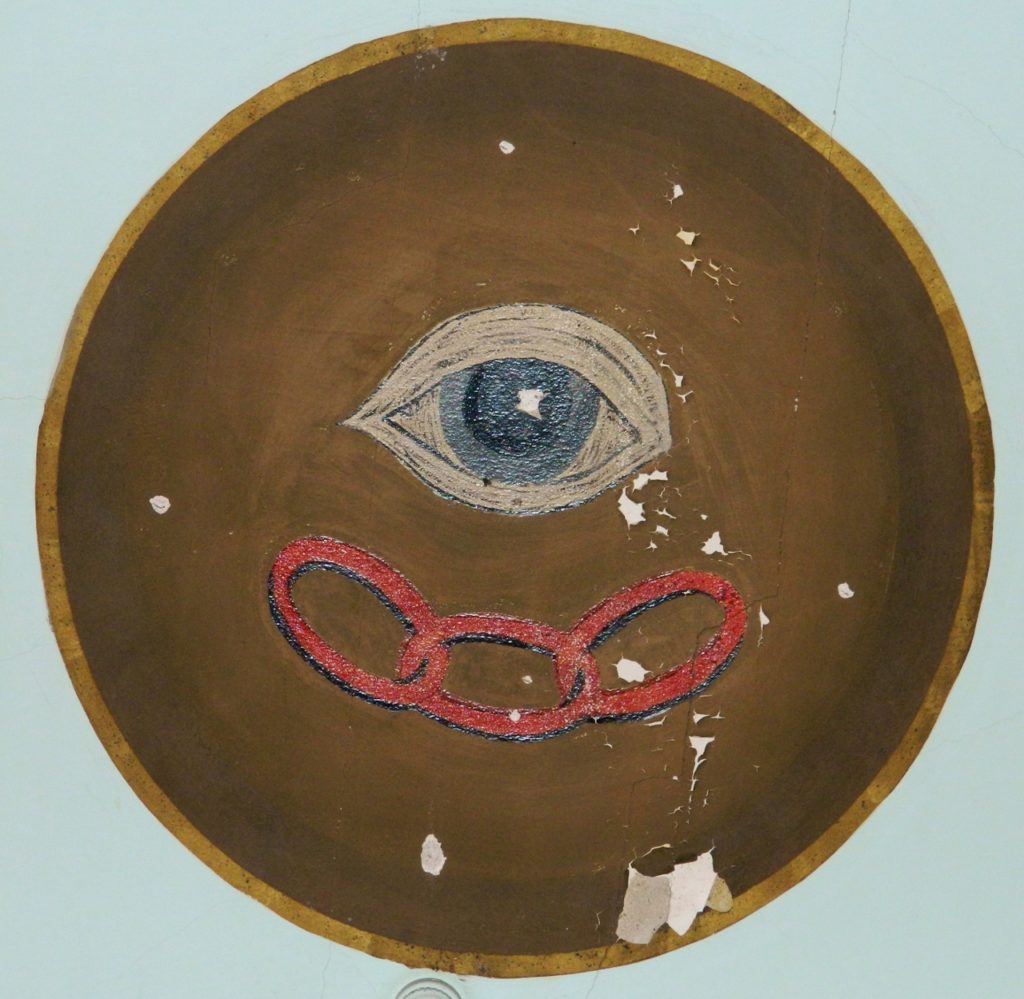
I. O. O. F. Symbol on the ceiling of their former 3rd Floor Meeting Room
*
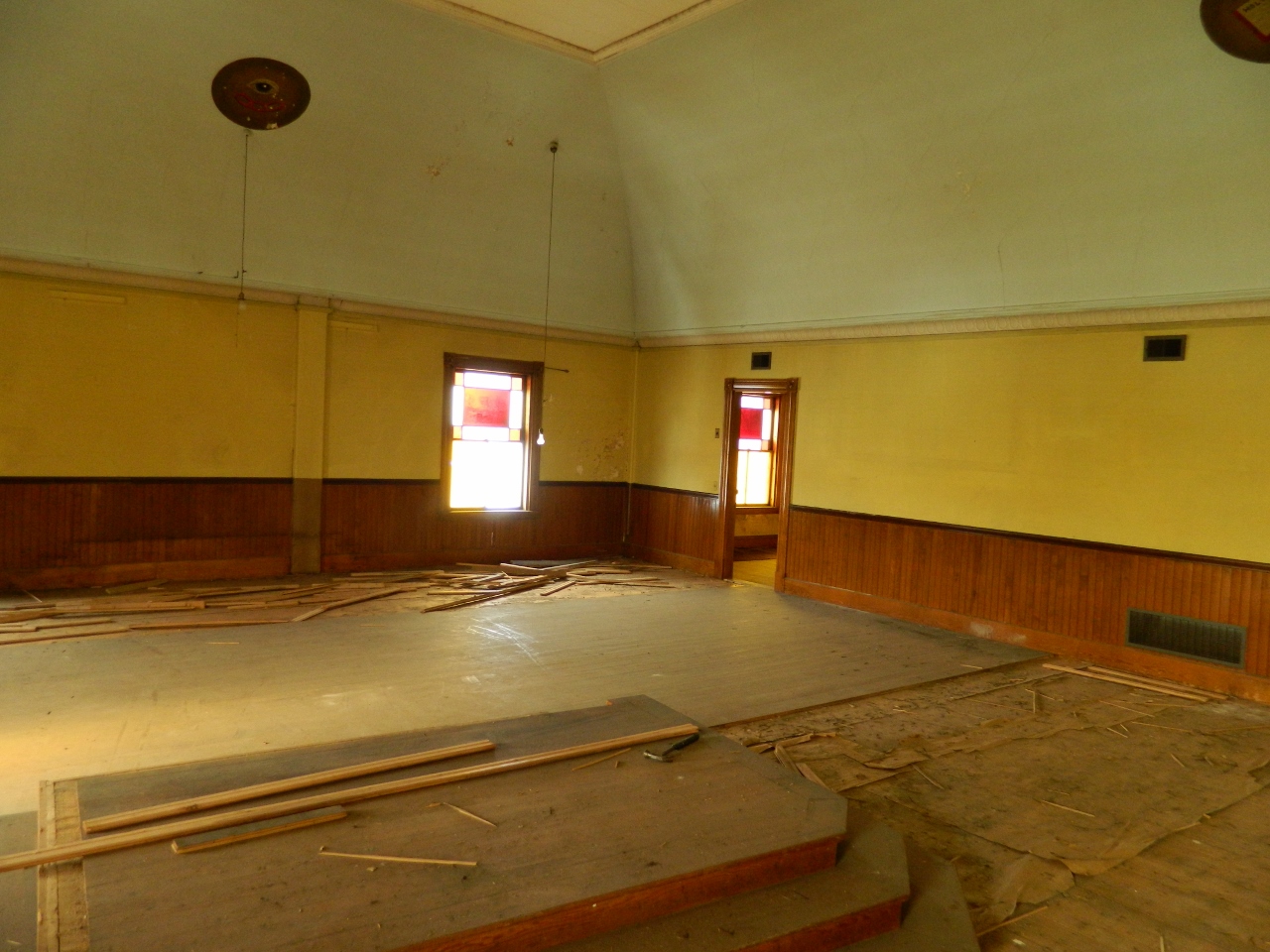
I. O. O. F. No. 106 former 3rd Floor Meeting Room
*
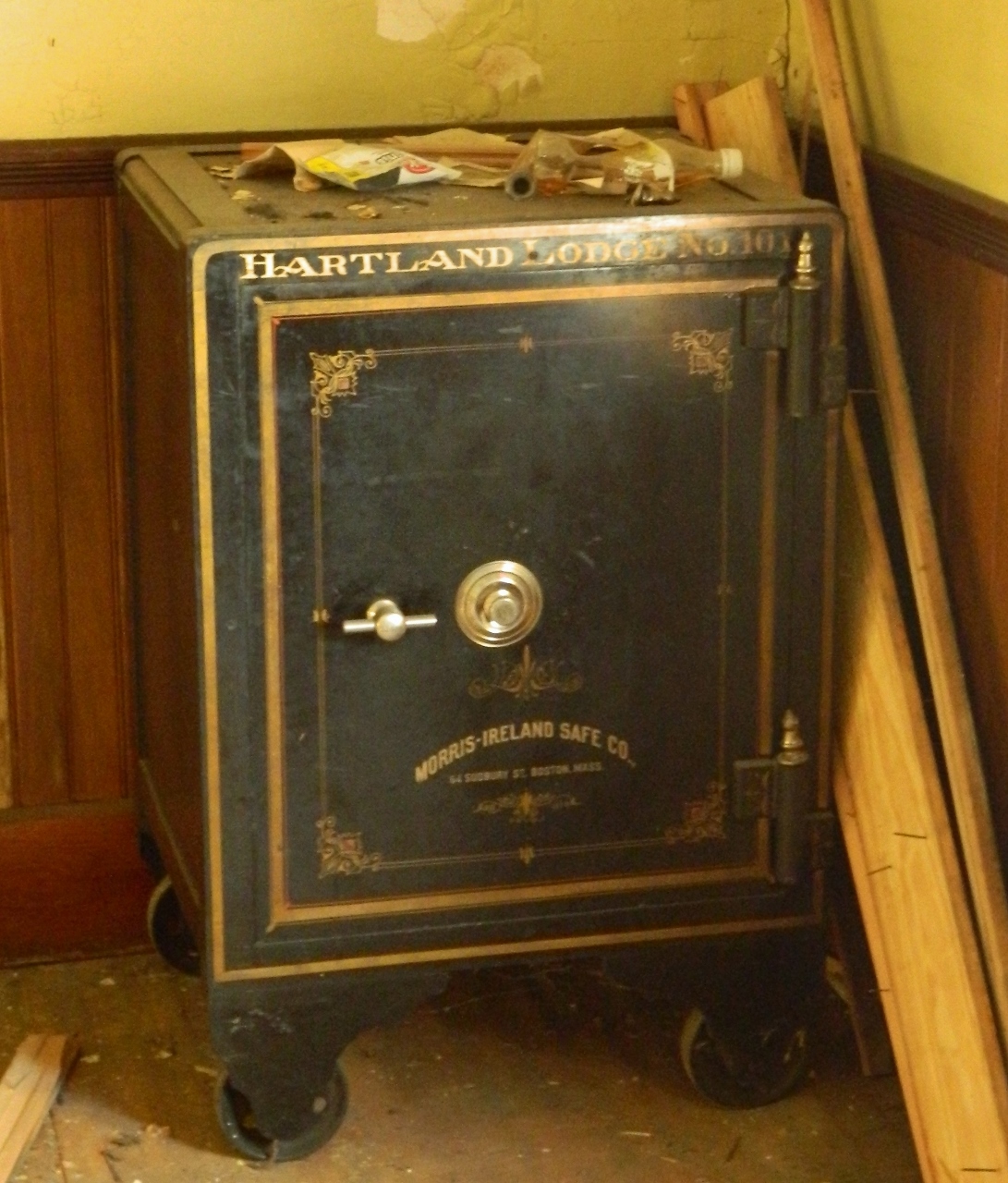
I. O. O. F. No. 106 Safe on their former 3rd Floor Meeting Room
*
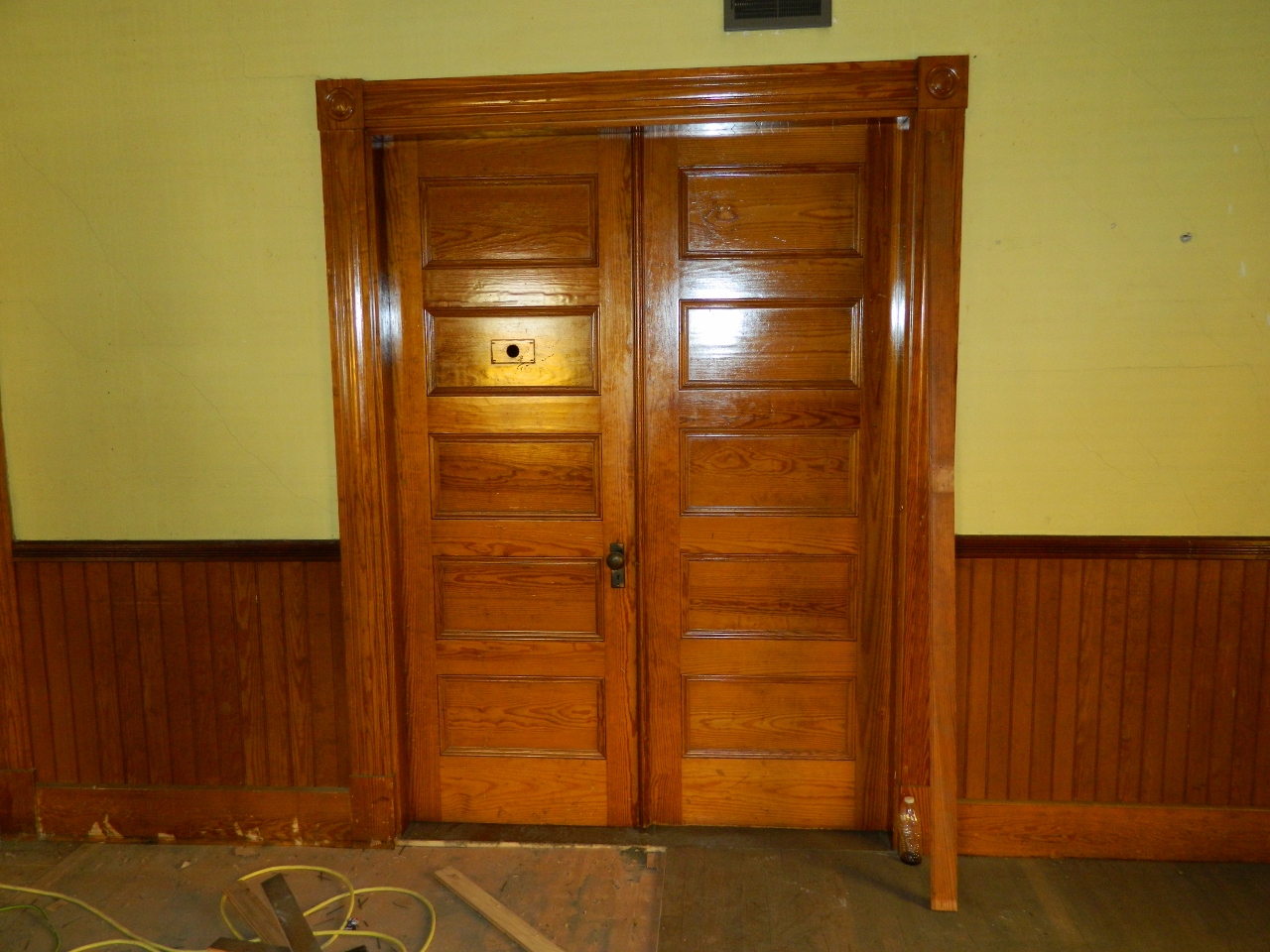
Entry Doors to I. O. O. F. No. 106 to their former 3rd Floor Meeting Room
*
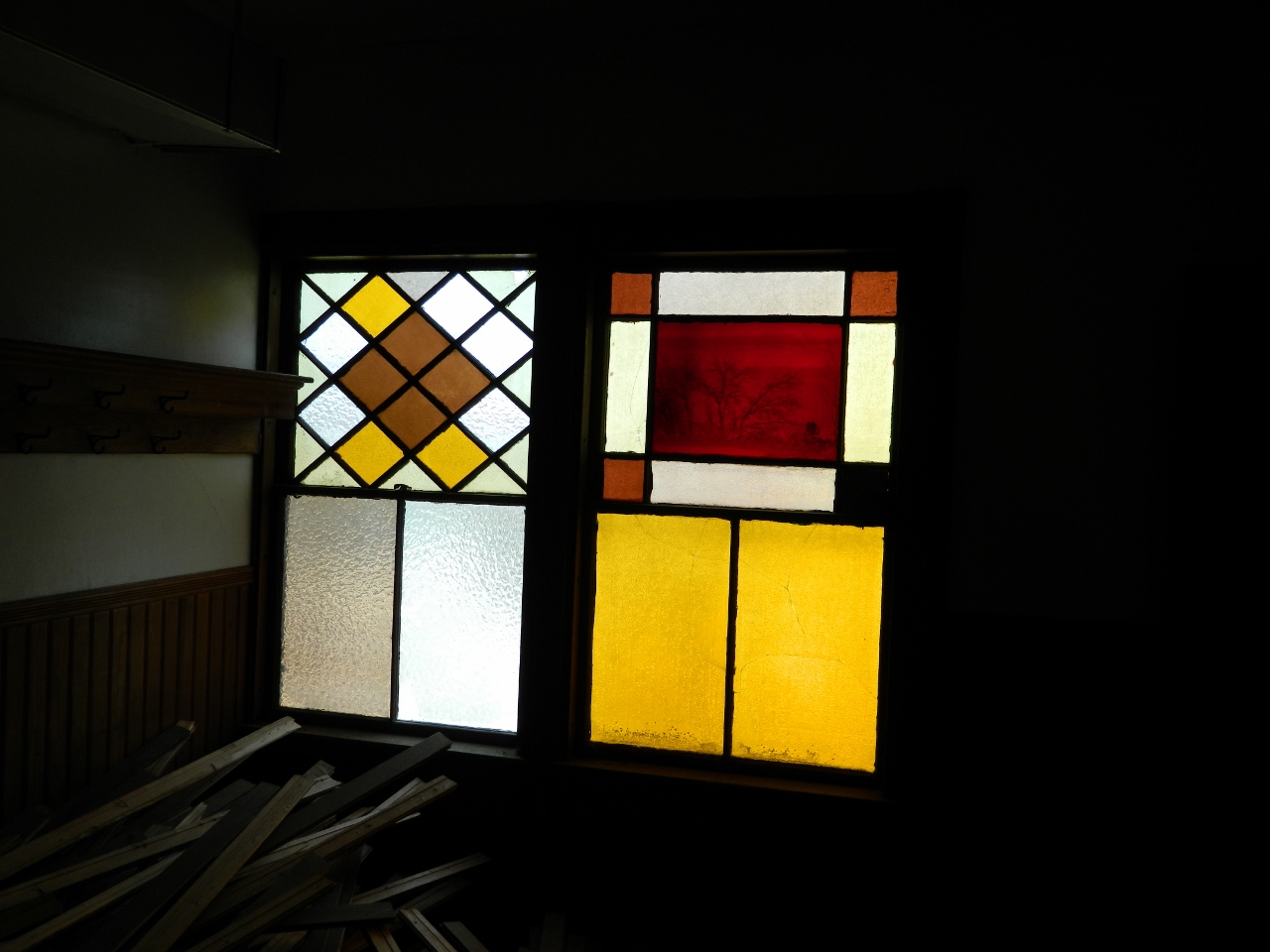
One of many decorative stained glass windows found throughout the building’s 3 stories
*
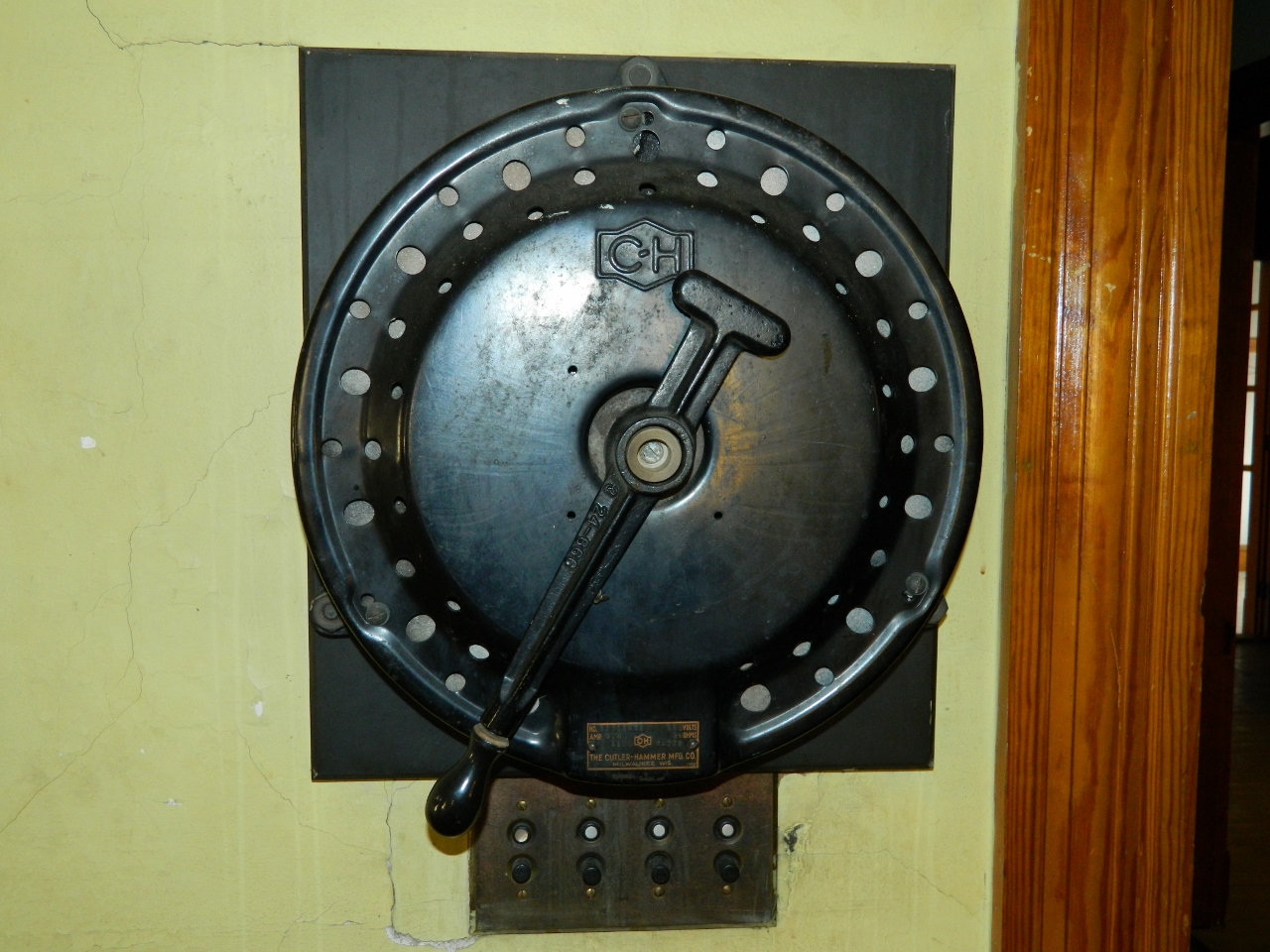
1100 Watt Cutler-Hammer Resistance Plate Dimmer used for Stage Lighting
*
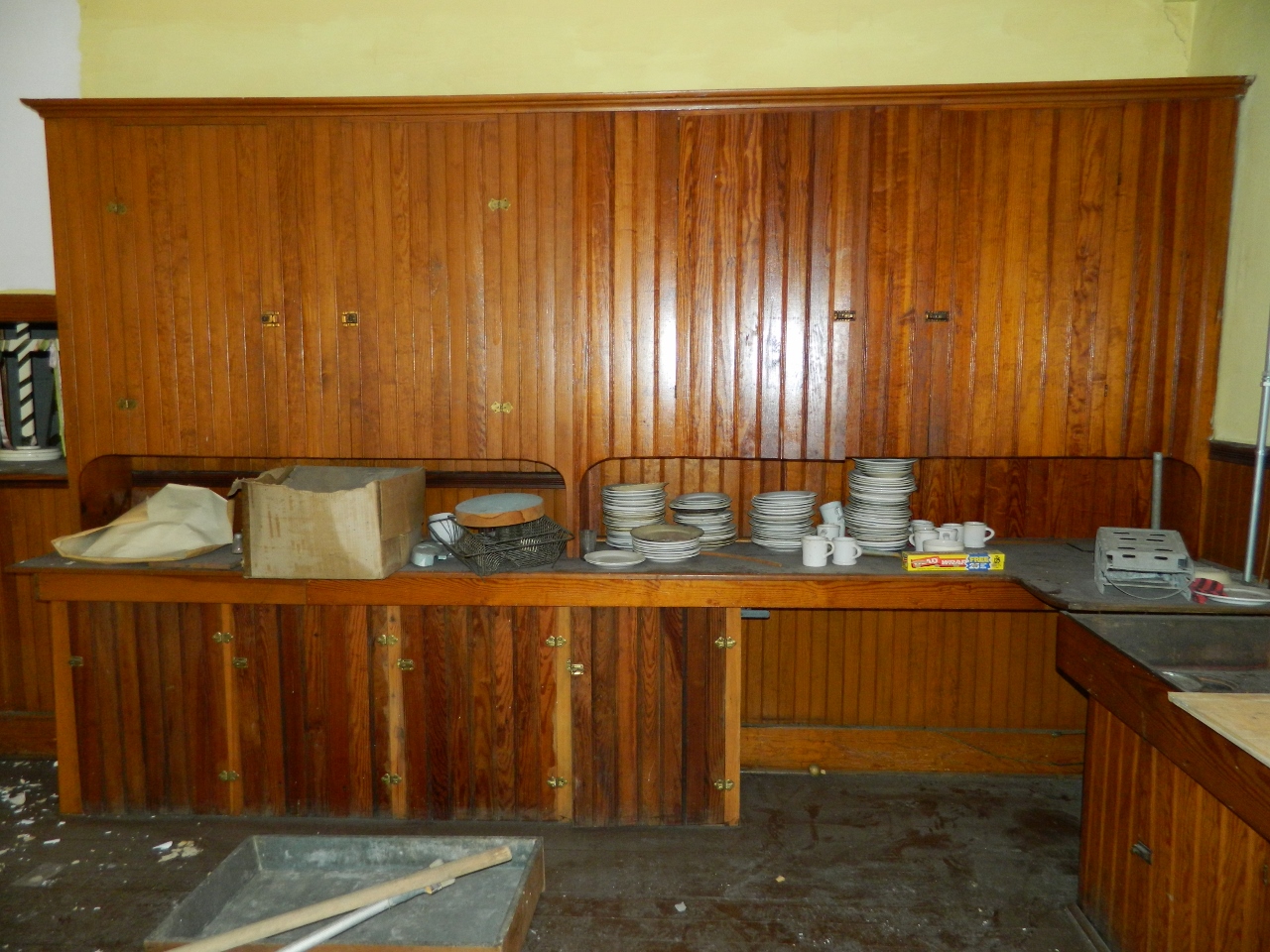
Opera House Kitchen with Custom Made Cabinets
*
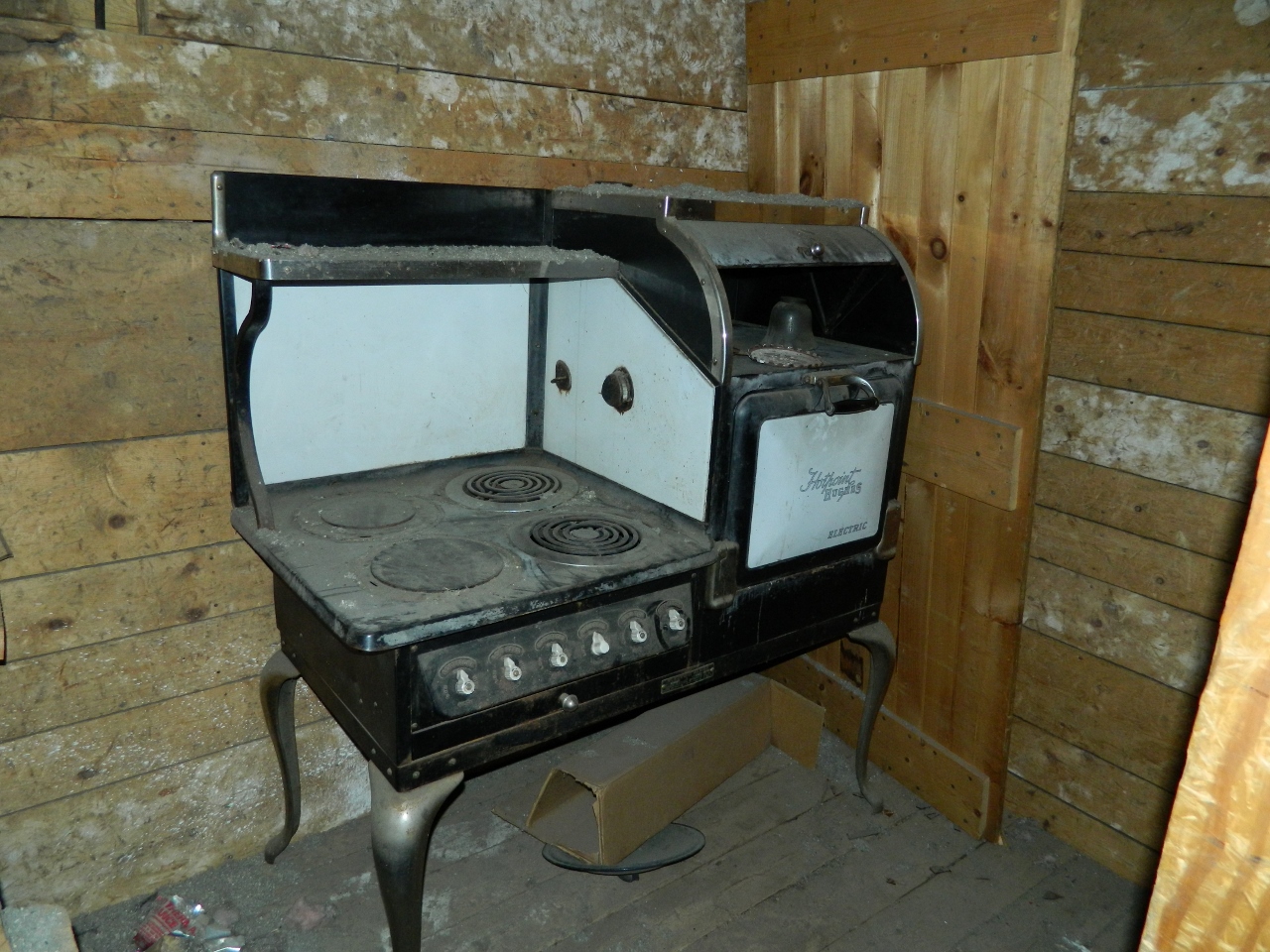
1922 Hotpoint Hughes Electric Range from the Opera House Kitchen
*
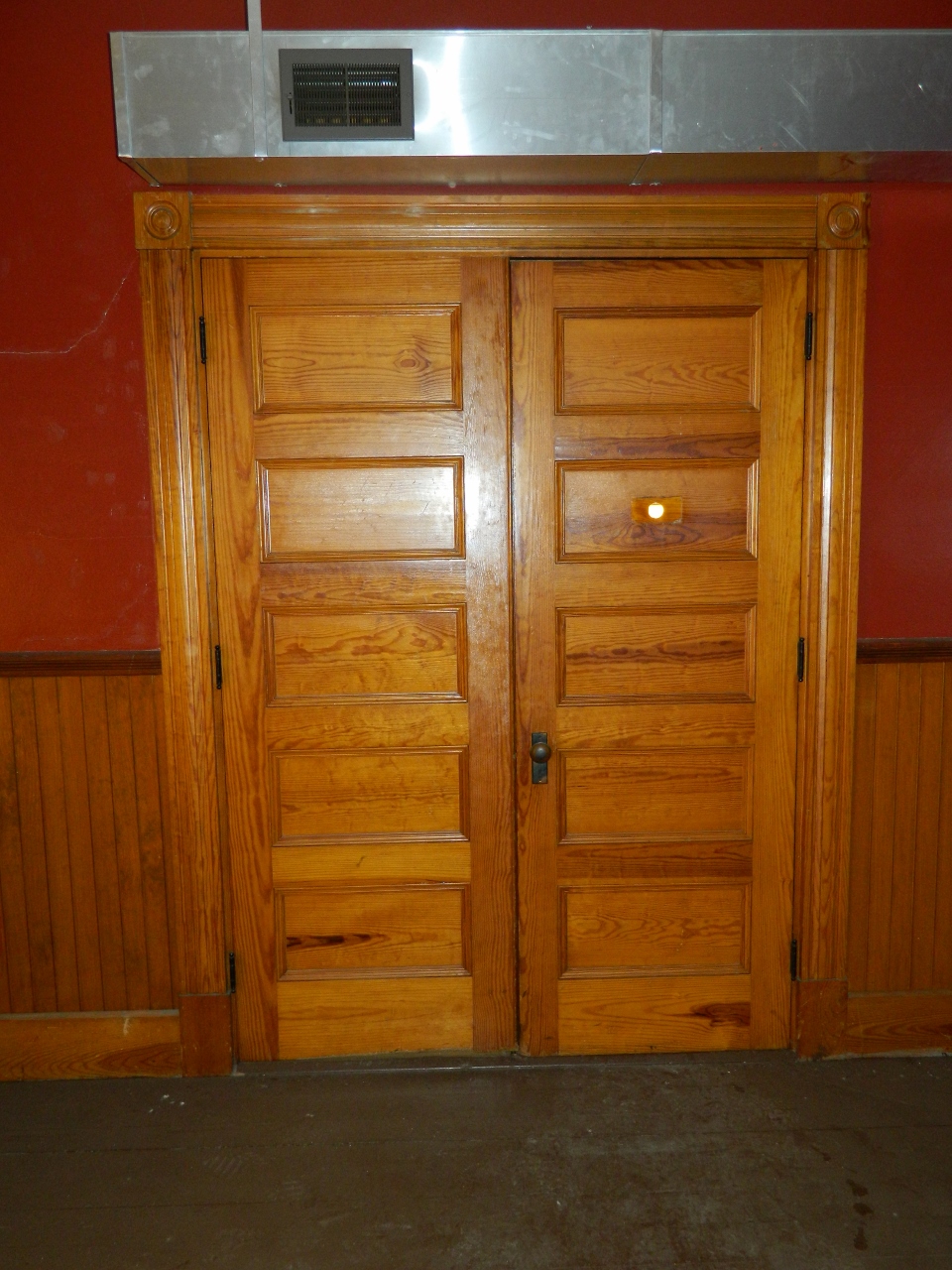
One of several beautiful sets of wooden doors located throughout the Opera House
*
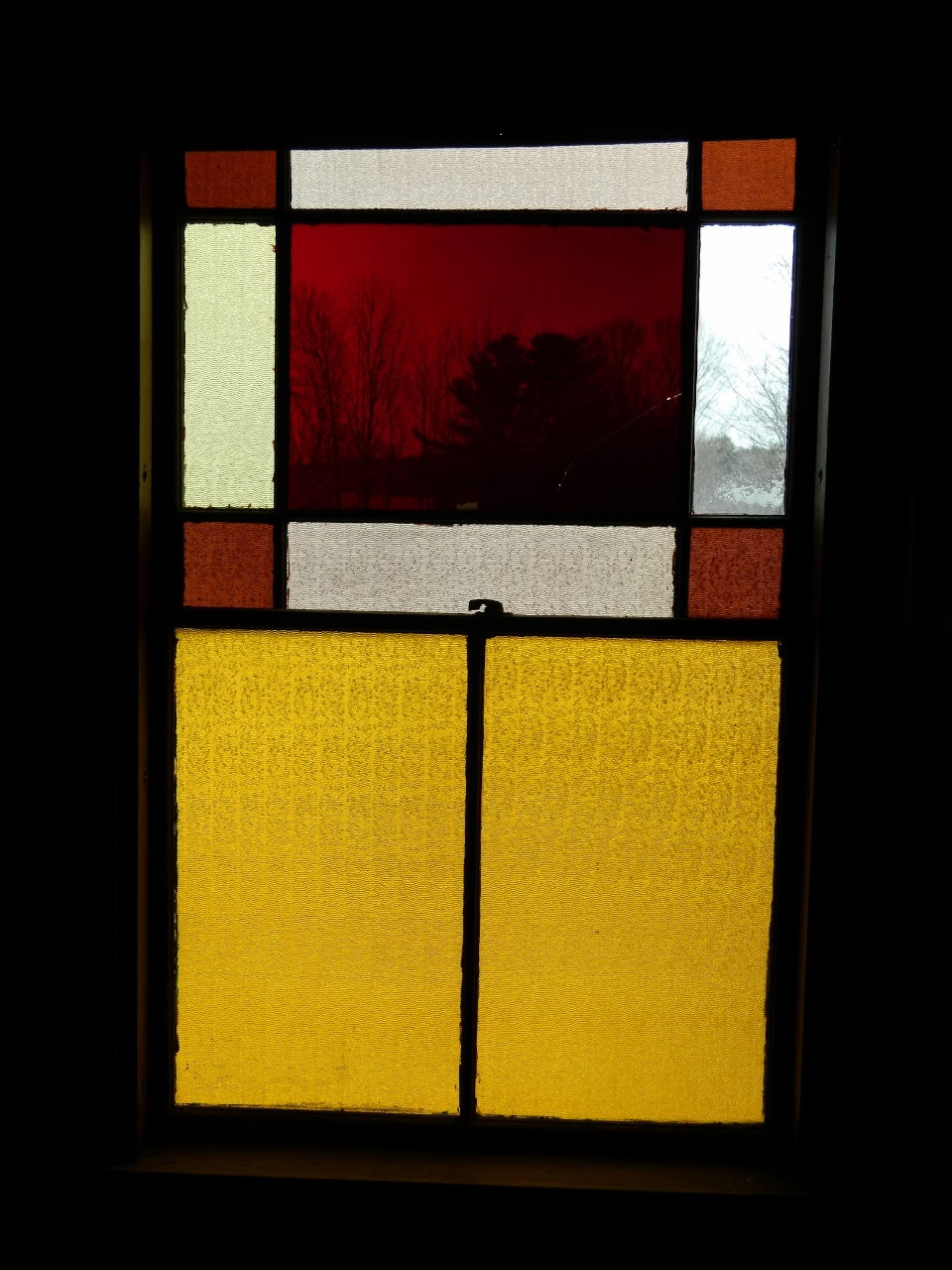
One of many decorative stained glass windows found throughout the building’s 3 stories
*
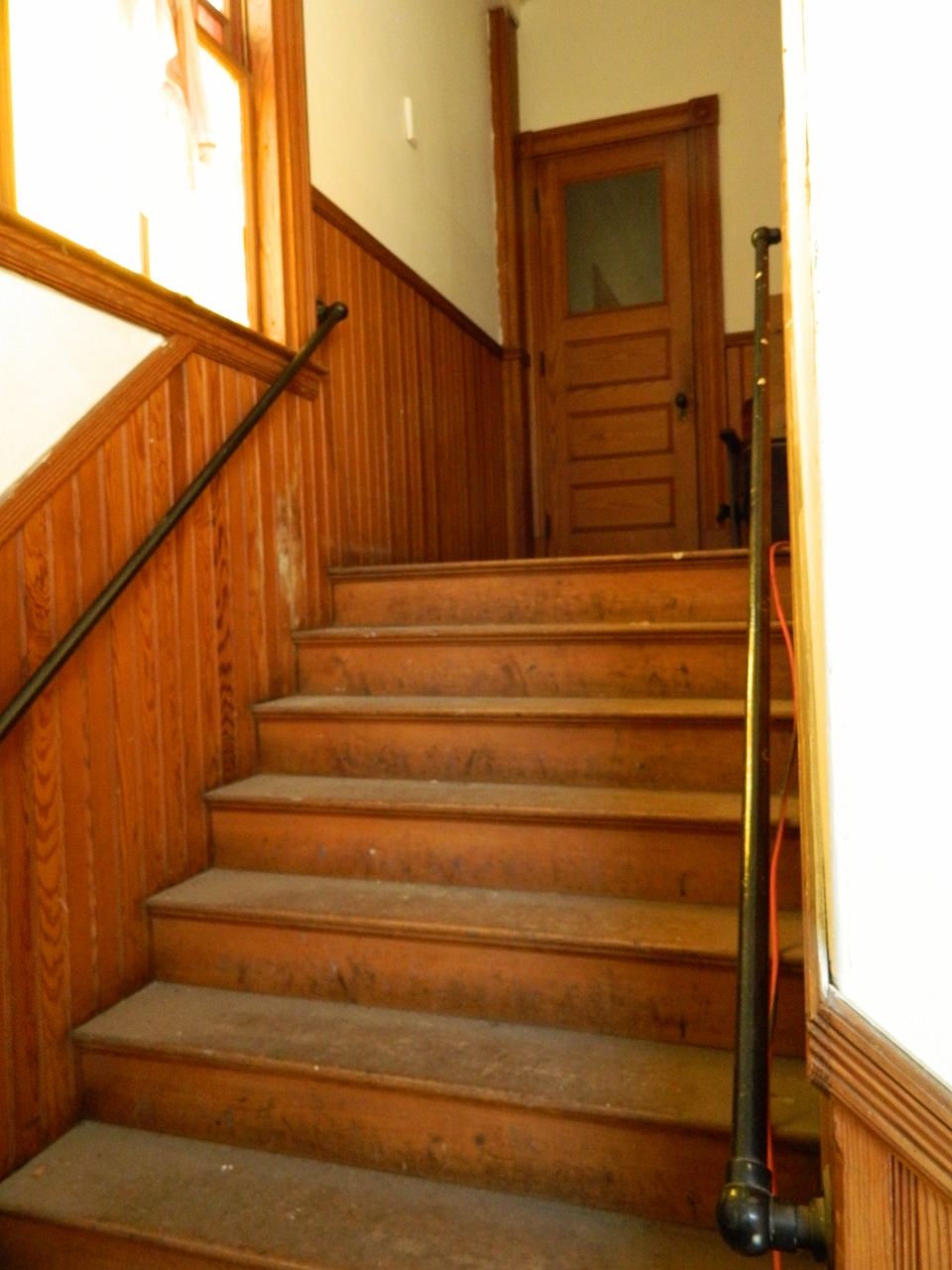
One of the side entries to the Balcony Level of the Opera House Main Hall
*
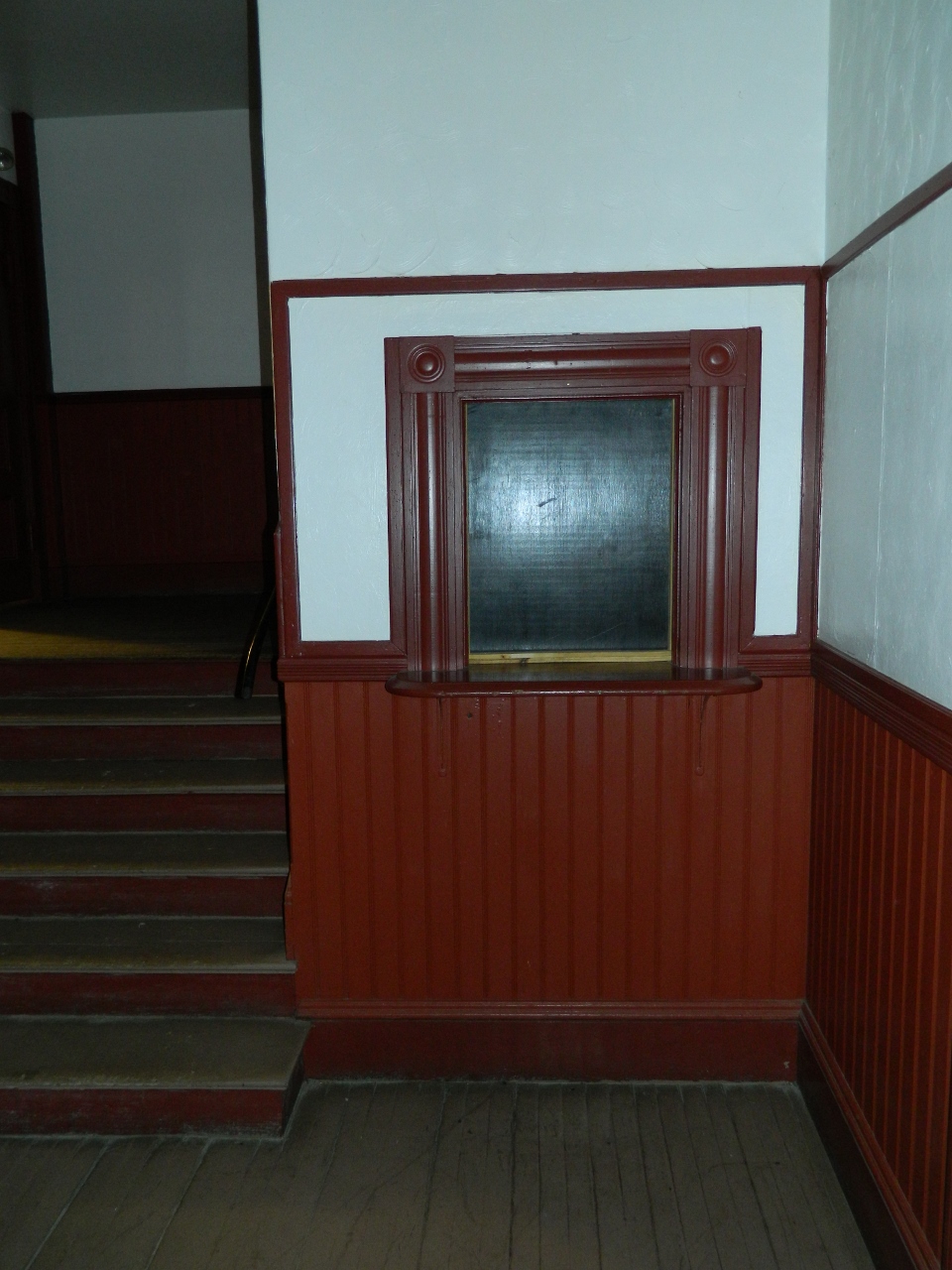
Ticket Office in the Main Lobby of the Opera House
*
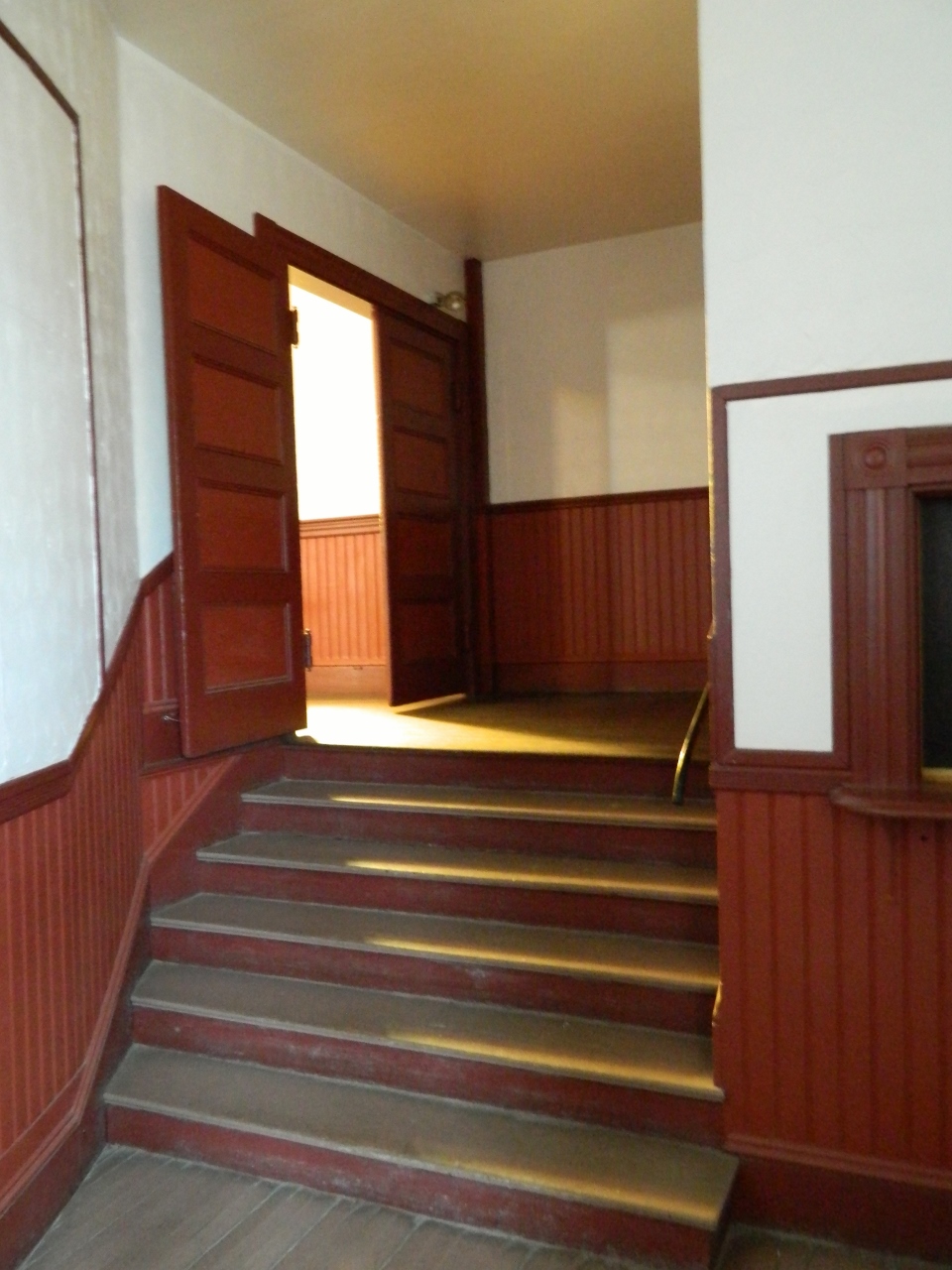
Right Side Entrance to Main Hall from Lobby of the Opera House
*
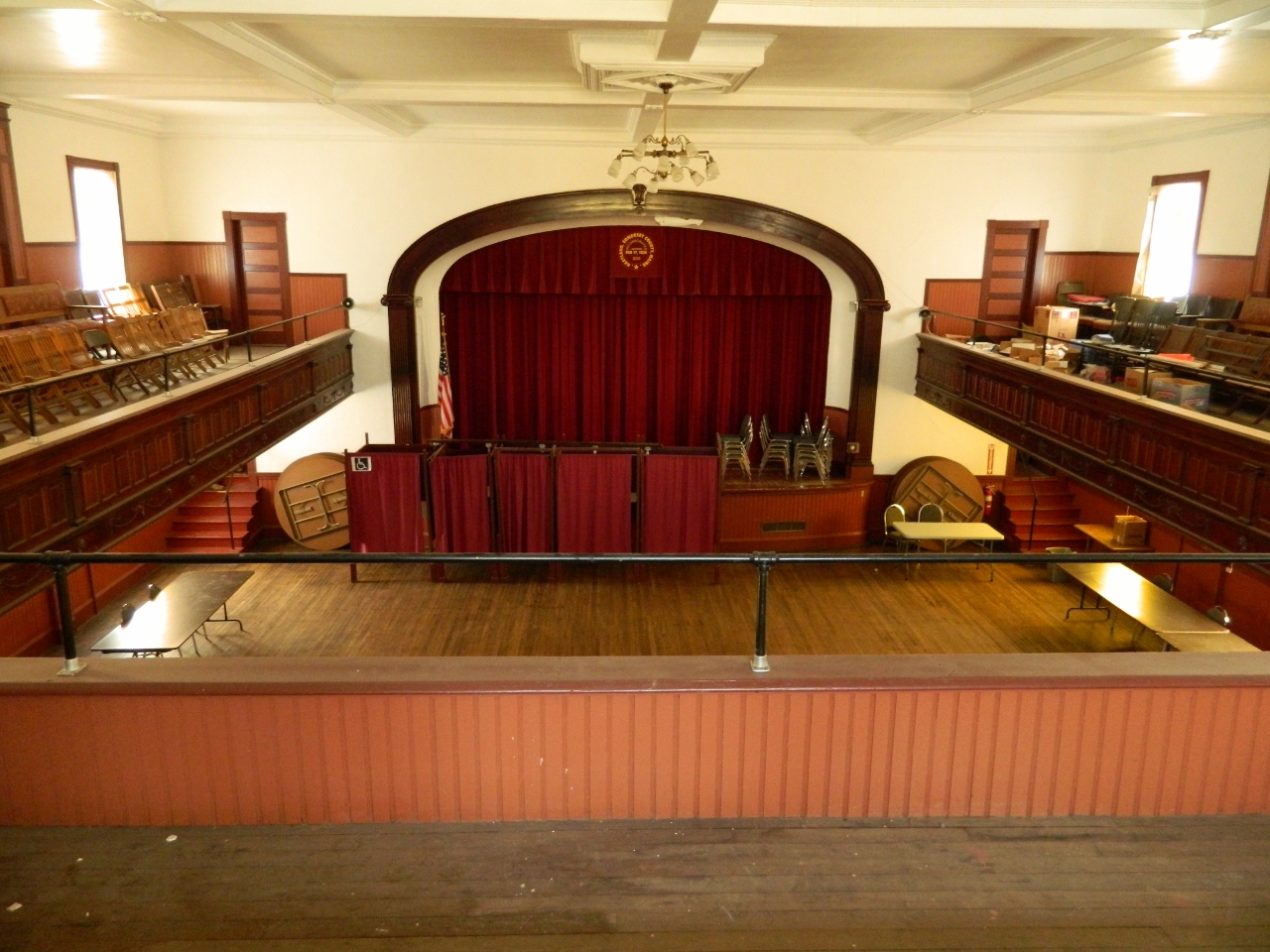
Main Hall & Stage of the Opera House from Center Balcony
*
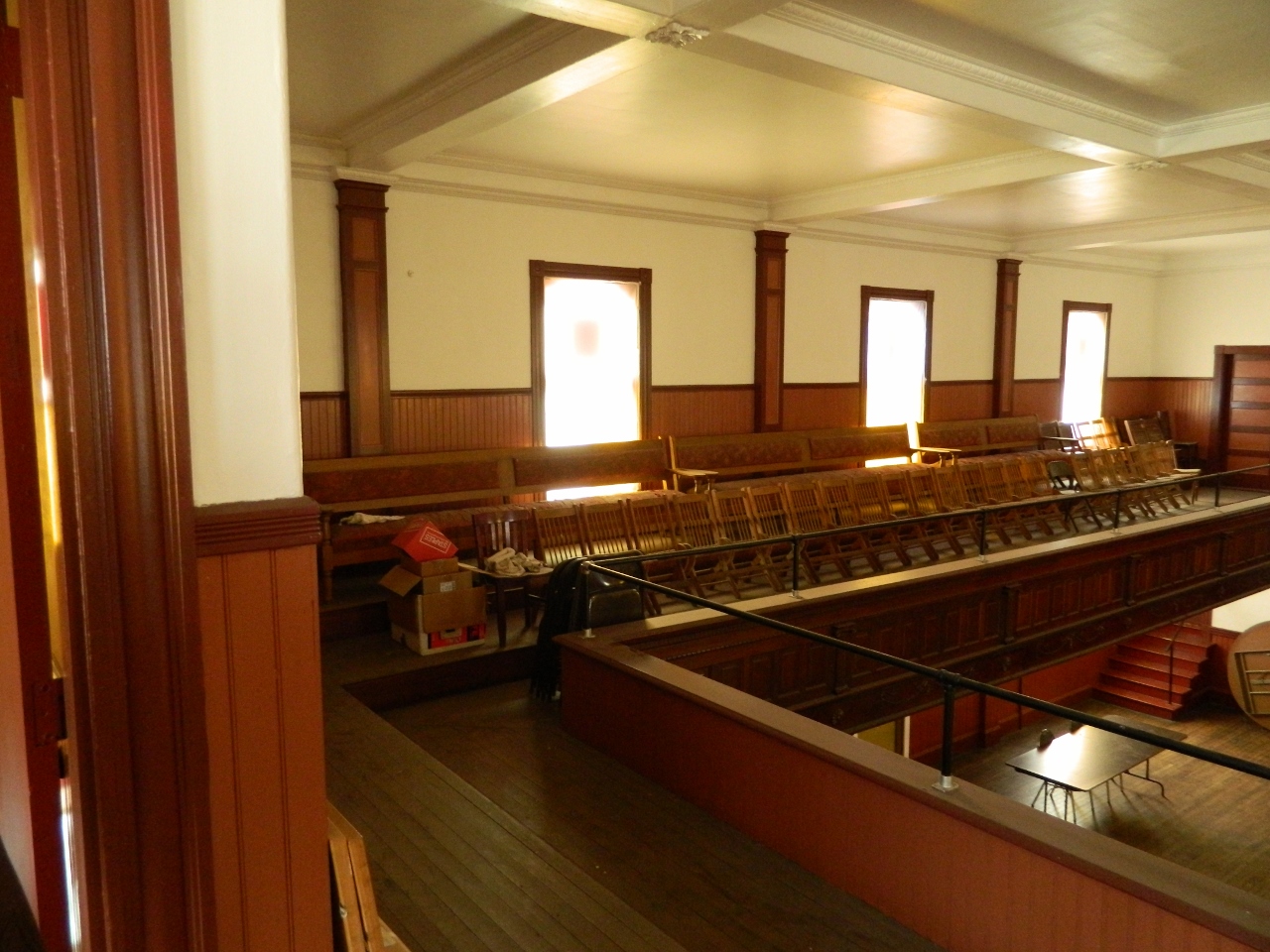
Left Balcony in Main Hall of the Opera House
*
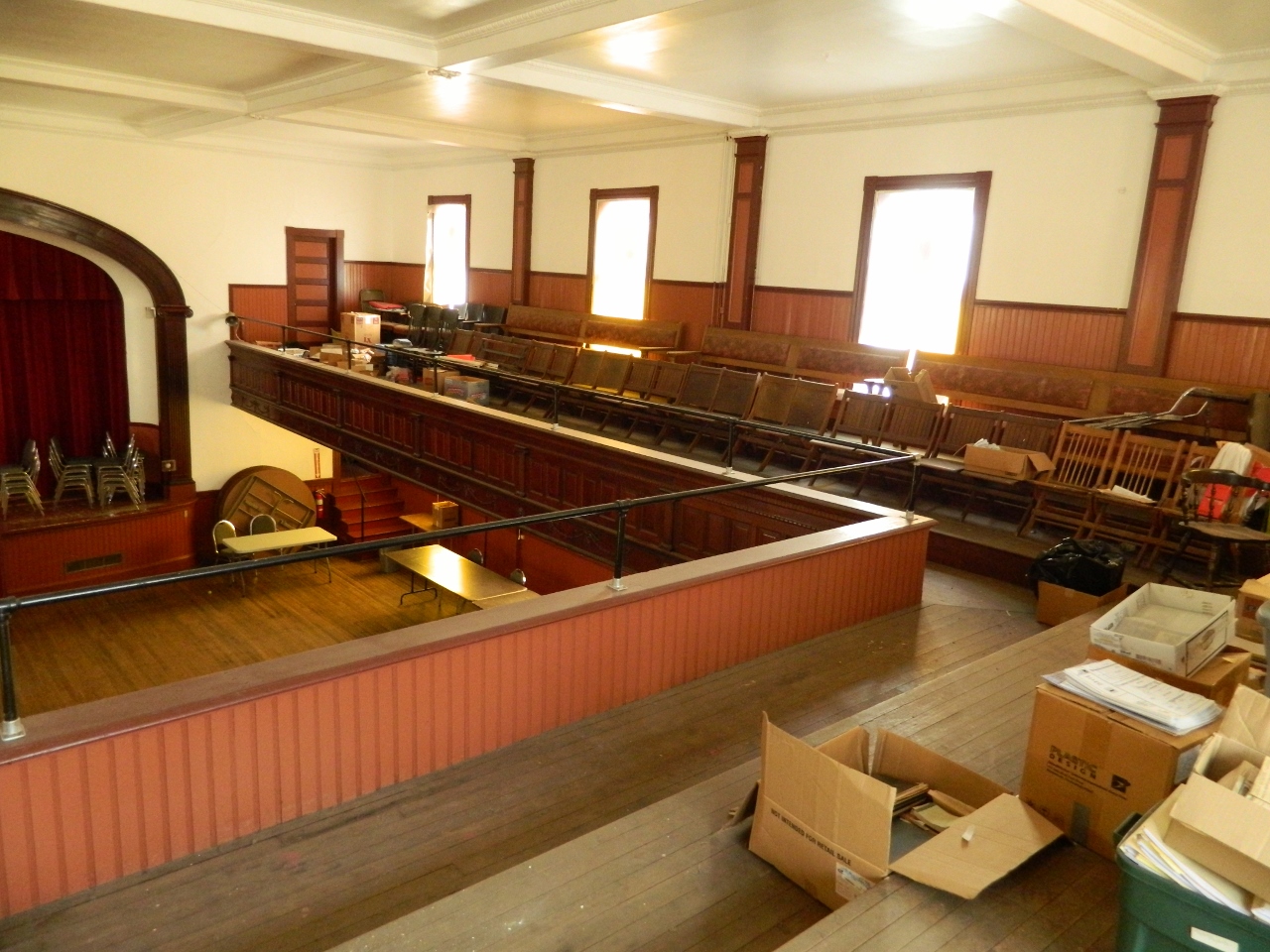
Right Balcony in Main Hall of the Opera House
*
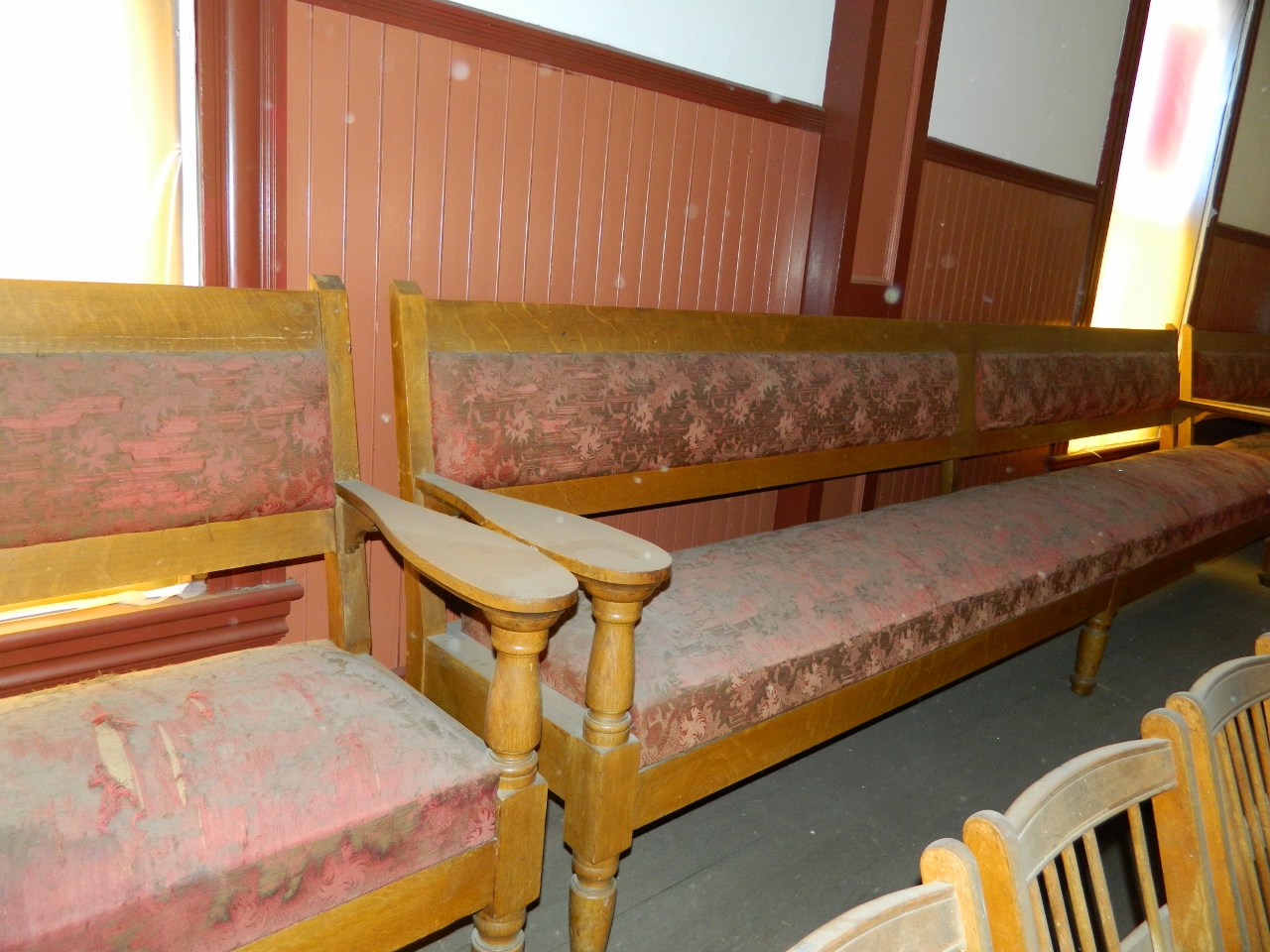
Bench Settees in Balcony of Main Hall of the Opera House
*
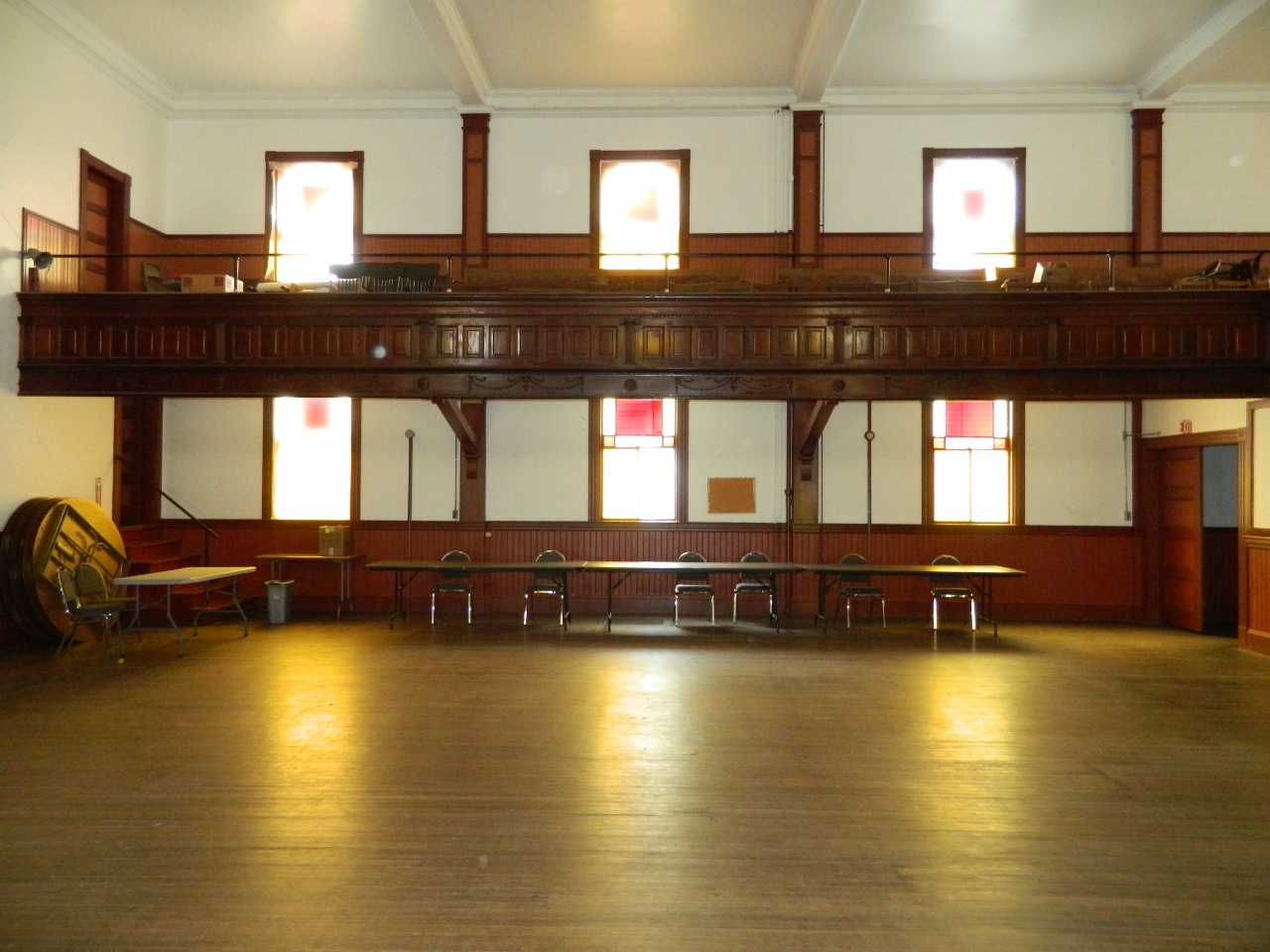
Right Balcony seen from the Main Hall Floor of the Opera House
*
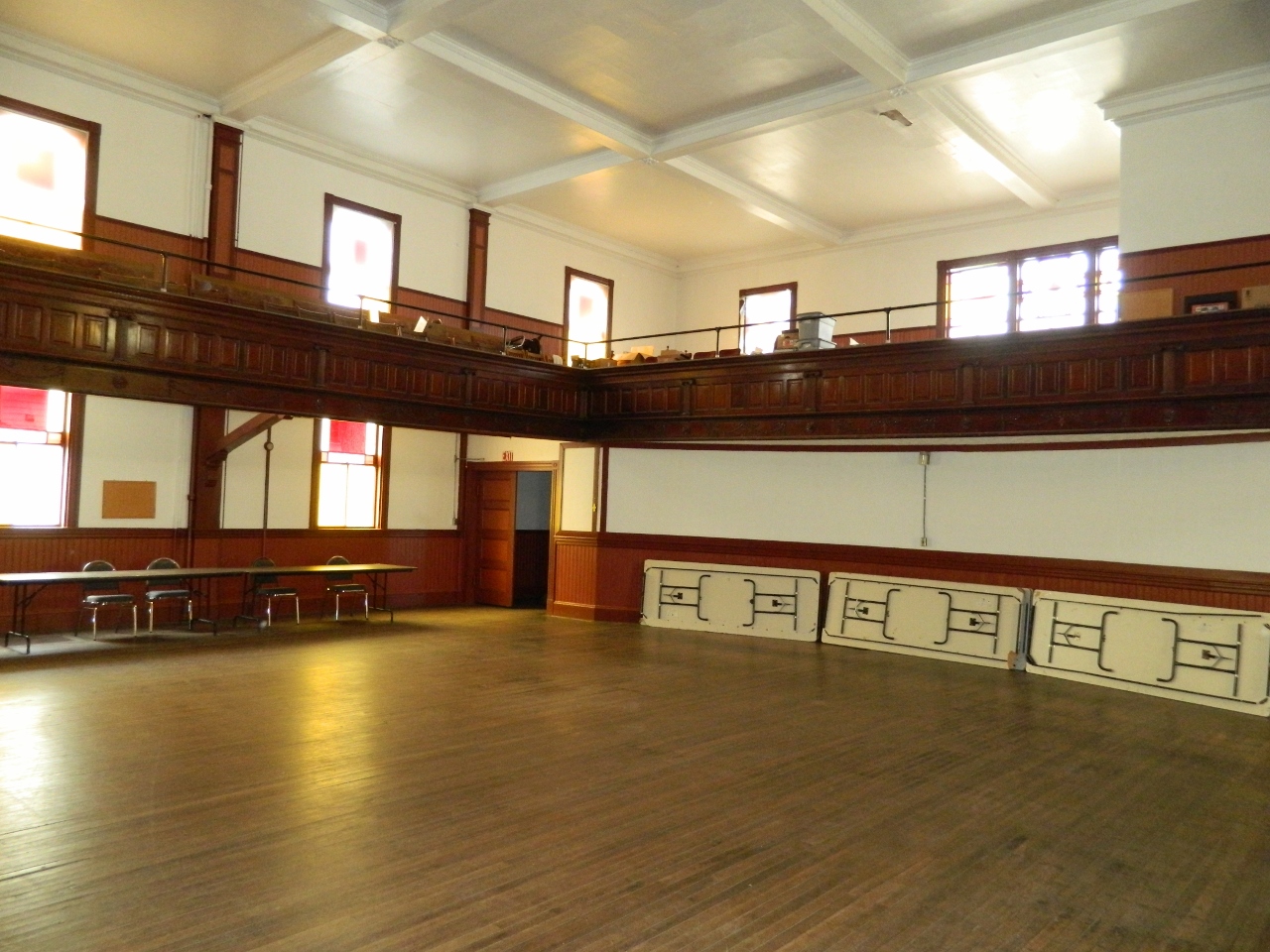
Corner of Balcony & Right Lobby Entrance seen from the Main Hall Floor of the Opera House
*
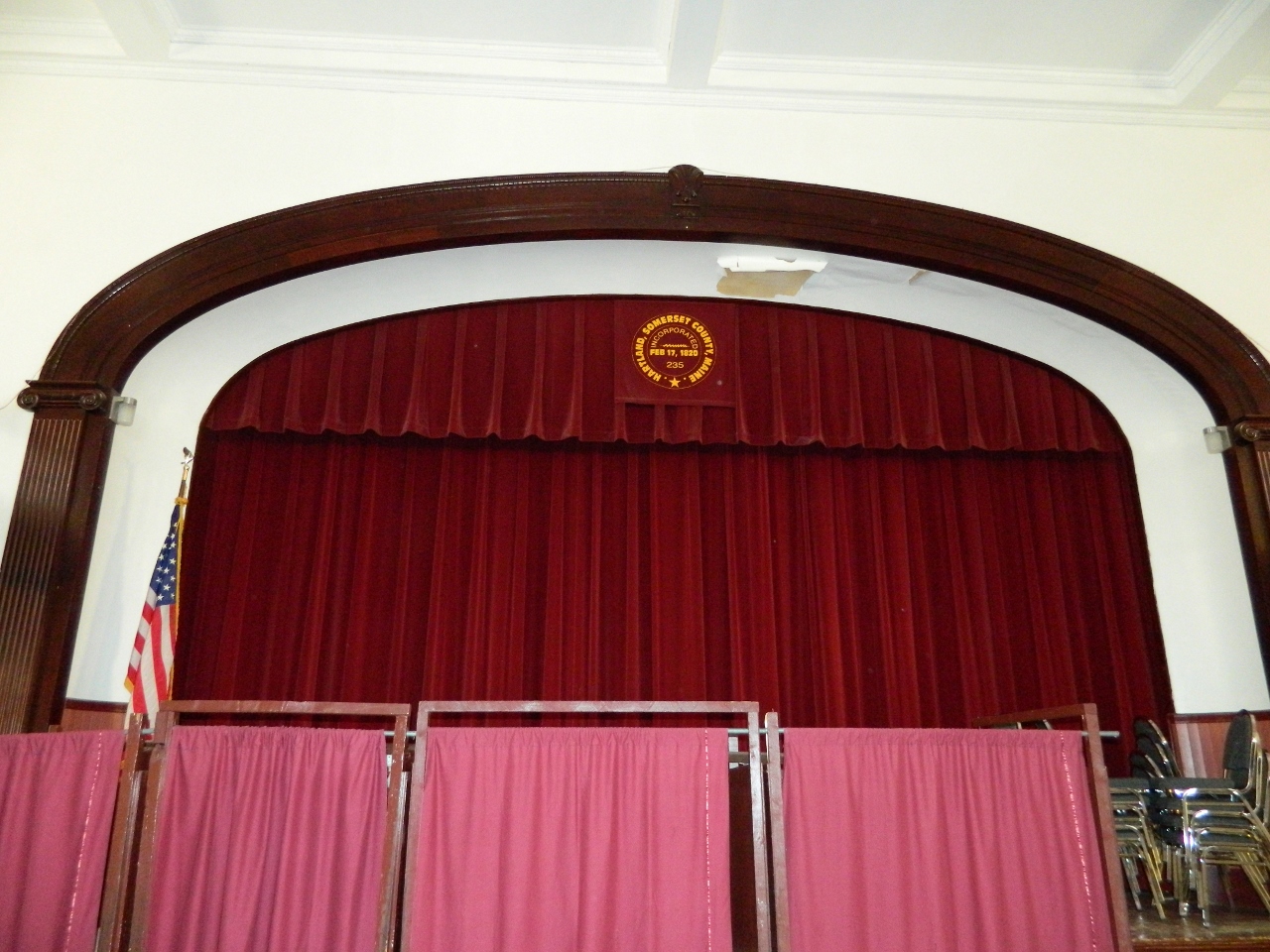
Stage seen from the Main Hall Floor
*
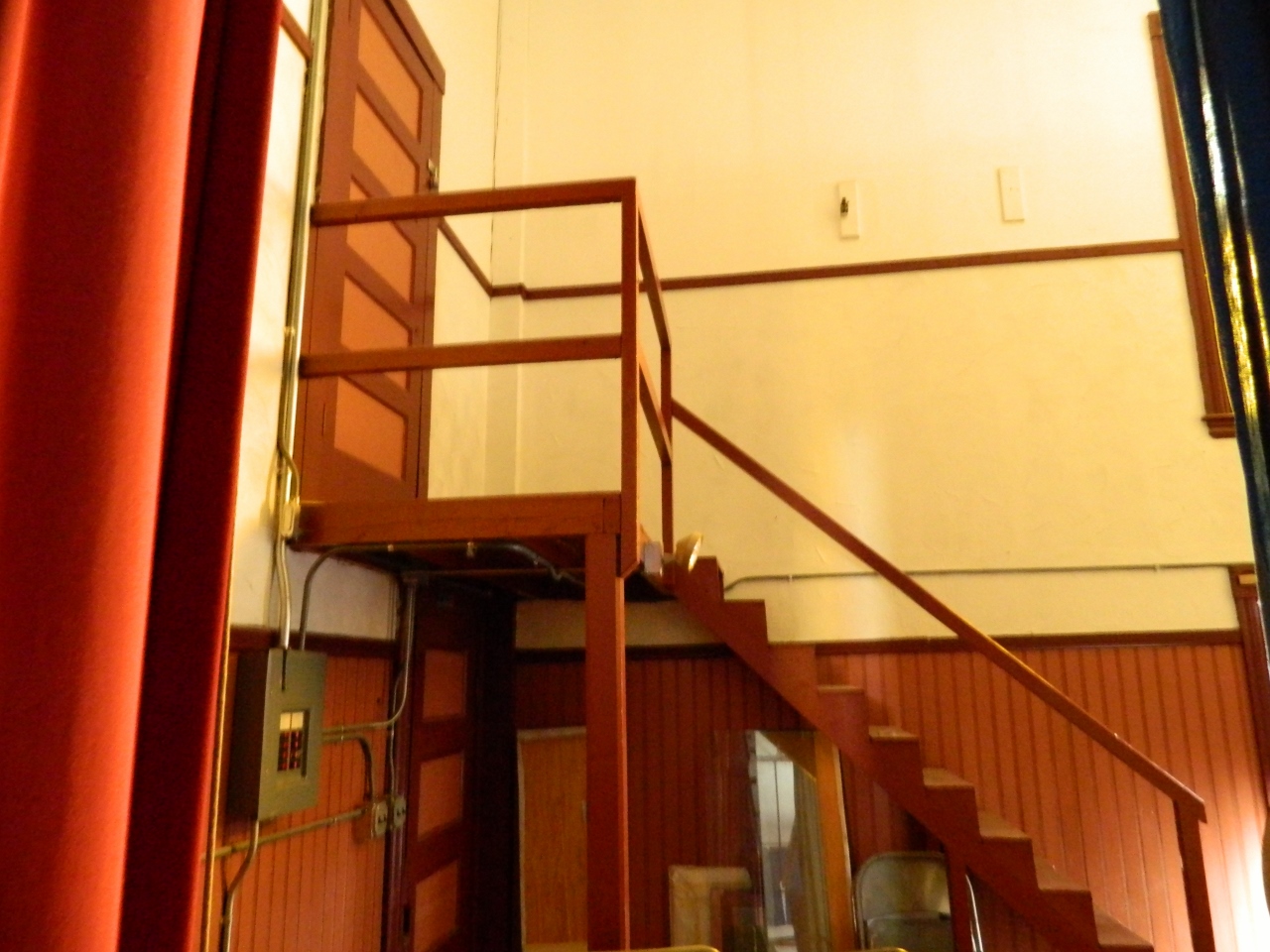
Backstage Stairwell to some of the Dressing Rooms
*
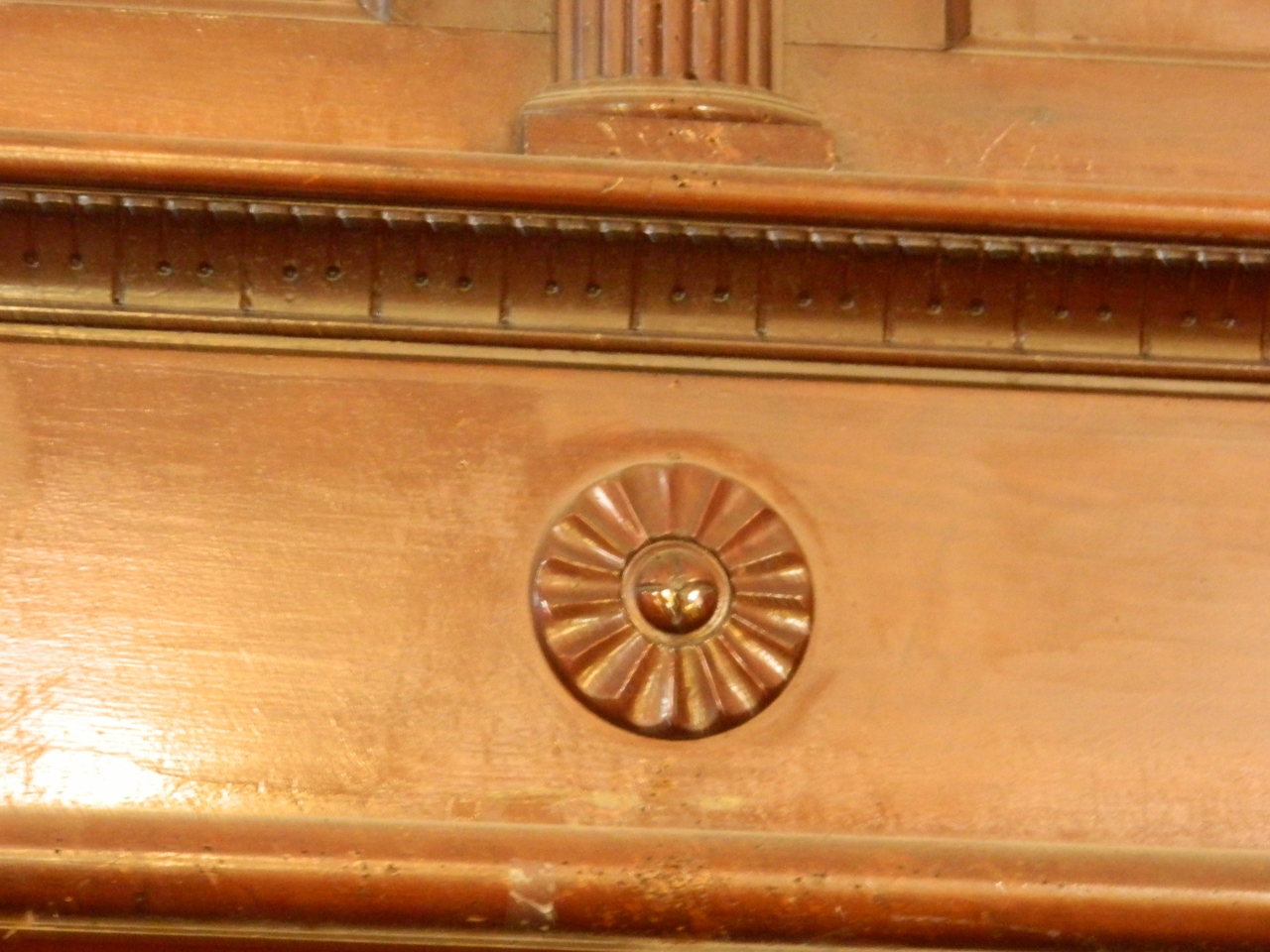
Ornate Wood Carving from the Balcony Railing
*
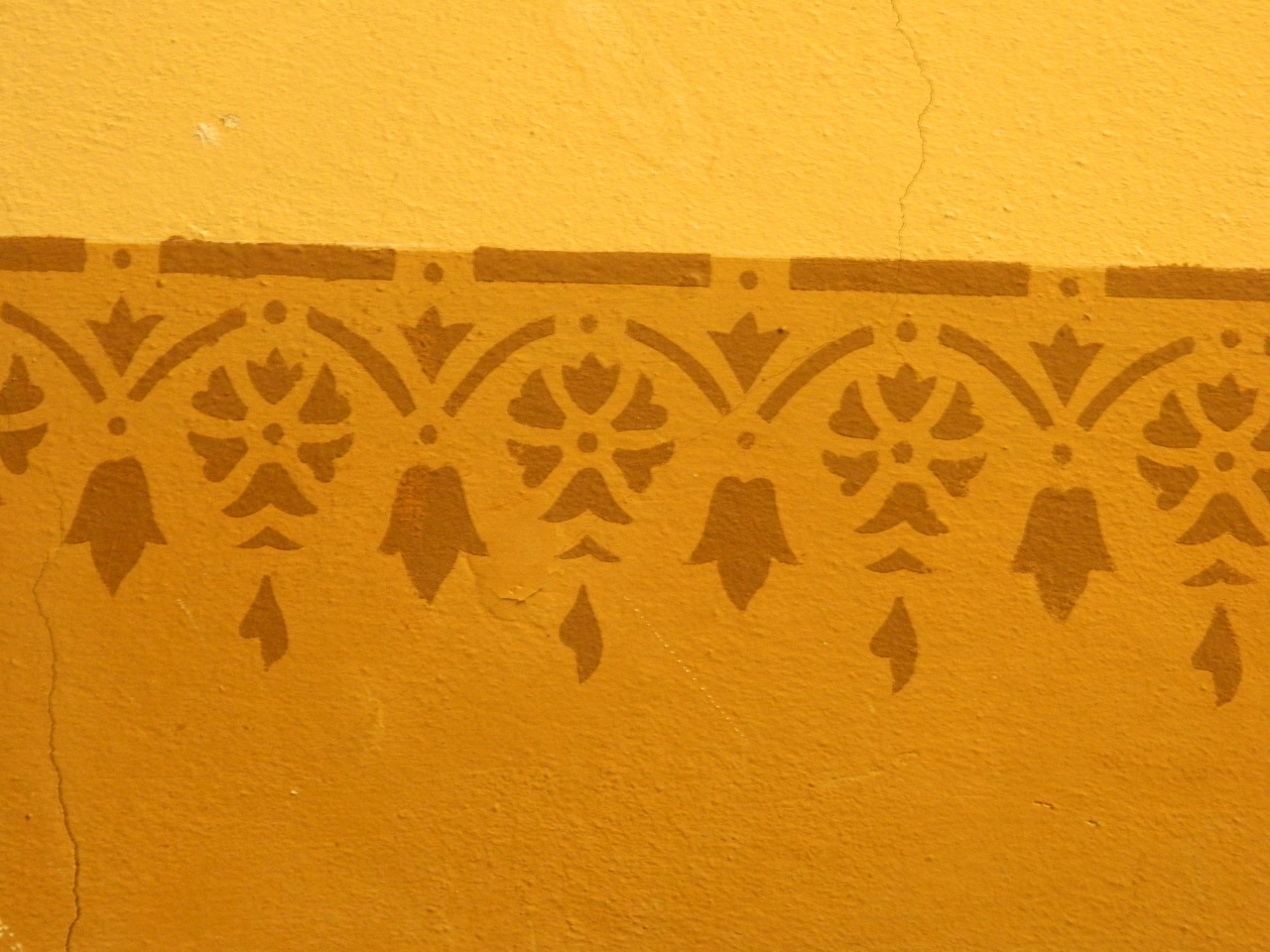
Ornate Wall Trim from the walls of the Main Hall
*
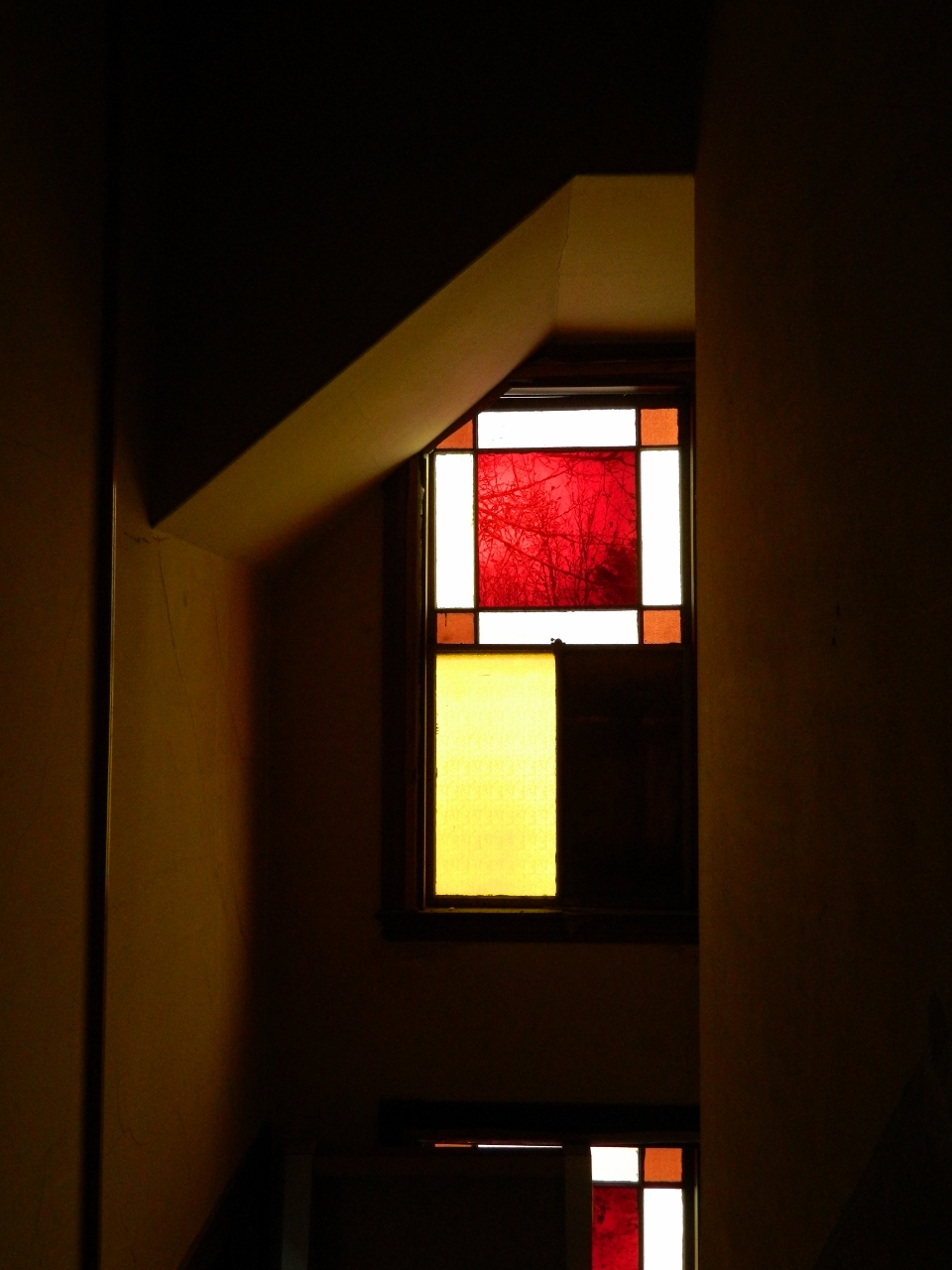
One of many decorative stained glass windows found throughout the building’s 3 stories
*
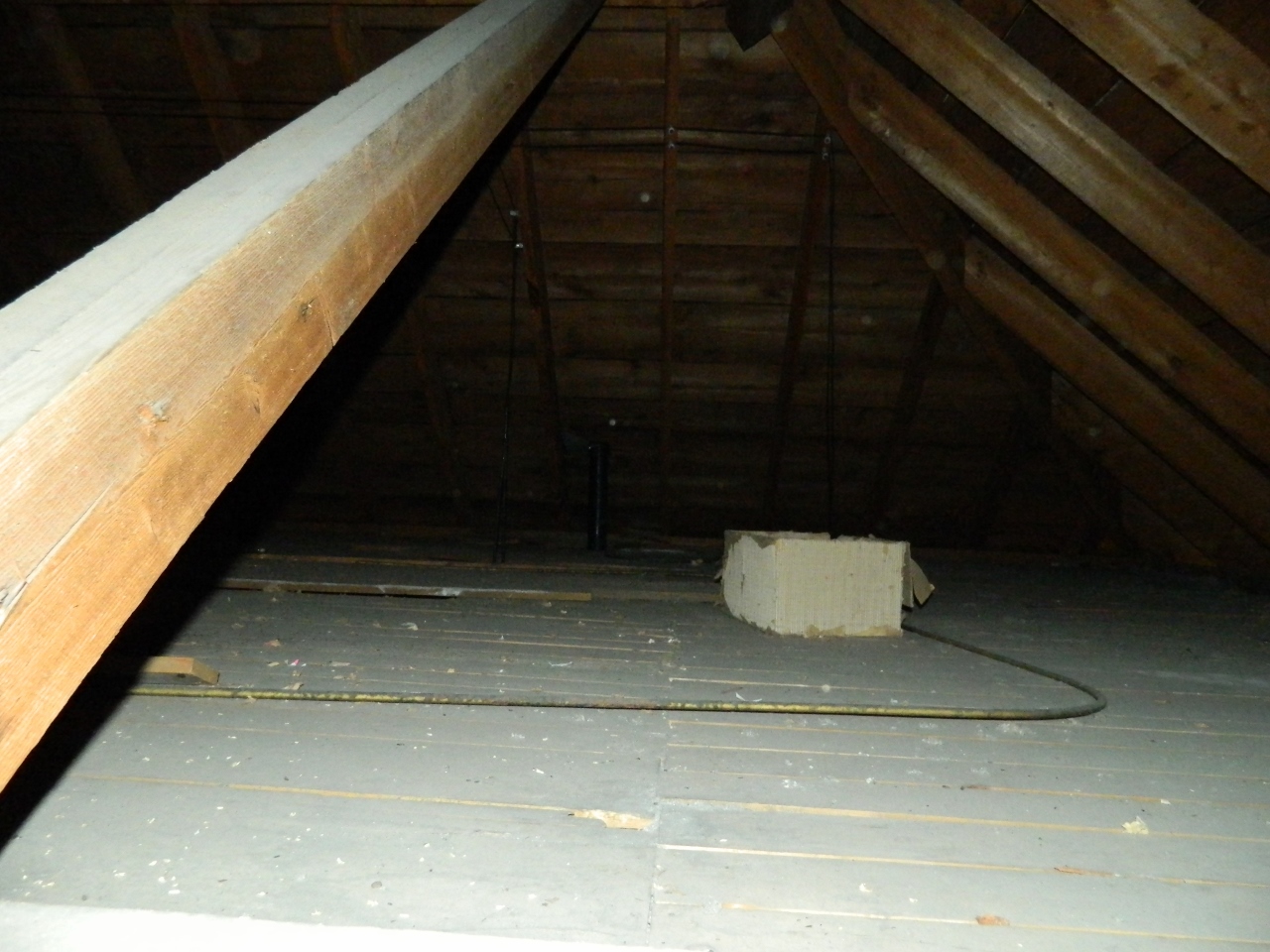
The Opera House Attic with one of its massive support beams
*
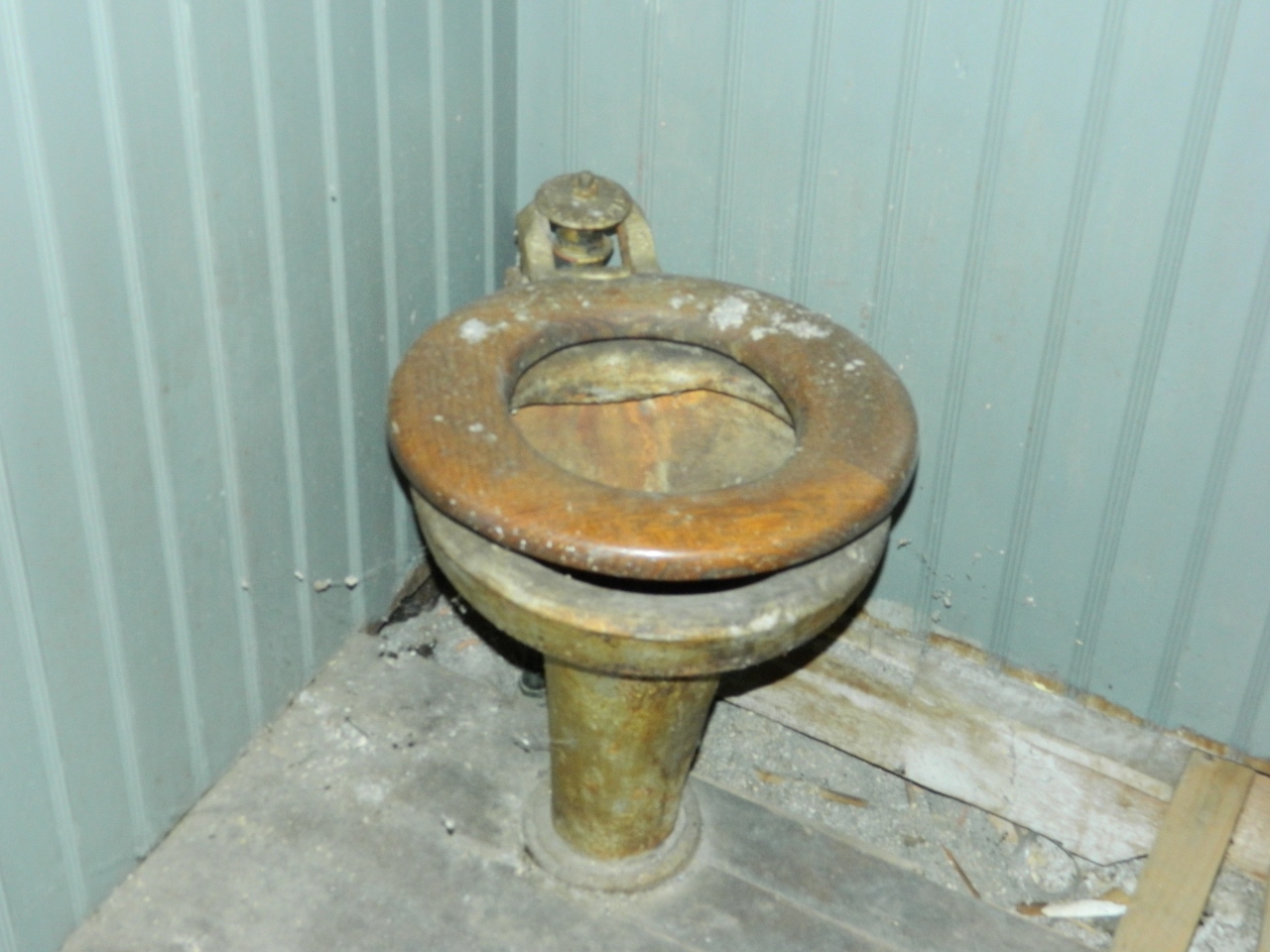
Vogel “Gold Toilet”
*
The Hartland Historical Society is grateful to the Town of Hartland for allowing us to retrieve numerous items from the building for preservation before its demolition. Over the course of a couple VERY labor intensive weekends, volunteers removed several large items including the long velvet benches, the kitchen stove, the “gold toilet” and many, many other items of historical interest with everything placed into various storage locations. Our goal is to one day display these items for public viewing when we (hopefully) secure a permanent home for the society.
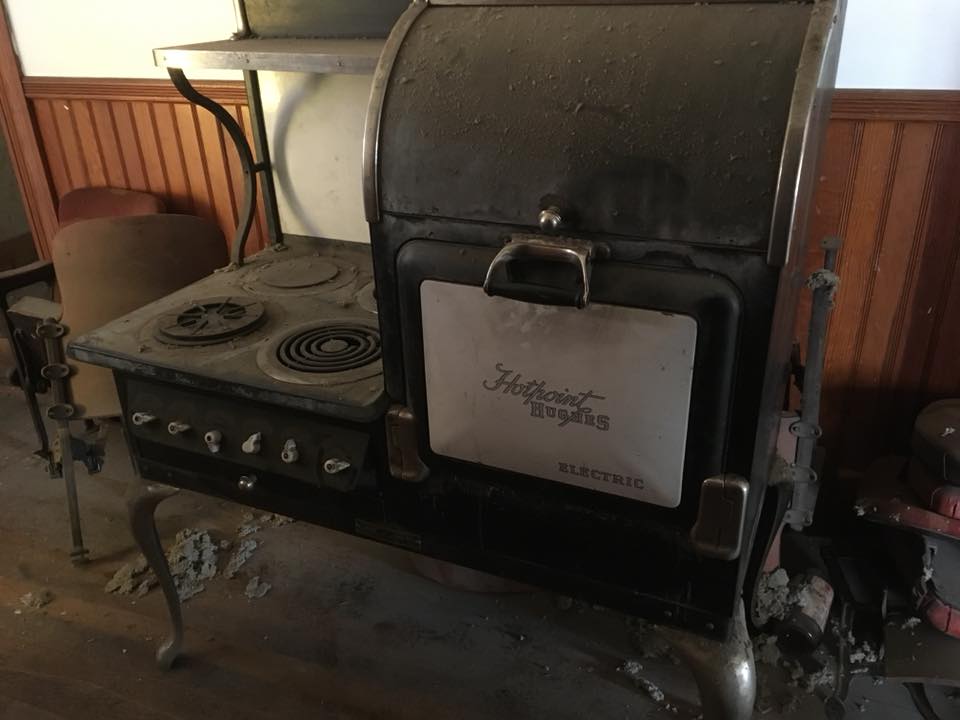
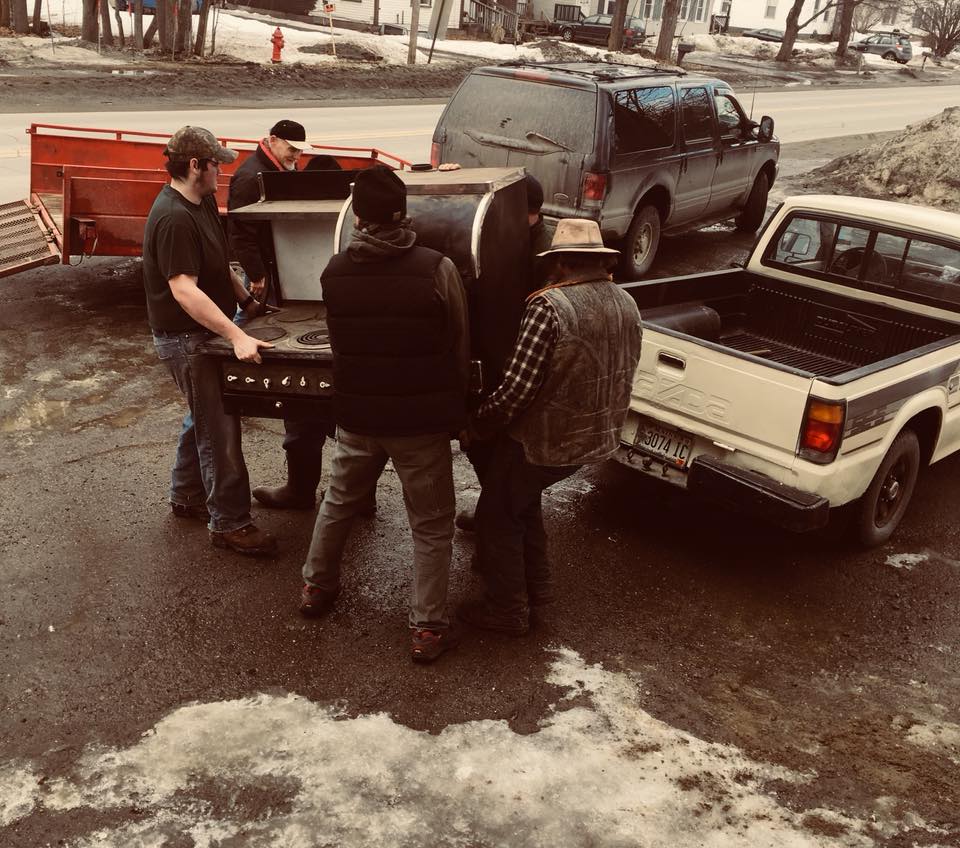
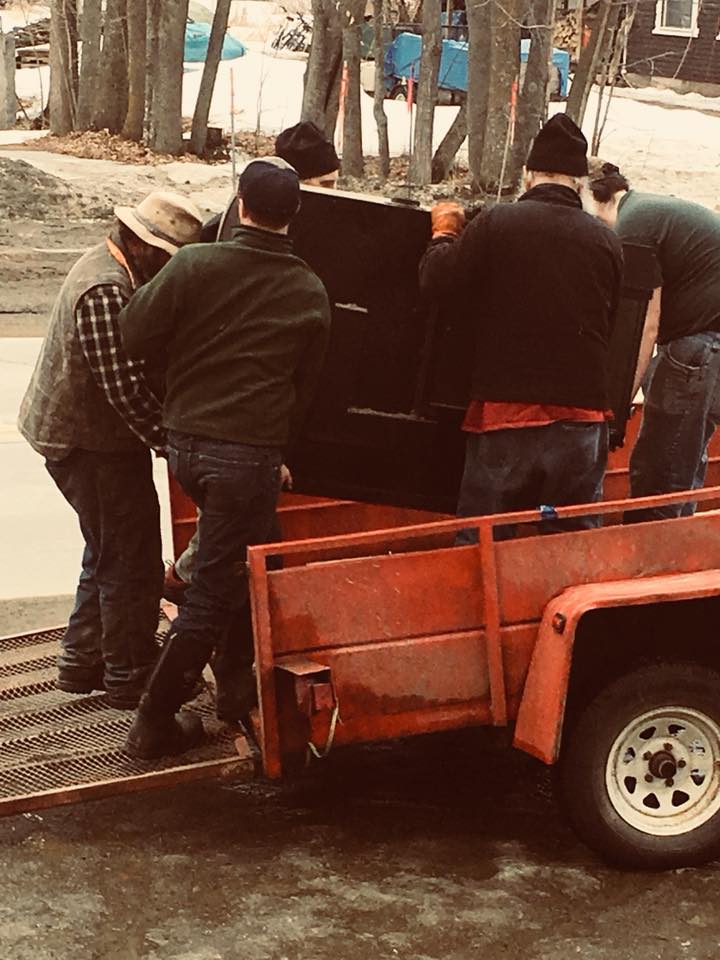
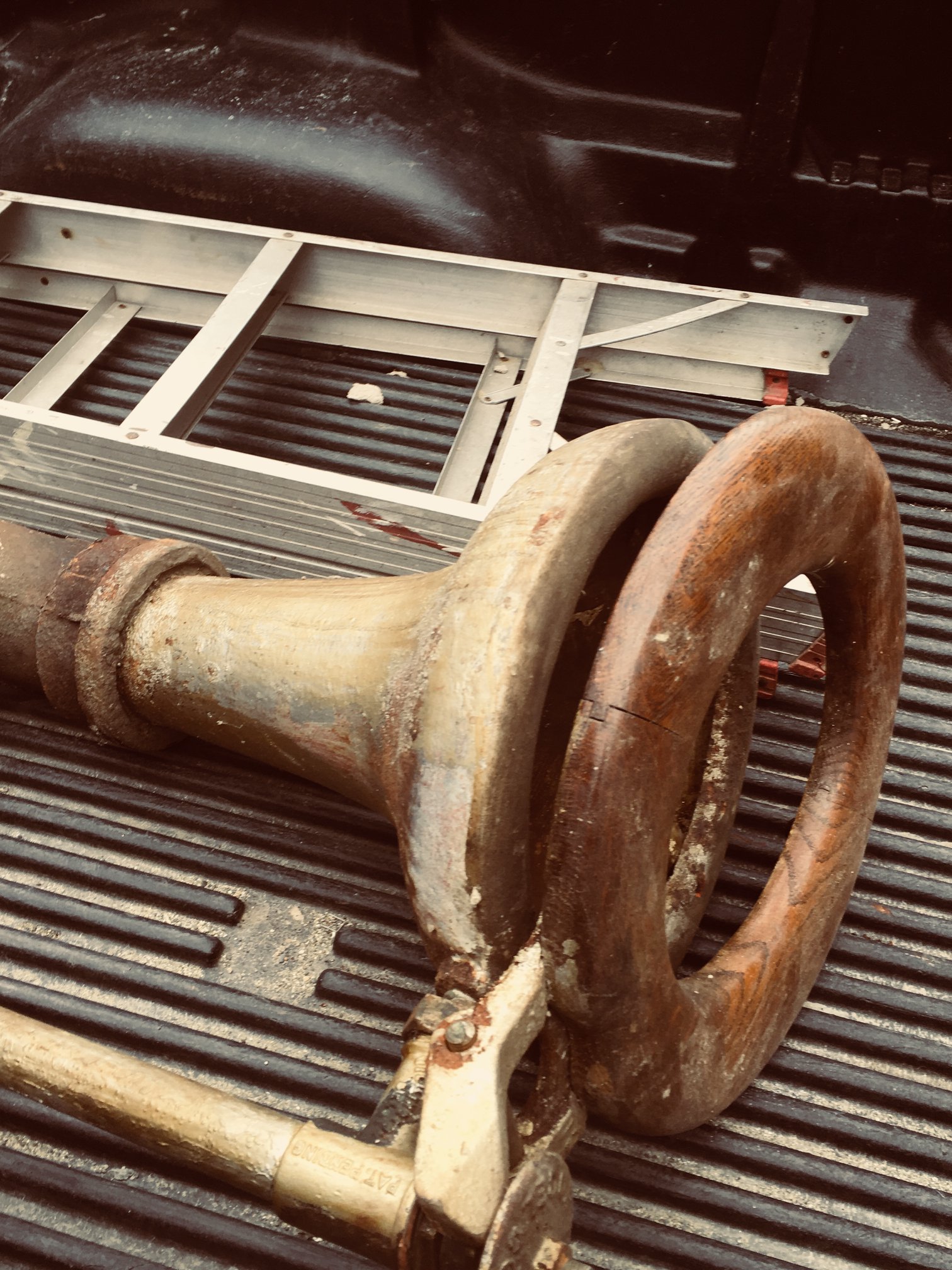
Hartland Historical Society Moving Day(s) for many Opera House Artifacts – 2018
*
The famous Vogel “Gold Toilet” was restored to near perfect condition by Hartland Historical Society Member Elmer Littlefield
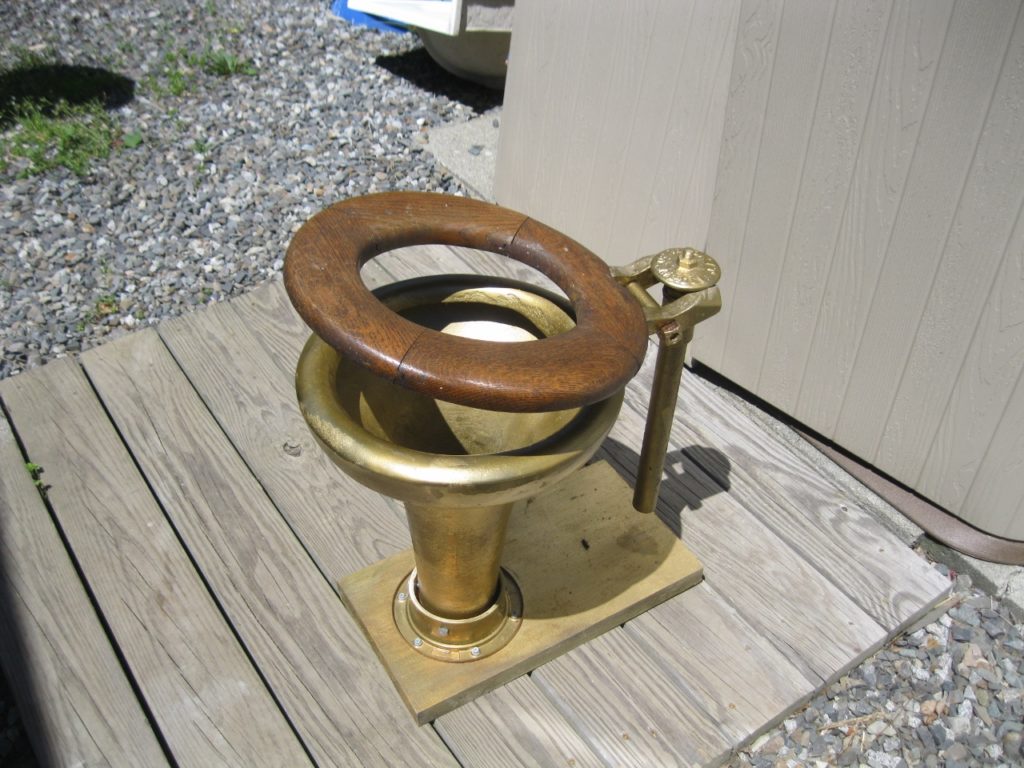
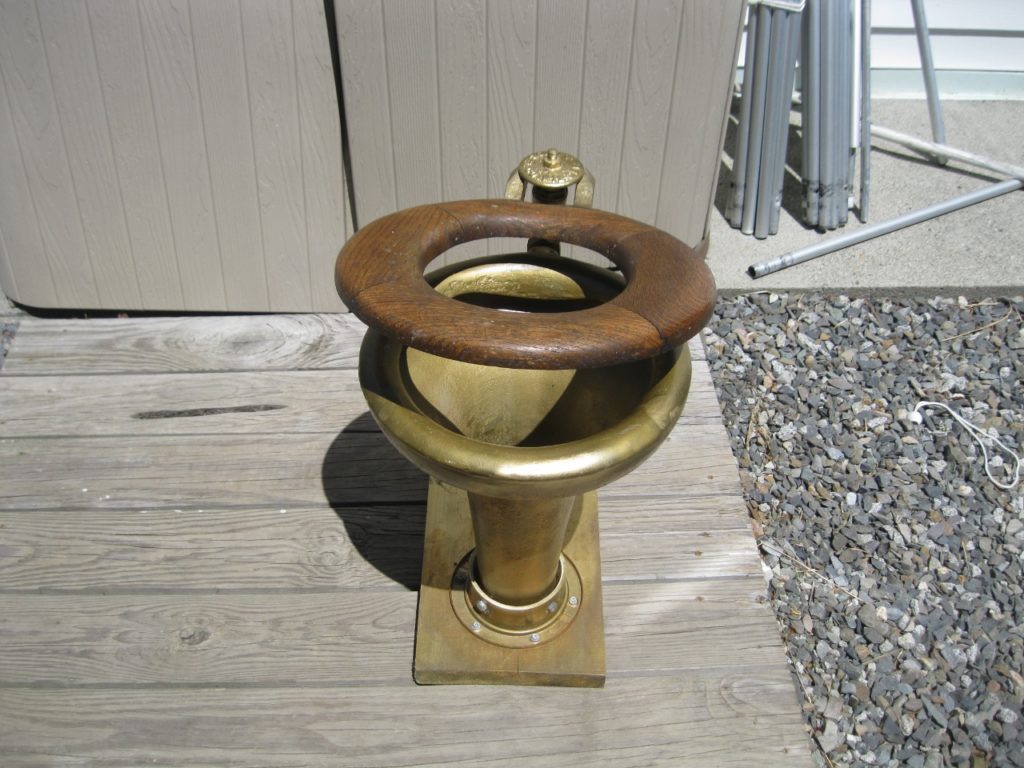
Restored Opera House Vogel “Gold Toilet”
*
With the Town Offices gone, the old deteriorated and now abandoned building was beyond saving without a very large financial investment. Previous arrangements had been made to sell it along with its small lot of land to a private owner with plans for demolition. In December of 2018, the building was razed as documented by photos taken by a few local residents.
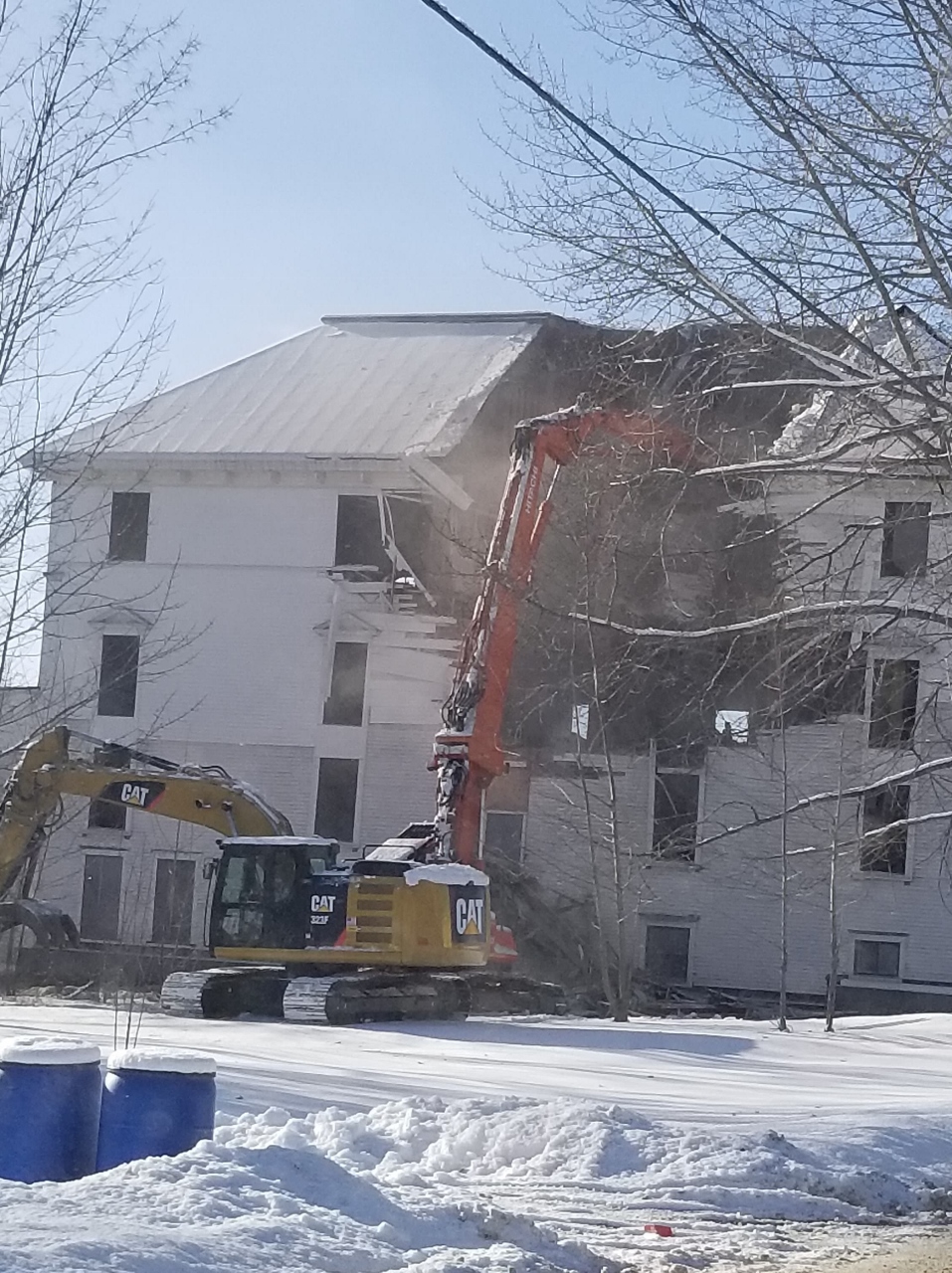
*
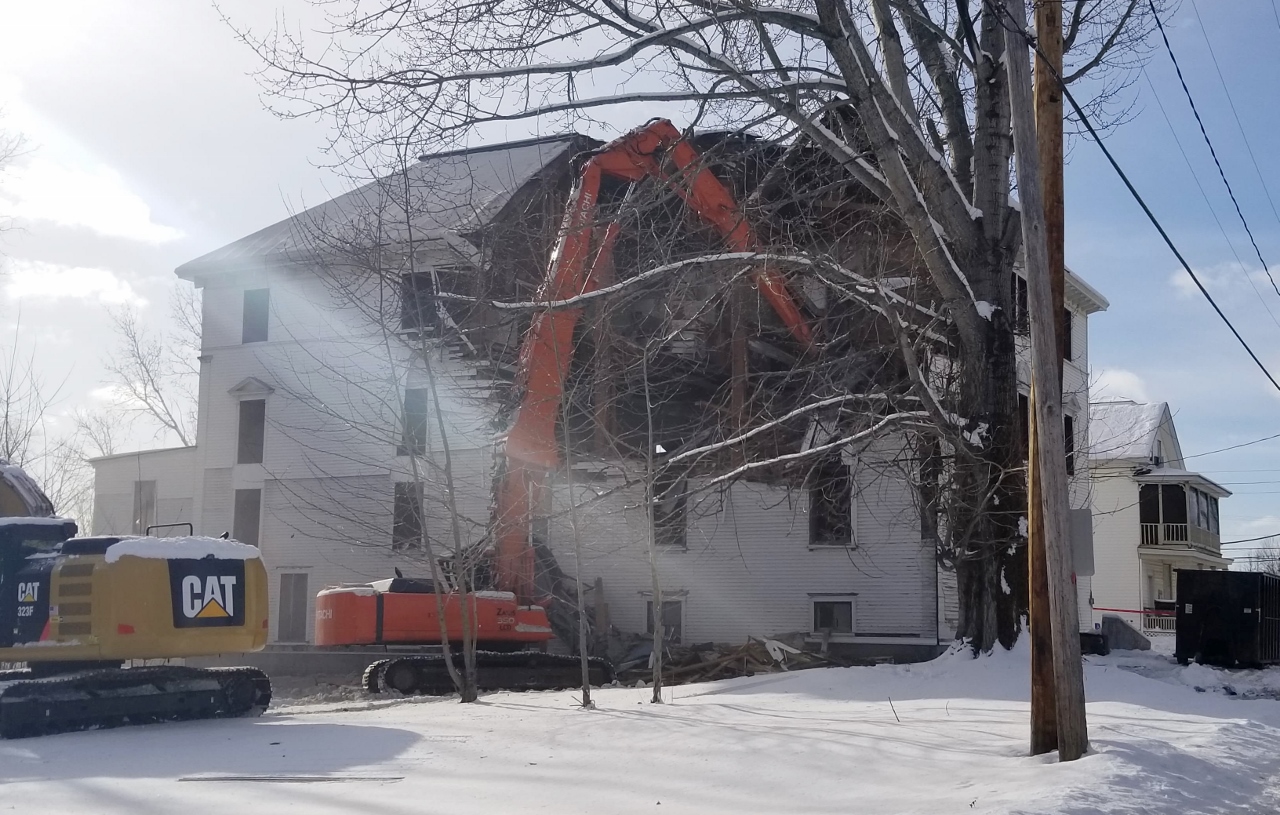
*
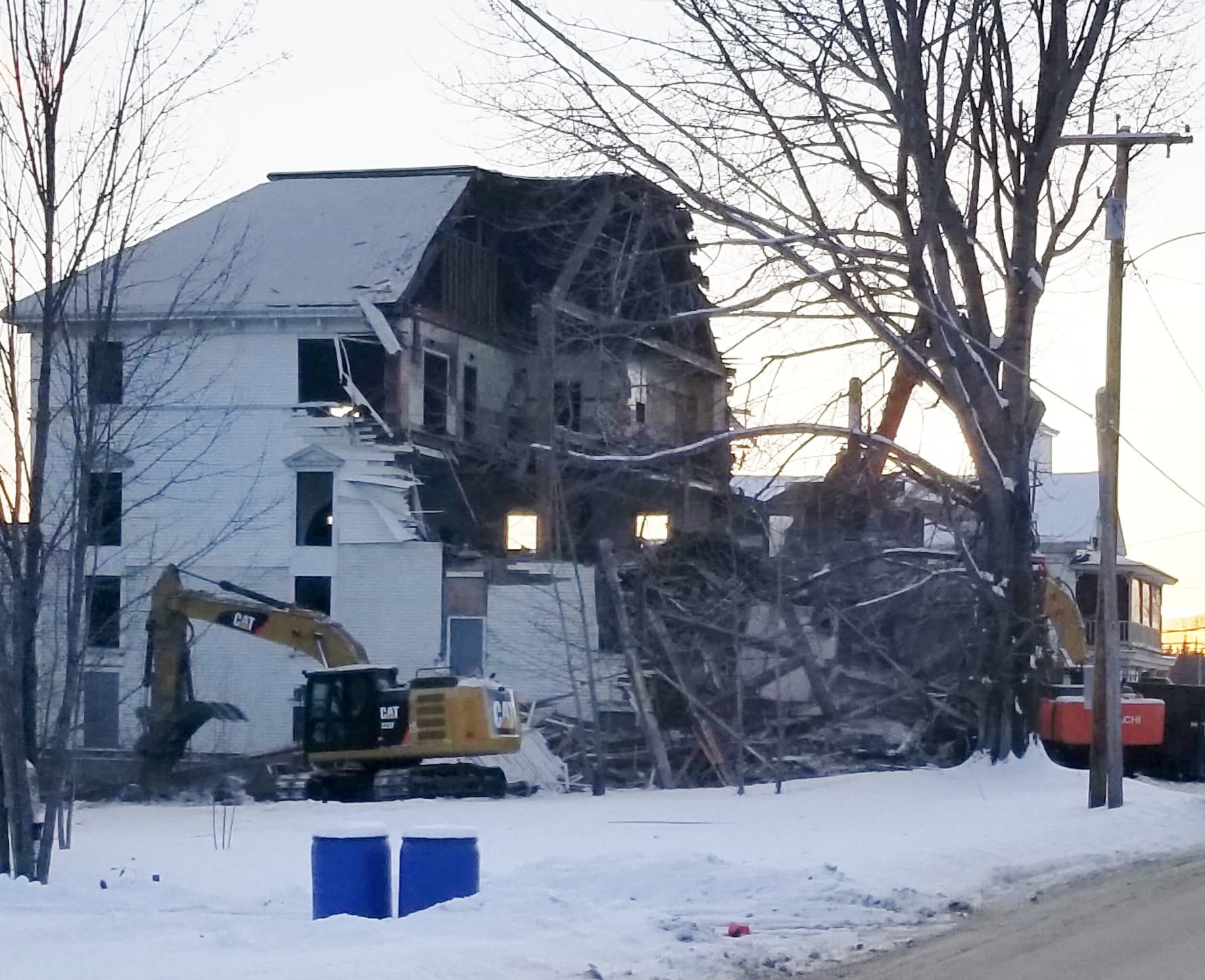
*
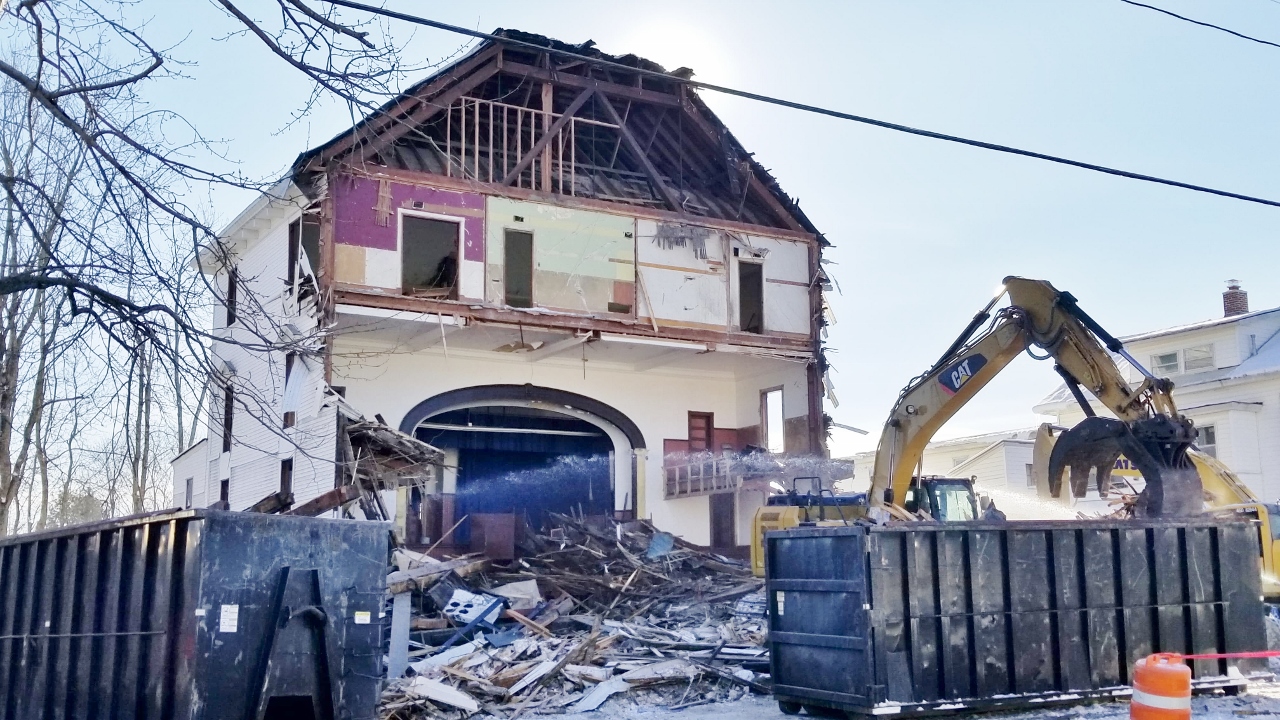
*
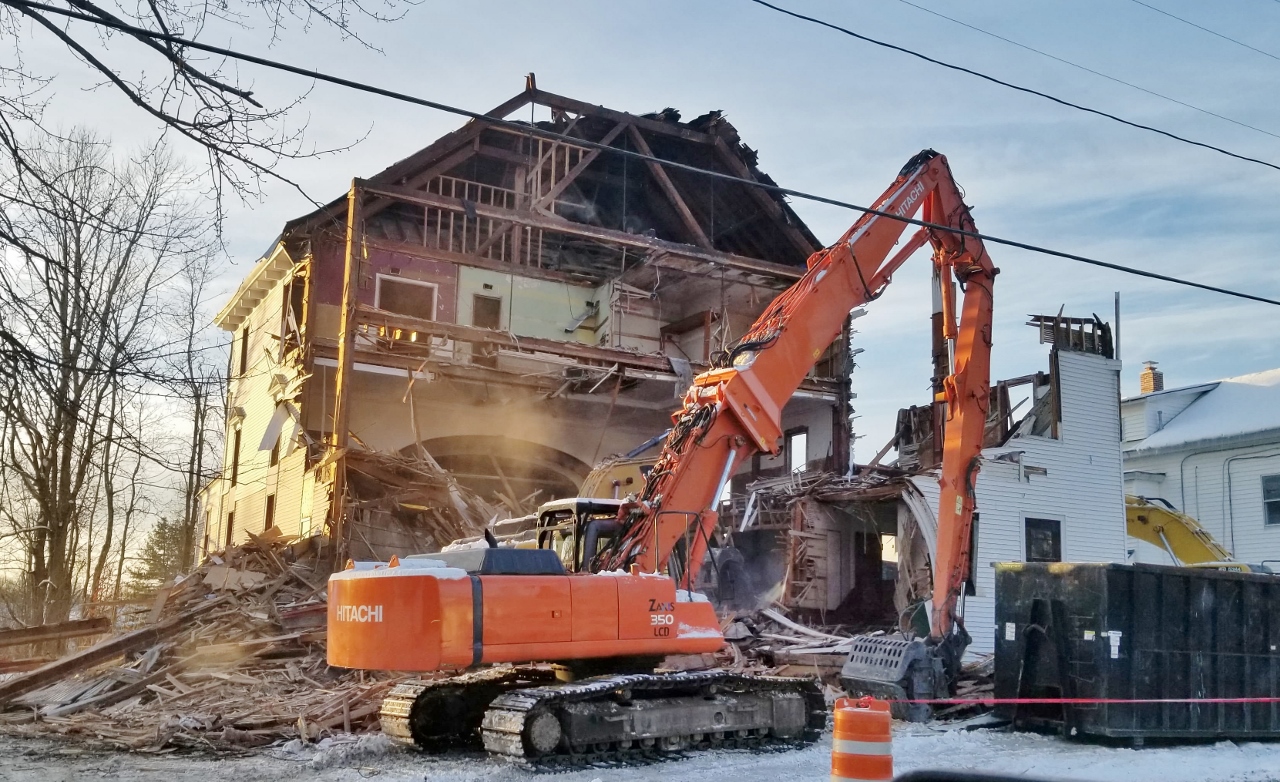
*
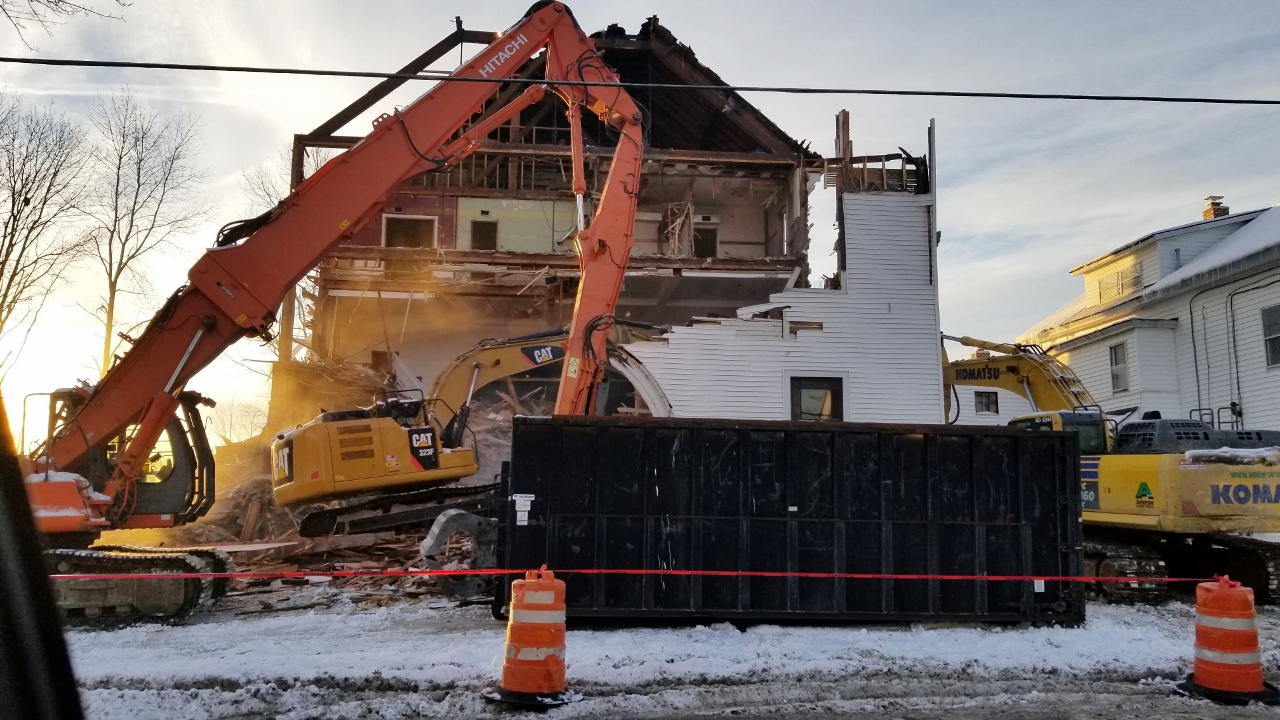
*
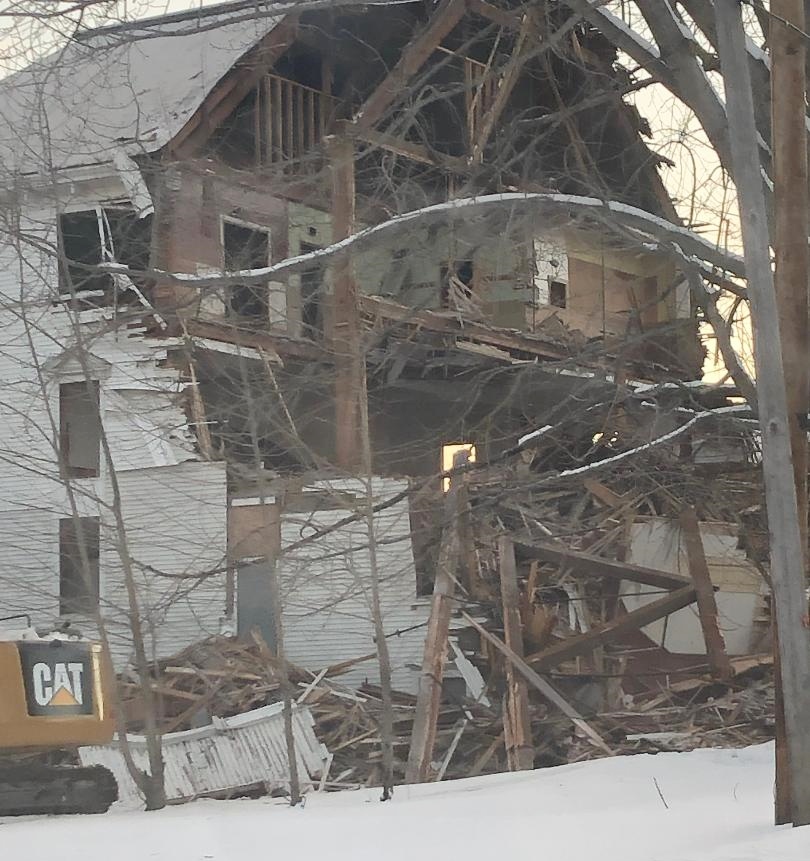
*

*
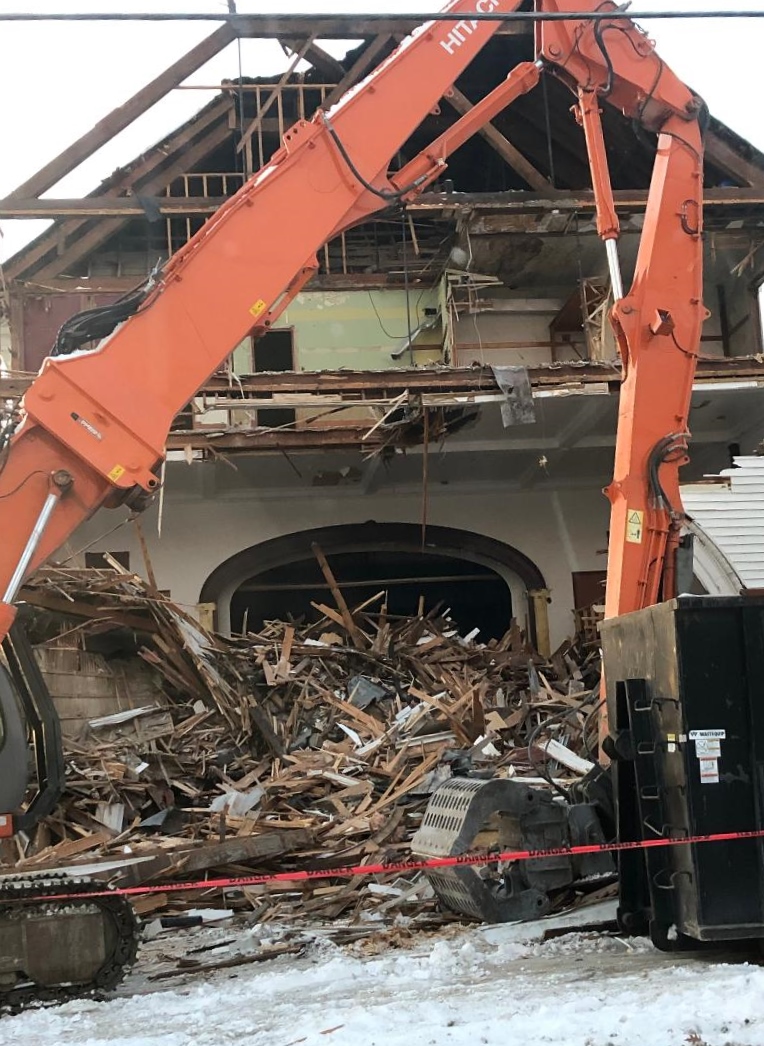
*

*
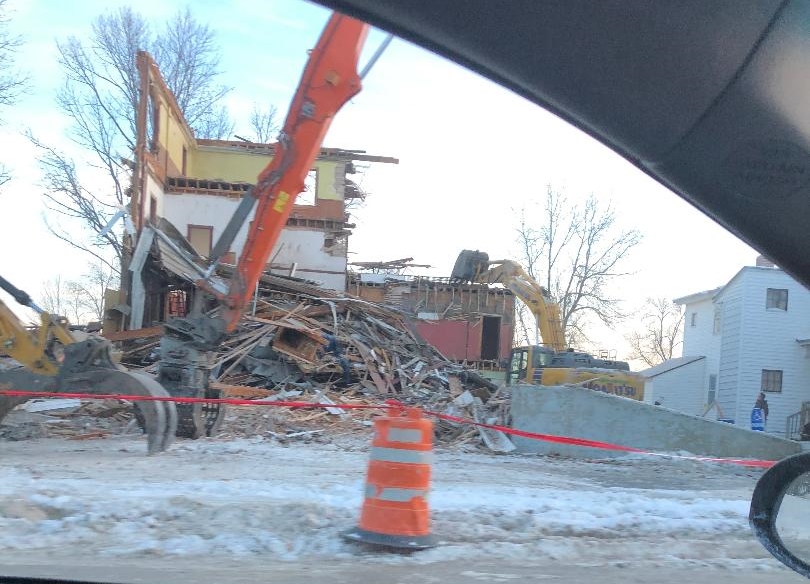
*
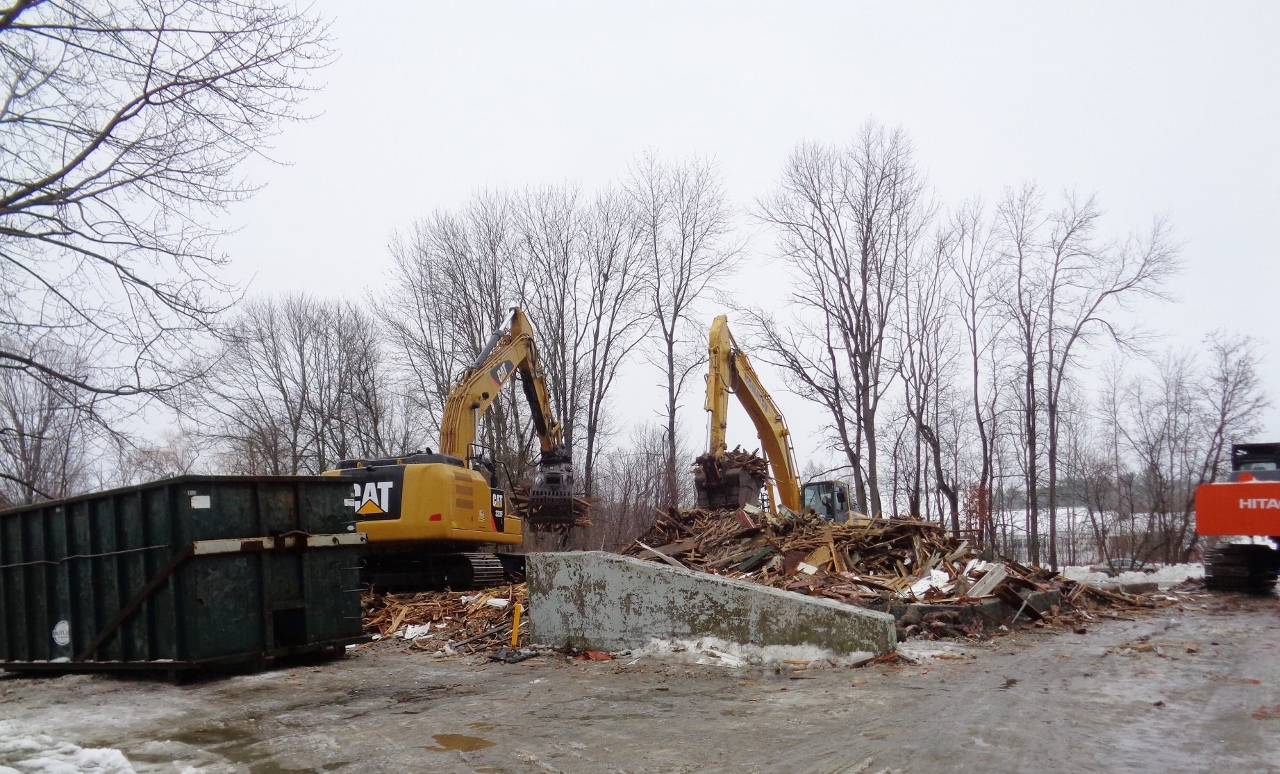
All but a pile of remaining rubble marked the end of The Opera House ~ Town Hall – December 2018
*
The citizens of Hartland, both current and former, bid a sad but fond farewell as we remember 125+ years of service to the community.
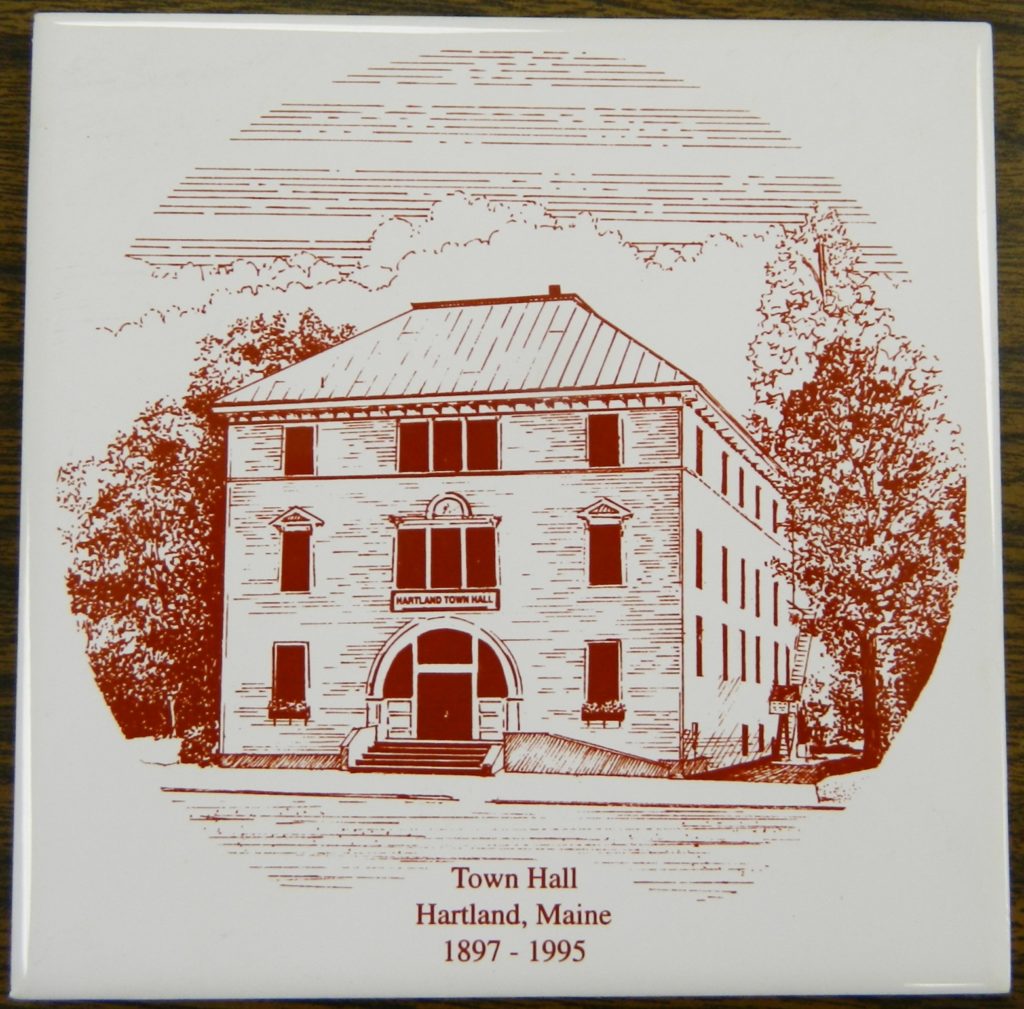
Commemorative Tile made for Hartland’s 175th Incorporation Anniversary in 1995